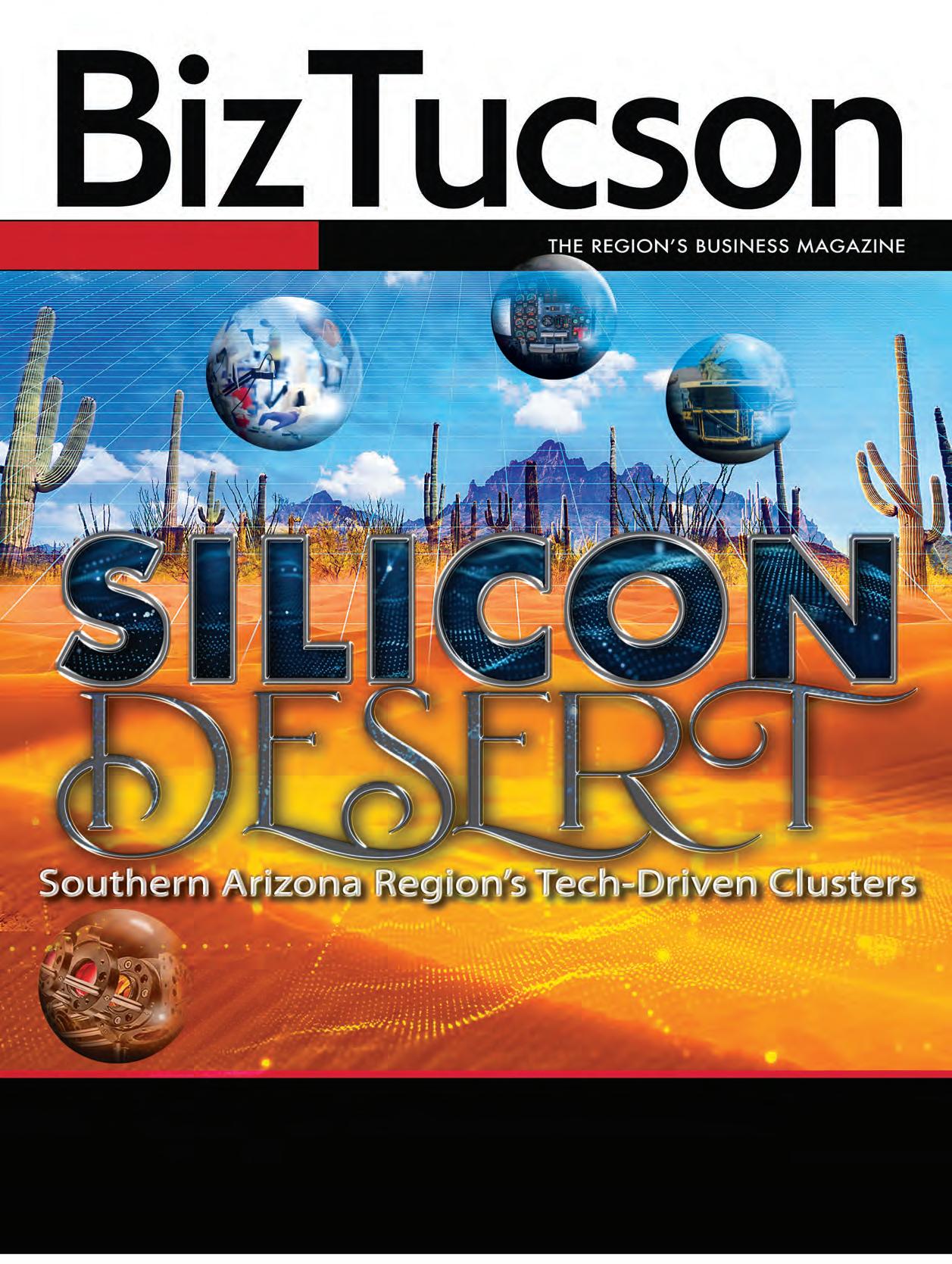
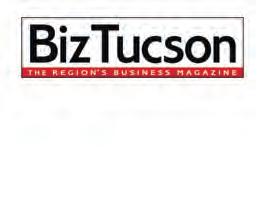

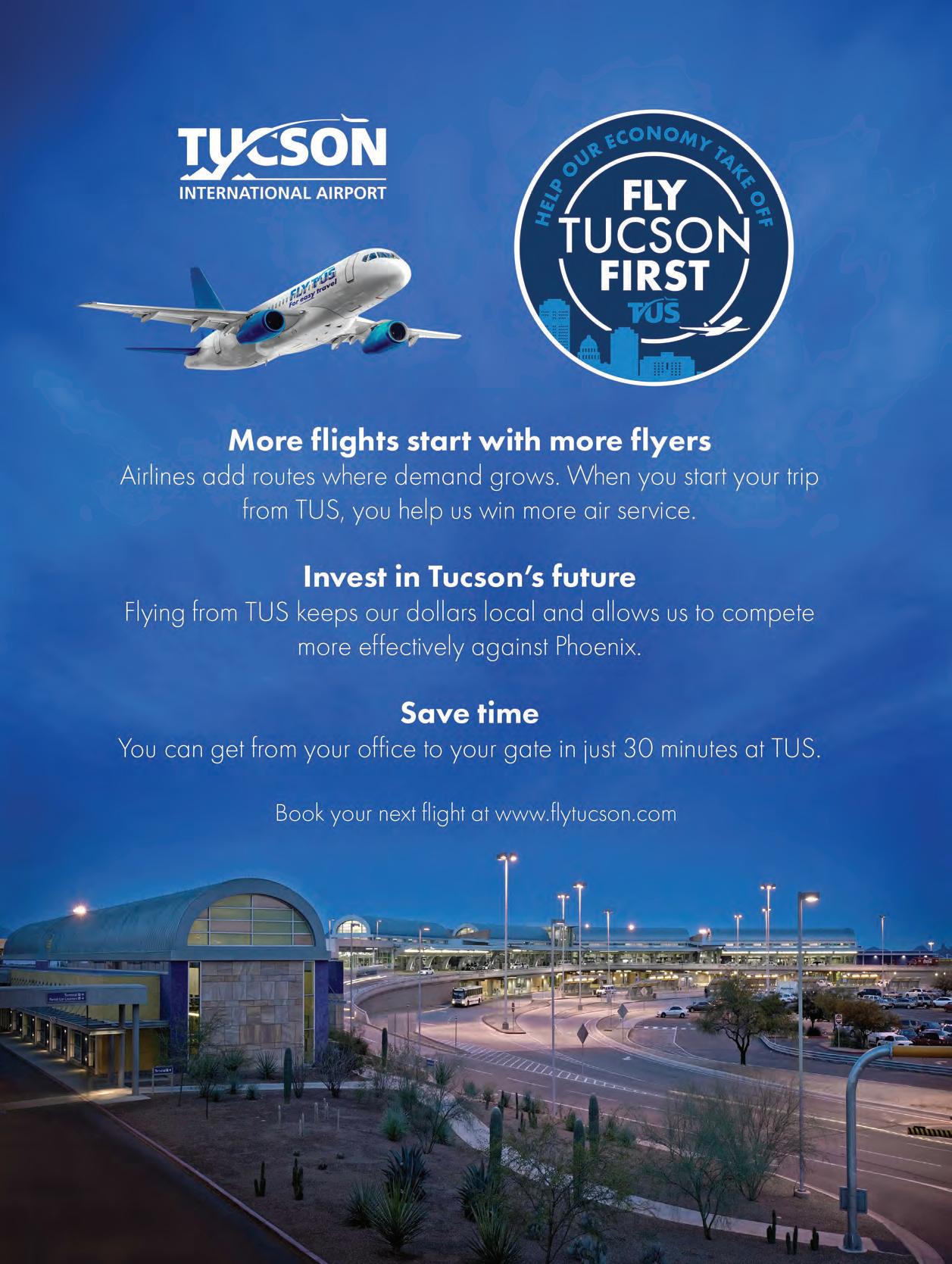





Six years ago, Calline Sanchez looked around Tucson’s tech landscape and liked what she saw. IBM’s VP of Tech nology Services Competitive Strategy saw so much progress and potential for more that she called the region a “Sili con Desert.”
“Tucson is actively developing an ecosystem that welcomes and supports technology companies,” she said. “As much as Santa Clara and San Jose are the heart of the Silicon Valley, Tucson is a geo-rival for technology break throughs. With companies like IBM, local technology clusters and support organizations, the Silicon Desert is here, it is growing, and it is making a difference.”
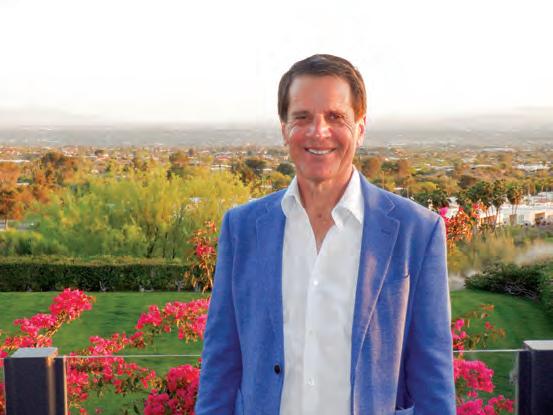
Fall 2025 Volume 17 No. 3
Publisher & Owner Steven E. Rosenberg
Creative Director Brent G. Mathis
Contributing Editors Jay Gonzales Tara Kirkpatrick Loni Nannini
Editor Emeritus Donna Kreutz
Contributing Writers
April Bourie
Rodney Campbell
Jay Gonzales
Journalists Rodney Campbell and Tara Kirkpatrick set the tone for our focus on the region’s tech-driven sectors, providing good context for the entire state as well. “With deference to Phoenix, an accelerating center for the semiconductor industry and data center development, Southern Arizona is becoming a bigger player. This region, which has long valued innovation, continues to cultivate a tech-supportive legacy,” they write.
Consider the competitive University of Arizona and its commercialization engine and Pima Community College for its commitment to tech talent. Industry kingpins Raytheon, Roche Tissue Diagnostics, IBM, Texas Instruments, Caterpillar and Hexagon Mining have all established and expanded operations here to reinforce a Silicon Desert.
It’s an exciting time for the region, as IBM recently renewed its commitment to Southern Arizona with a 15-year lease at UA Tech Park. Texas Instruments also expanded its presence with an $11.6 million purchase of a landmark office building in Williams Centre. Tucson also has a rich tech history. In 2000, Texas Instruments acquired homegrown success story Burr-Brown for $7.6 billion, in an all-stock deal. Founder Thomas R. Brown, who launched Burr-Brown on the potential of transistors out of his garage in 1956, is arguably the “father” of our tech sector. Likewise, Dr. Thomas Grogan, a UA pathologist, is that for biotech, founding Ventana Medical Systems in 1985, as a global pioneer in cancer tissue diagnostics. Swiss drug giant Roche acquired VMS in 2008 for $3.8 billion
We include updates from the techdriven clusters of Biotech, Aerospace & Defense, Mining & Surface Technology and Optics & Photonics. Our team reports on UA innovations, PCC workforce development, Tech Launch Arizona, Tech Parks Arizona, our adaptive Entrepreneurial Ecosystem, successful tech ventures and promising startups.
This issue features two Special Reports. One focuses on El Rio Health at 55: Building a Health Home for Life. Journalist Loni Nannini files a compelling package. “Having your health home at El Rio Health is a patient-centered, team-based model of care that supports every stage of life,” said Clinton Kuntz, DBH, CEO of El Rio Health, which has 15 health centers throughout Tucson.
Our other report profiles UA’s Eller College of Management. It’s fitting that one of the lead stories by journalist Dave Perry is titled “The Eller Effect,” an apt phrase that underscores the college’s innovative graduate business education. Eller certainly has the academic reputation; it’s Management Information Systems is once again rated among the top three best public university offerings of its kind by U.S. News & World Report.
Also in this issue, BizTucson highlights the change of command at DavisMonthan Air Force Base as well as the positive impact Snoop Dogg’s sponsorship on the Arizona Bowl, and much more.
Tara Kirkpatrick
Tiffany Kjos
Christy Krueger
Contributing
Photographers
Thomas Leyde
Loni Nannini
Dave Perry
Steve Rivera
Valerie Vinyard
Brent G. Mathis
Chris Mooney
BizTucson News Update (Email Newsletter) Brent G. Mathis
BizTucson.com Tara Kirkpatrick
Contributing Technology Director Mike Serres
Contributing Project Coordinator Maricela Robles
Member:
American Advertising Federation Tucson
DM-50
Metropolitan Pima Alliance
Oro Valley Chamber
Southern Arizona Leadership Council
The Chamber of Southern Arizona
BizTucson Magazine Issue 4 (ISSN 1947-5047 print, ISSN 2833-6739 online) is published quarterly for $16 per year by Rosenberg Media, LLC., 4729 E. Sunrise Dr., PMB 505, Tucson, AZ 85718-4534. Periodicals postage pending at Phoenix, AZ, and additional mailing offices.
POSTMASTER: Send address changes to: BizTucson Magazine, 4729 East Sunrise Dr., PMB 505, Tucson, AZ 85718-4534
© 2025 All rights reserved. Reproduction in whole or in part without written permission is prohibited. Opinions expressed in columns or articles do not necessarily reflect the views of the publisher.
BizTucson
Phone: 520.299.1005
Subscription Information: BizTucson.com subscriptions@BizTucson.com
Advertising information:
Steve Rosenberg
Biz
As always, we are grateful for our loyal readers, our advertisers and our team, committed to exceptional journalism, along with innovative design and photography.
Steven E. Rosenberg Publisher & Owner BizTucson
520.299.1005 or 520.907.1012 steve@BizTucson.com



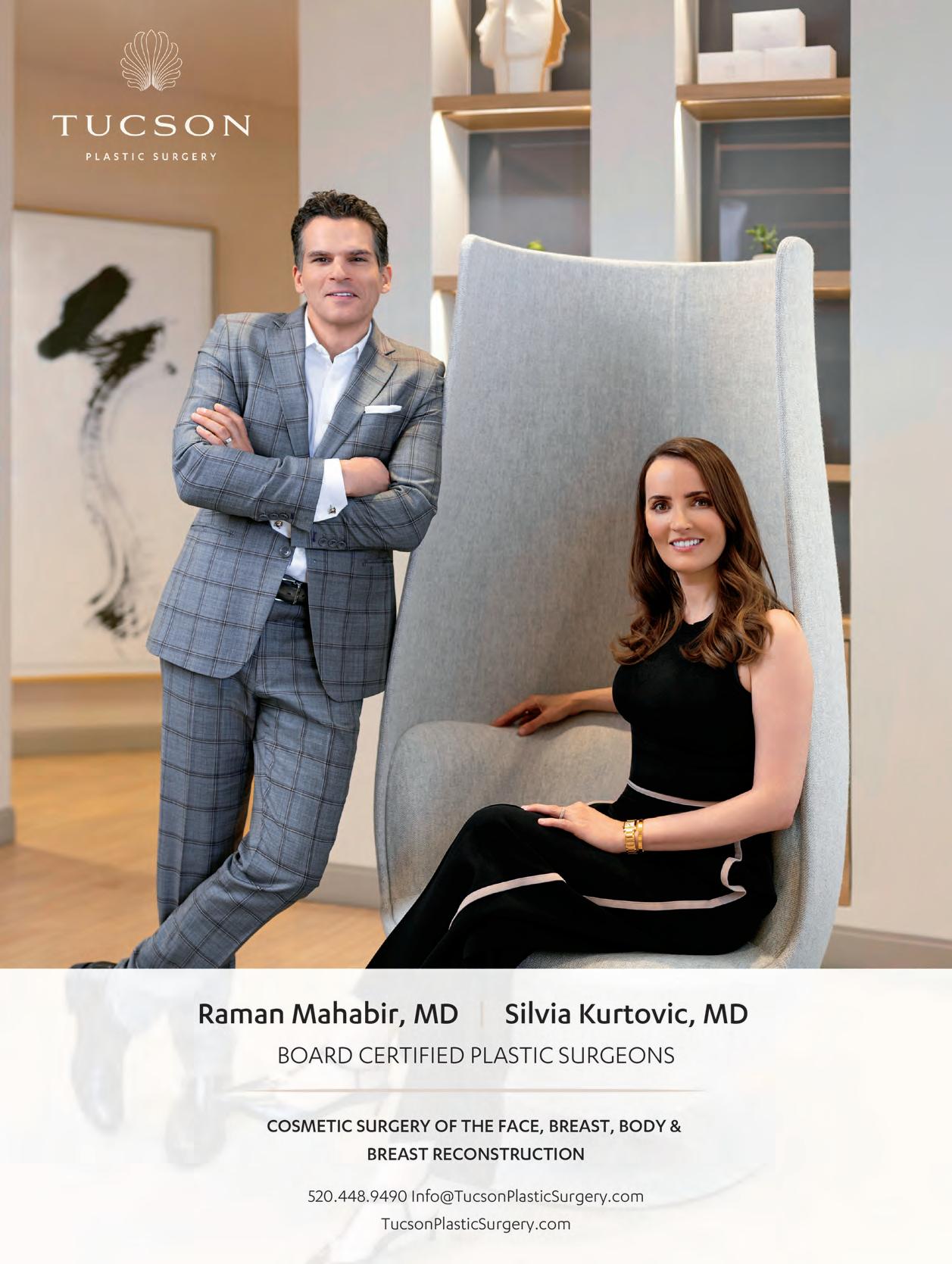


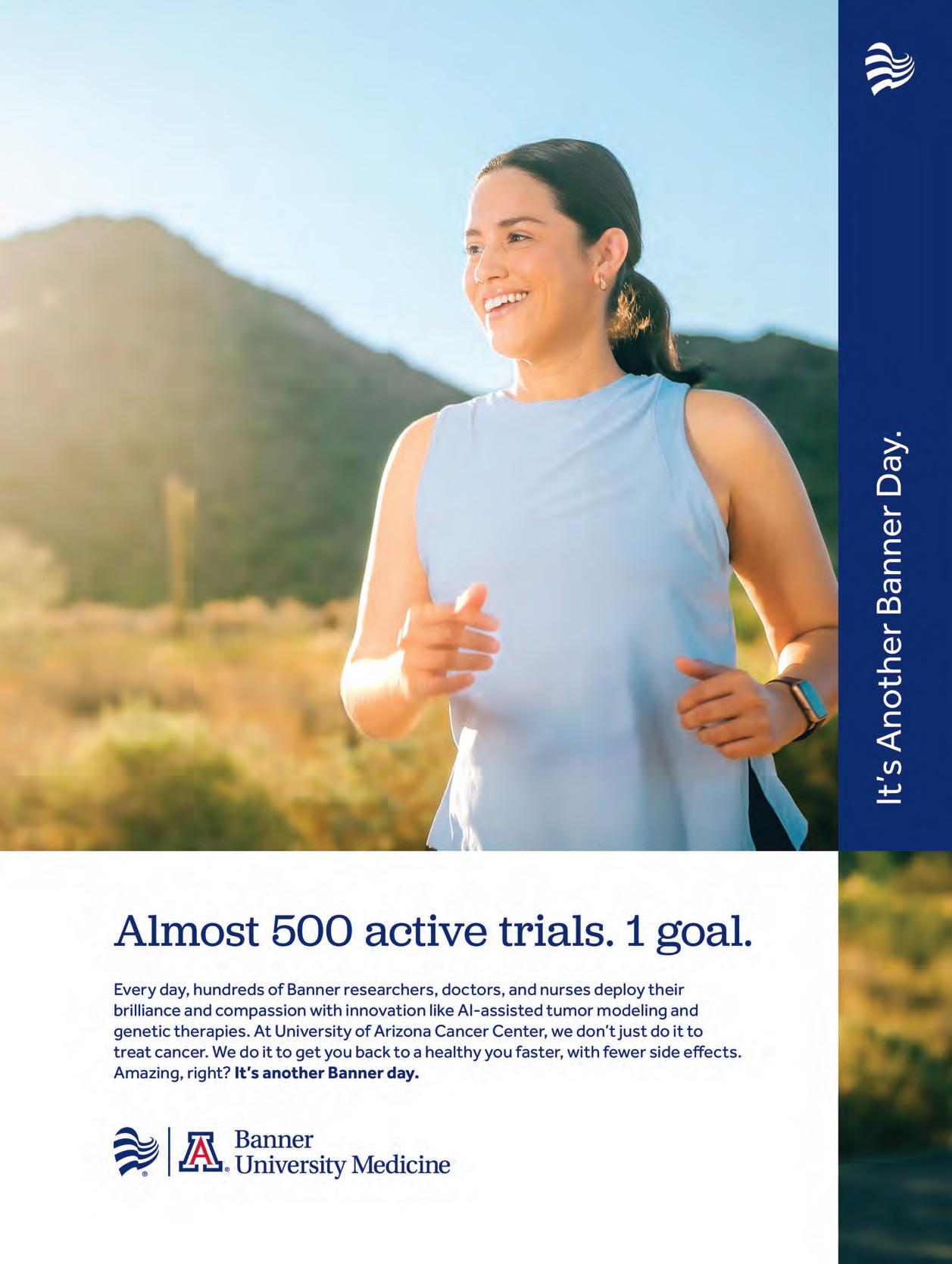



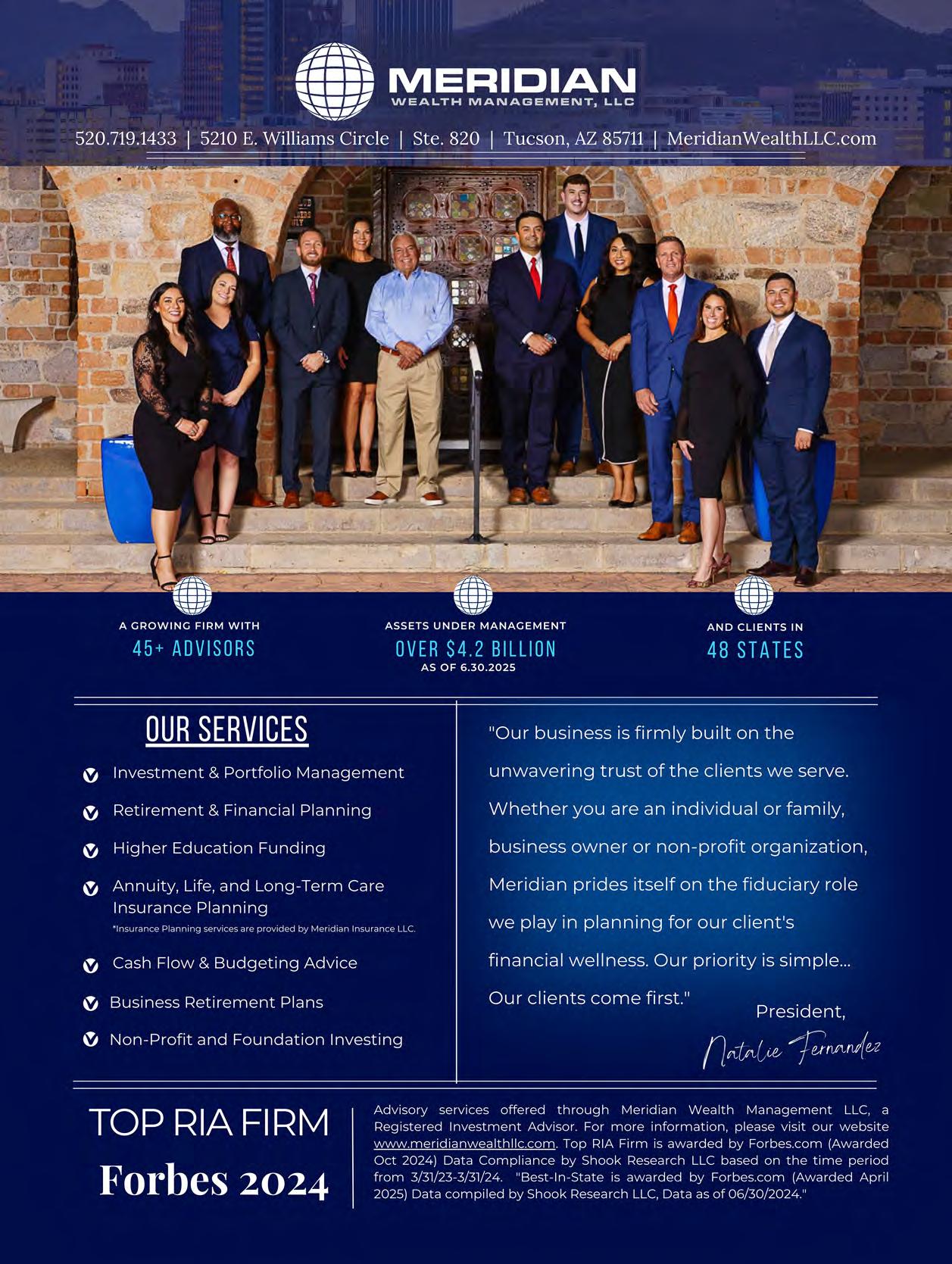




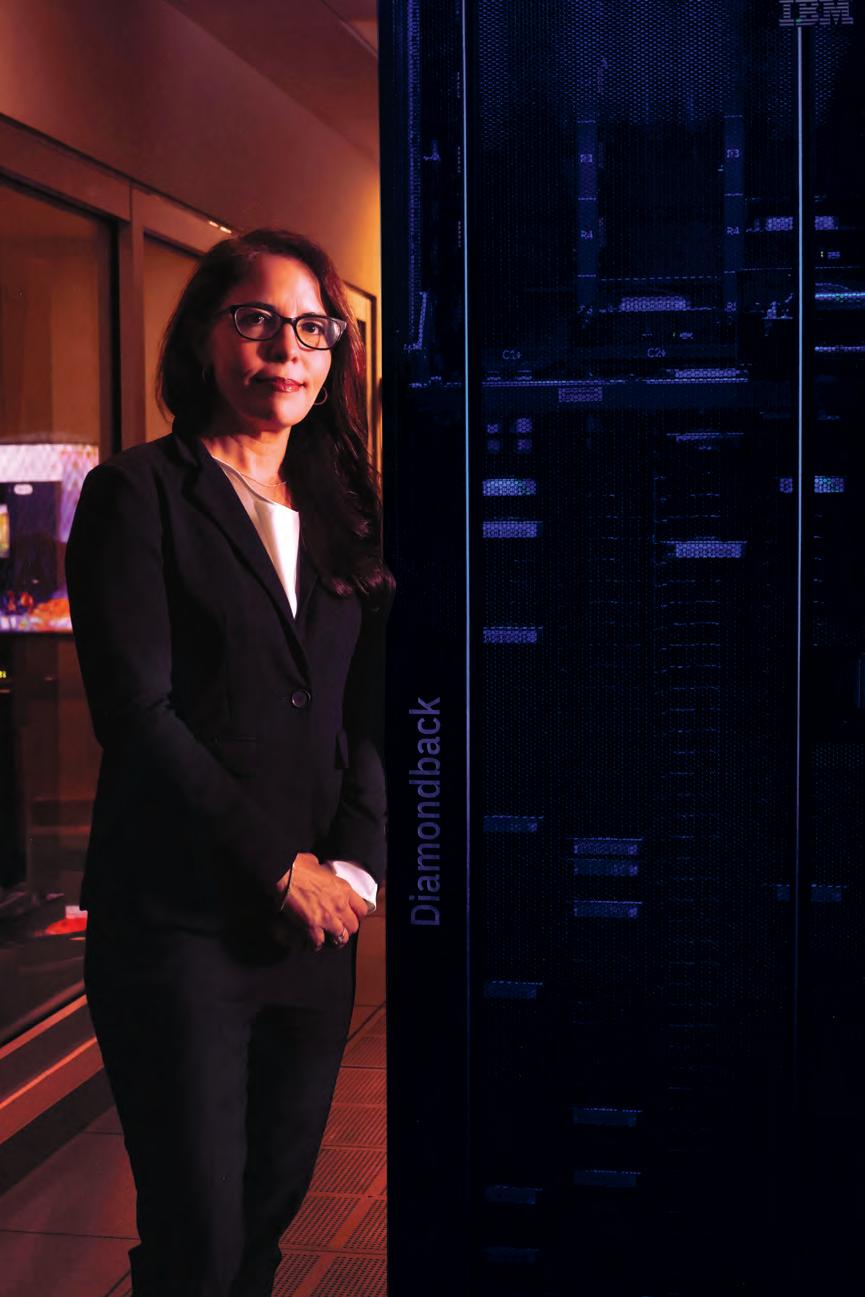

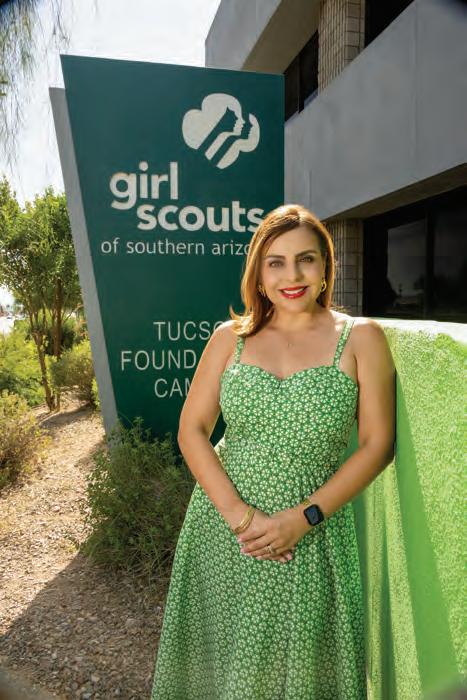
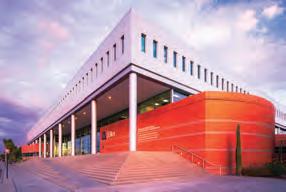

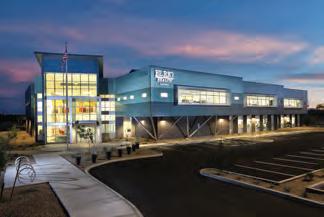













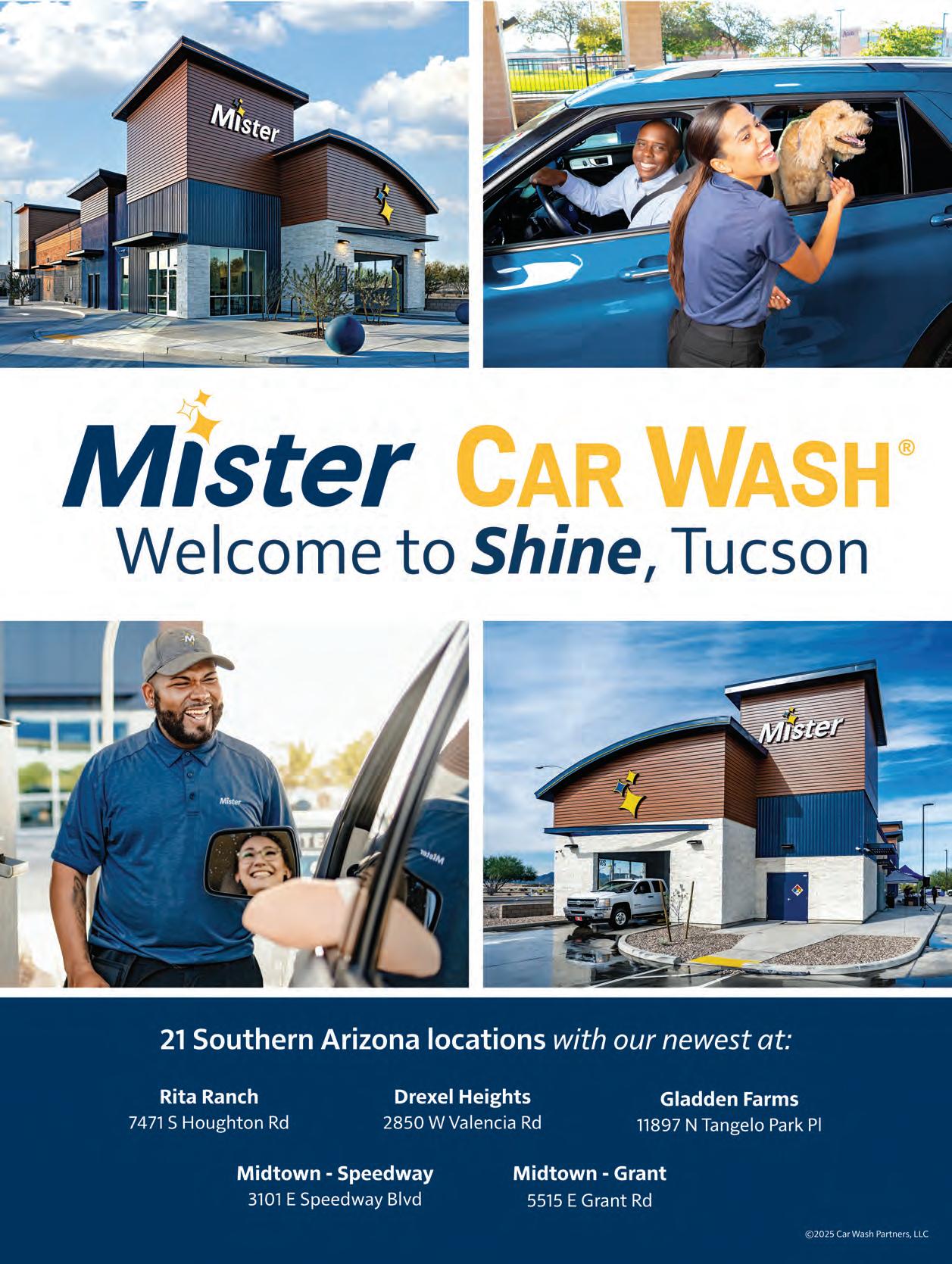
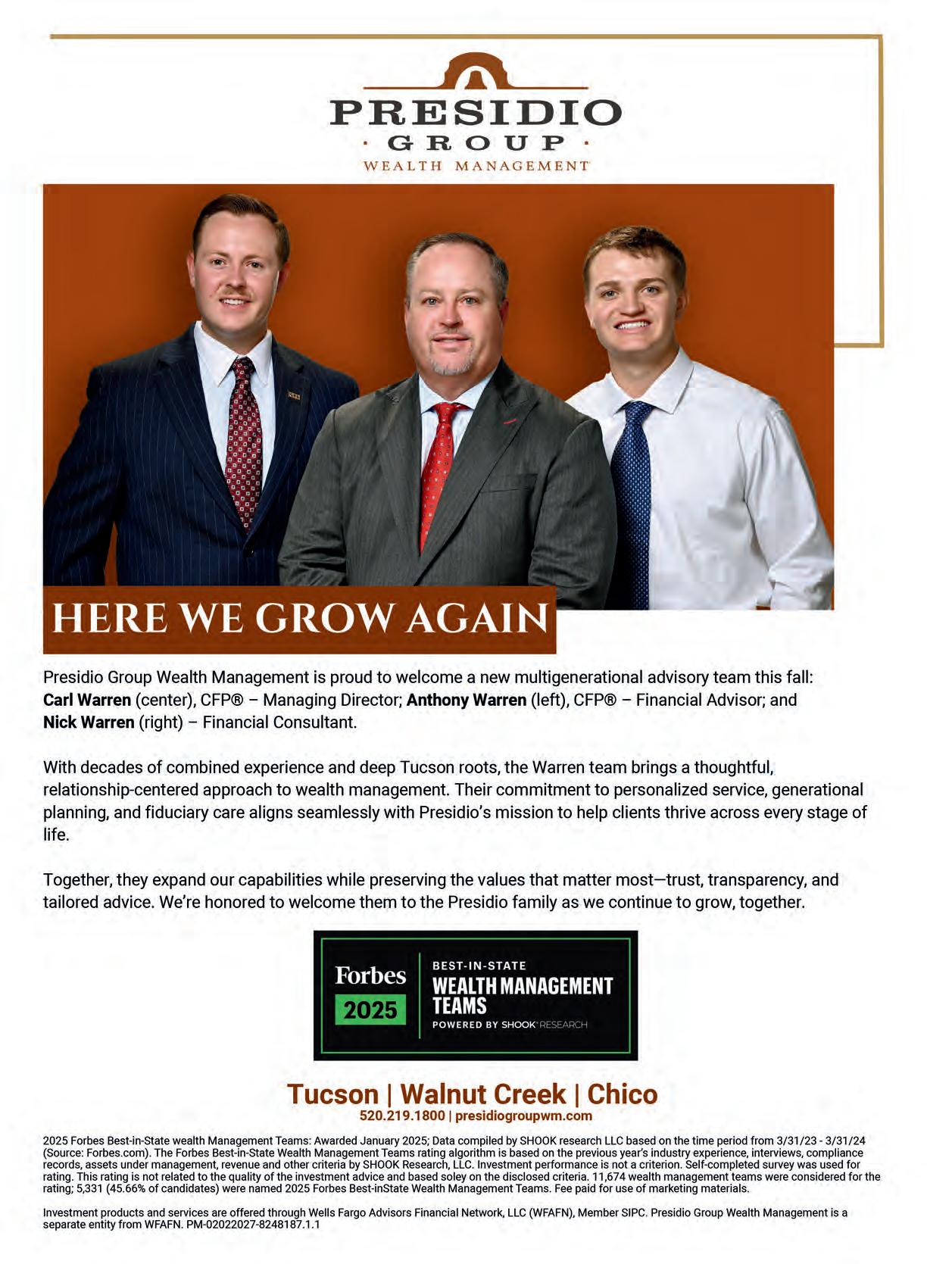


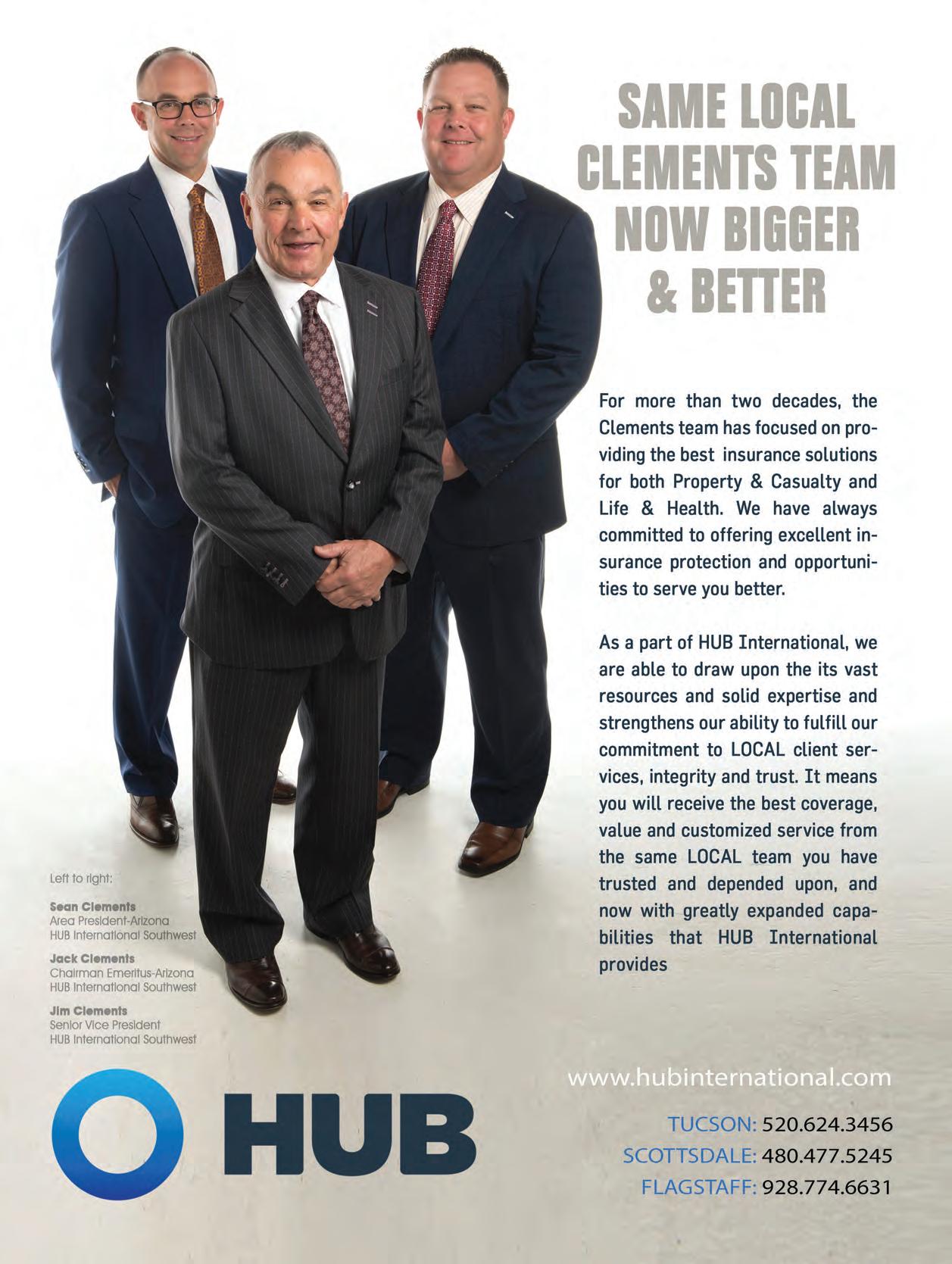



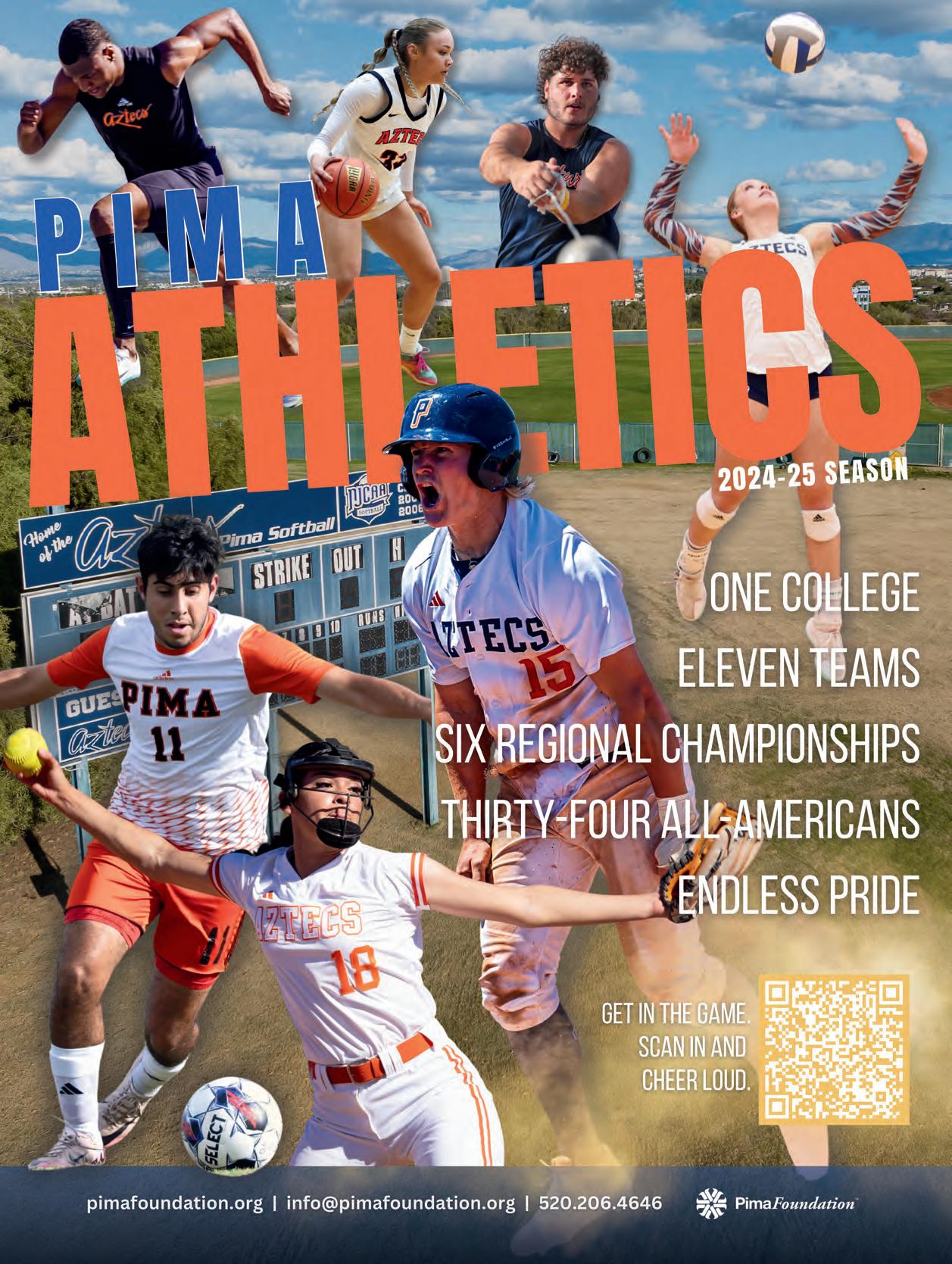
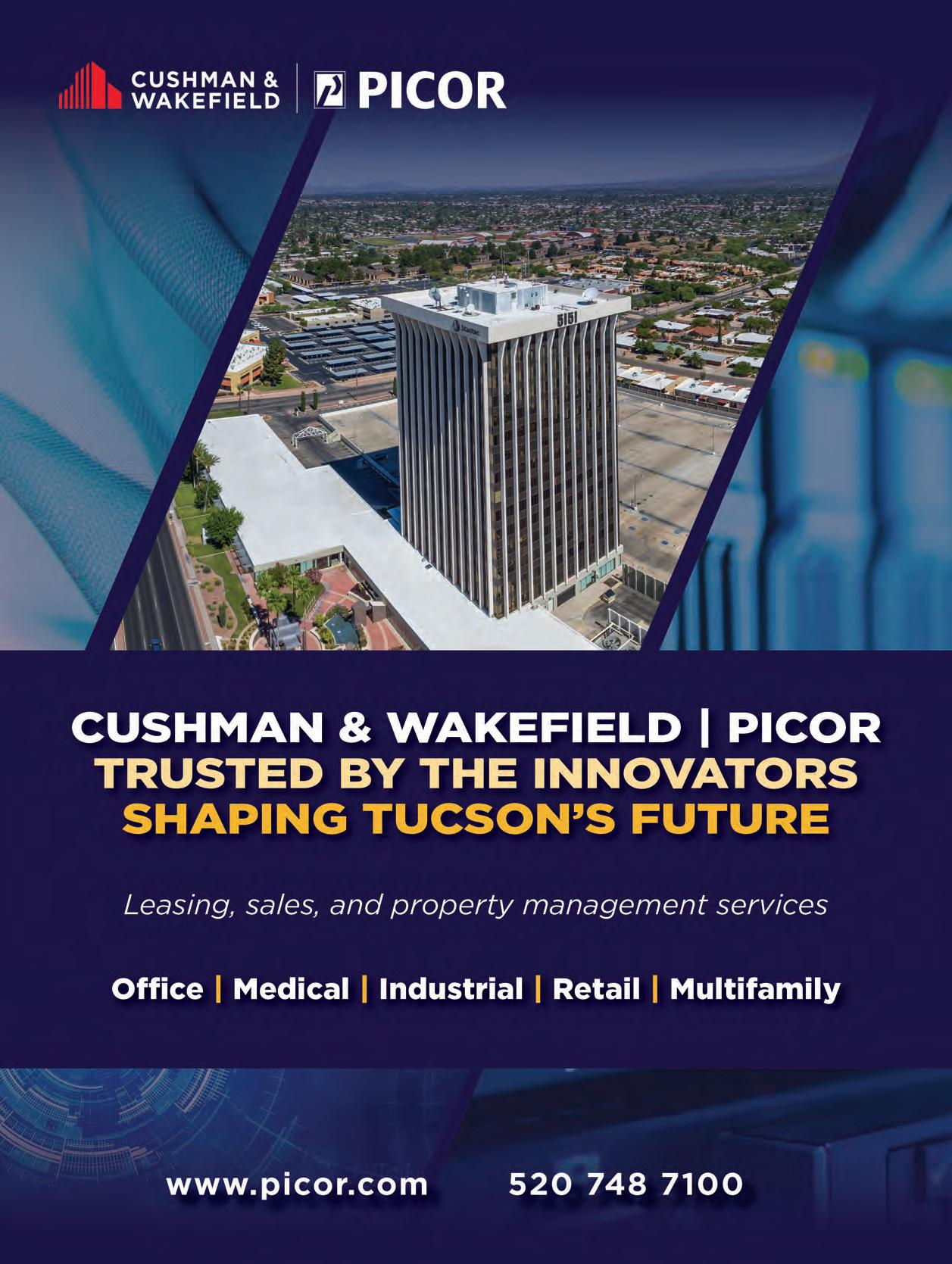










By Rodney Campbell & Tara Kirkpatrick
Six years ago, Calline Sanchez looked around Tucson’s tech industry landscape and liked what she saw.
Sanchez, IBM’s VP of Technology Services Competitive Strategy, saw so much progress and the potential for more that she called the region a Silicon Desert.
“Tucson is actively developing an ecosystem that welcomes and supports technology companies,” she said.
With deference to Phoenix, an accelerating center for the semiconductor industry and data center development, Southern Arizona is becoming a bigger player. This region, which has long valued innovation, continues to cultivate a tech-supportive legacy.

Look no further than the University of Arizona and its prosperous commer cialization engine. Tech kingpins Ray theon, Roche Tissue Diagnostics, Texas
Instruments and Hexagon Mining have established and expanded their operations here. Finally, our commitment to producing and maintaining talent continues to reinforce a Silicon Desert.
“We’ve really got the schools and the innovation that they drive,” said Laura Apitz, life cycle leader for Roche’s pathology business. “Obviously, there’s the attraction of the climate that we have here. It’s easy to have people come into this area. And there’s other industry around to attract skill sets we need, like engineers and others.”
“I’ve found Tucson to be a fantastic place to live and work,” said Marco Gardner, Texas Instruments’ product line manager for High-Speed Ampli
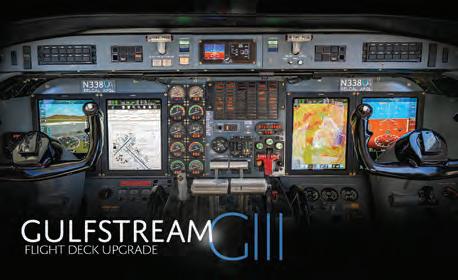
easy to see why so many talented people choose to stay here. As more technology companies are expanding in Southern Arizona, the talent pool and pipeline have also grown.”
Thomas R. Brown, who can be considered the region’s “father of technology,” built a company based on the innovation of transistors in his Tucson garage in 1956.
With a stated purpose “to provide something of value to mankind,” the


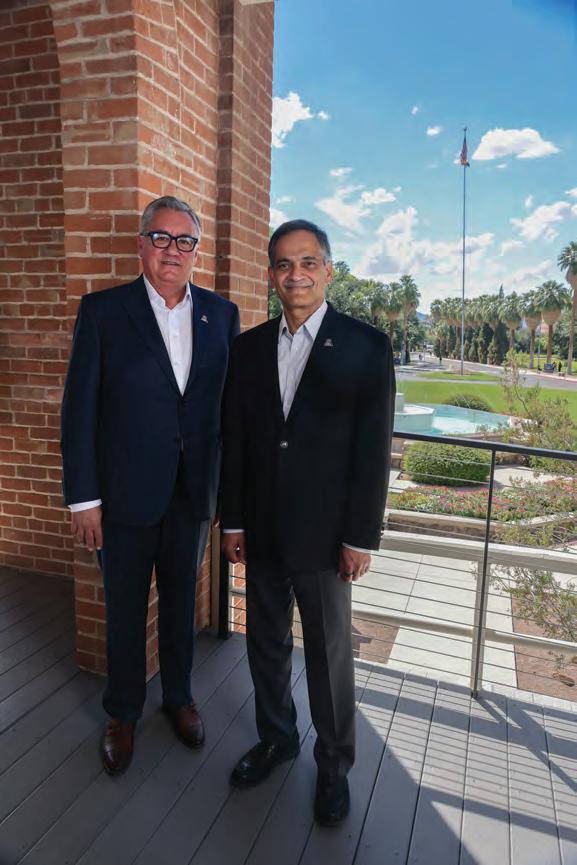
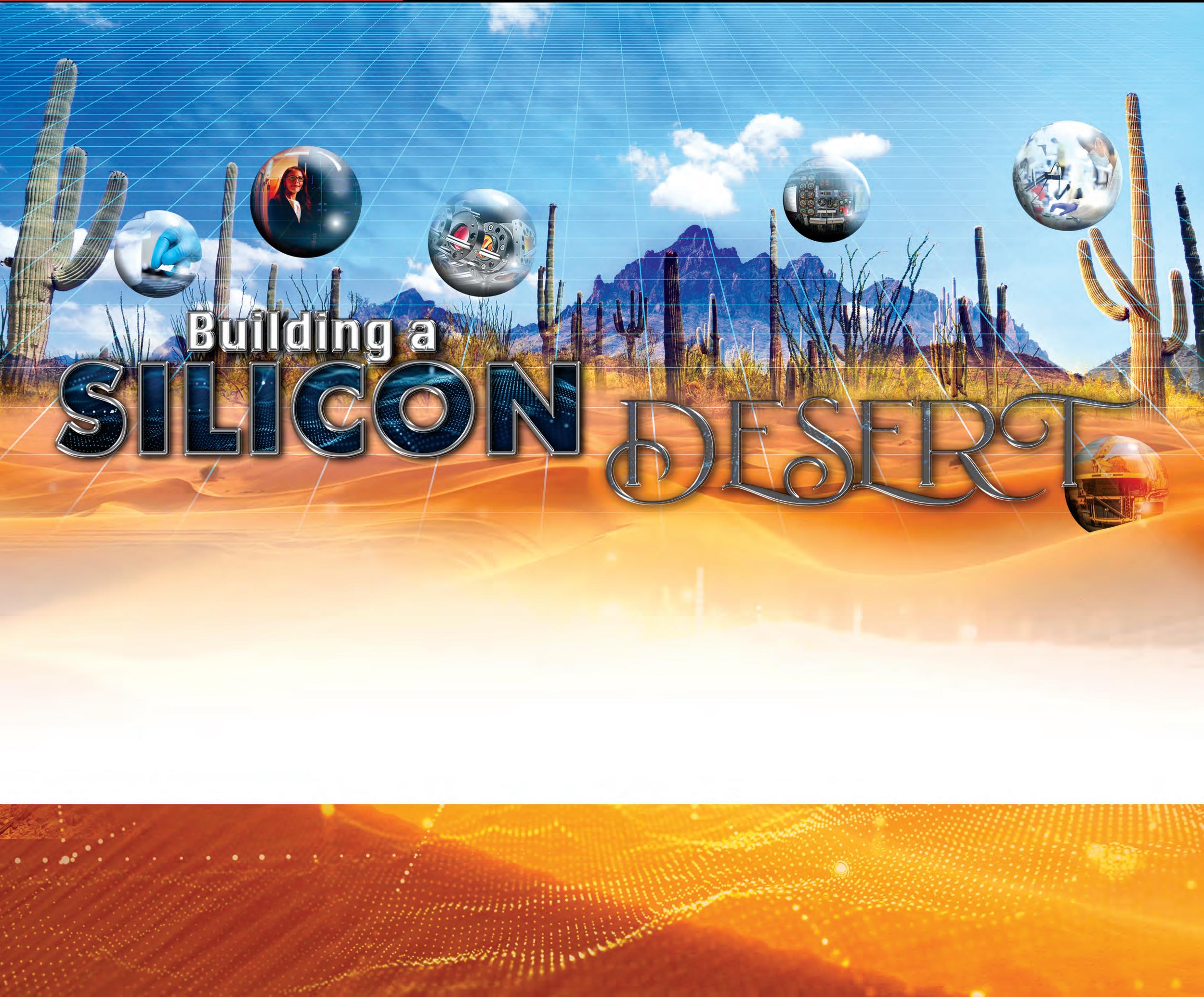
nology and electronics experience in the U.S. Navy, Brown saw an opportunity in transistors. “He said, ‘We can build all kinds of stuff with transistors instead of vacuum tubes, and they will be better,’” said his daughter, Sarah Brown Smallhouse. “’They’ll be more reliable. They won’t heat up the way vacuum tubes heat up. They’ll be smaller. There’s all these advantages.’”
Transistors have become the foundation of modern living, from computers to CT scans to smartphones.
Brown started his company with Page Burr, who sold his interest after a few years. As the company grew, BurrBrown recruited its employees from UA and Pima Community College and in vested heavily in them, offering continu ing education and workforce develop ment before that was even a common
“One of the earliest engineers, who ended up being a very senior manager in the company, started out sweeping floors, and then went through engineering at the U of A,” Smallhouse said.
Burr-Brown went public in 1983 to expand into semiconductors and grew into a global player. “We brought all that money back into the state of Arizona,” Brown said in a 2001 speech. “We didn’t let too much of it get away. So, we helped the prosperity of the people of Arizona. In Tucson, we made a major impact.”
In August 2000, Texas Instruments acquired the company for $7.6 billion and has since expanded its presence
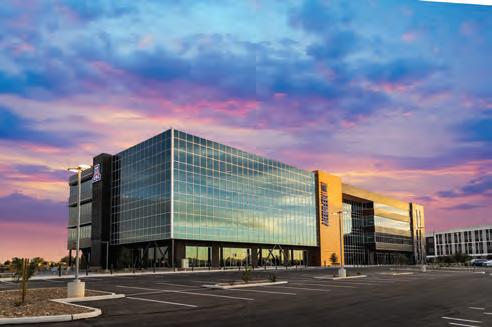
tion, which is run by Smallhouse and her sister, Mary Brown Bernal.
Among its many philanthropic efforts, the foundation endows UA professors in science, business, engineering and optics; provides grants for K-12 STEM learning; generously supports PCC’s Center of Excellence in Applied Technology as well as tech programs at Pima Joint Technical Education District.
“The corporate purpose was to build things of value to mankind, and so we felt that the legacy of Burr-Brown should be a follow-on to that,” Smallhouse said.


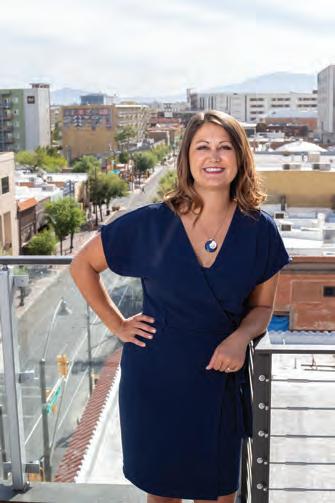
The foundation focuses on STEM, workforce development, civic and economics education. “We felt those four things were all very important and tied closely to Tom Brown and BurrBrown.”
continued on page 28 >>>

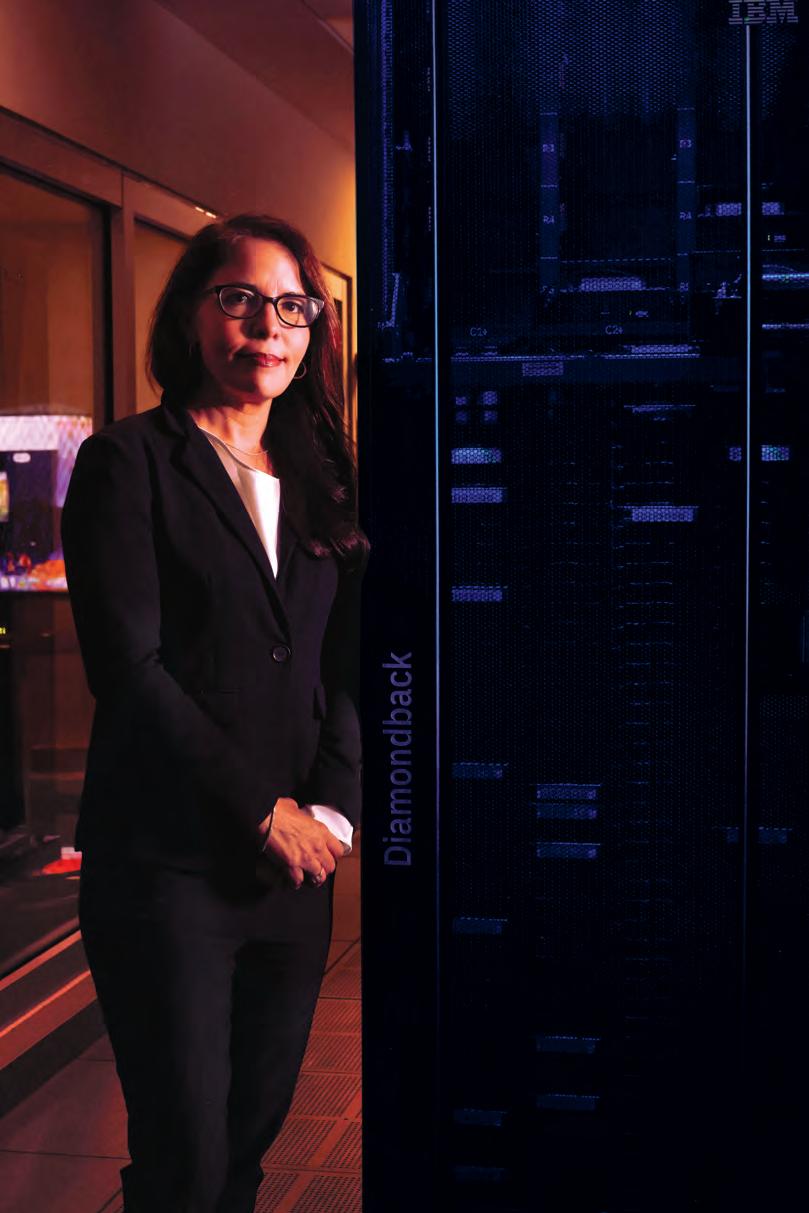
Marco Gardner
High-Speed Amplifiers
Product Line Manager & Tucson Site Manager
Texas Instruments
“As much as Santa Clara and San Jose are the heart of Silicon Valley, Tucson is a geo-rival for technology breakthroughs. With companies like IBM, local technology clusters and support organizations, the Silicon Desert is here, it is growing, and it is making a difference.”
– Calline Sanchez VP, Technology Services Competitive Strategy IBM
continued from page 27
Since the Burr-Brown acquisition, Texas Instruments has continued to enhance its presence in Southern Arizona, driving tech excellence and innovation.
“For TI, Tucson offers not just the talent but also a lifestyle that helps people thrive inside and outside of work,” said Gardner. “What makes Southern Arizona stand out is the strong university partnerships, a growing network of tech companies and a community that genuinely supports innovation.”
In 2018, TI announced plans to build a $29 million, 125,000-square-foot facility in Williams Center, adding 35 high-wage employees to the 300 already based in Tucson. Earlier this year, TI expanded its footprint once again with the $11.6 million re-purchase of an office building at 5411 E. Williams Blvd., creating a centralized campus for the global semiconductor company and securing its long-term commitment here.
“As Tucson is an important R&D site for TI, we recently purchased the building next to our existing site to support the growth of our company,” Gardner said. “Our focus here is not on manufacturing – we don’t have fabs in Arizona – but what we do have is incredible engineering talent. Our focus is on R&D – especially in areas like analog, power and sensing – and Tucson has proven to be a perfect place to do that.”

“The innovations developed here in analog, power and sensing play a direct role in shaping the technologies of tomorrow.”
IBM, another tech cornerstone in this region, recently renewed a longterm lease at the UA Tech Park. IBM’s presence here started in 1978, when it located its storage development division in Tucson. The site grew into a massive campus near Rita Road and Interstate 10.
The UA acquired the campus in 1994 in collaboration with IBM, establishing the UA Tech Park and securing the company as its key tenant. IBM’s renewal in 2024 extended the lease 15 years, reaffirming its commitment to the community.
Calline Sanchez points to decades of partnership between IBM and UA as a chief reason the company has stayed.
continued on page 30 >>>
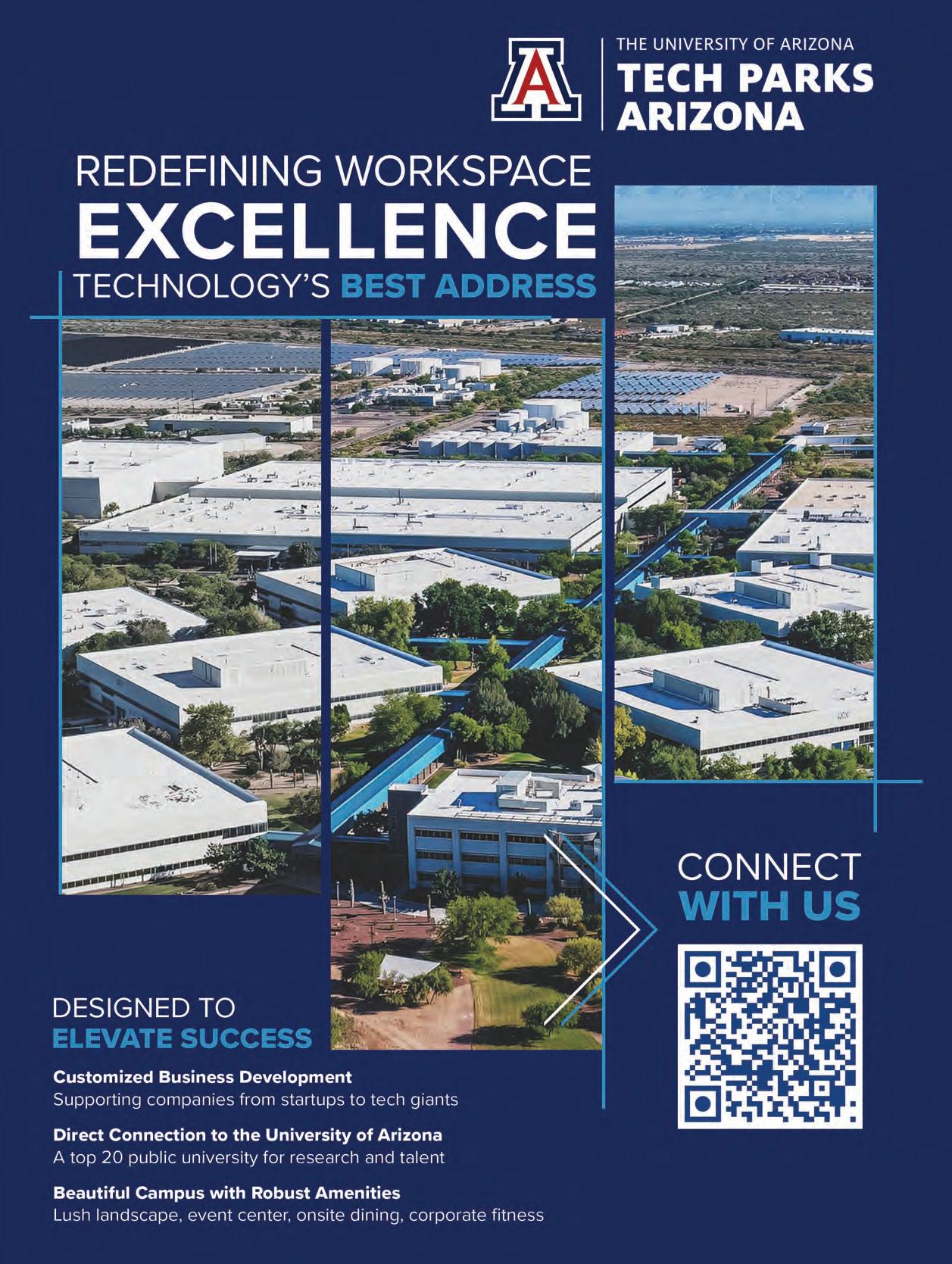

continued from page 28
“We are proud to continue contributing to Arizona’s legacy of innovation,” she said. “Operating in Southern Arizona reflects the strength of our innovative ecosystem and business environment.
“Our employees and technology have thrived here over the decades with strong intellectual property. Having a track record of delivering products and services that meet industry needs has contributed to the momentum of IBM’s continued presence in Tucson.”
Like numerous tech leaders across the region, Sanchez heralds the value of having a world-class university here.
“The University of Arizona continues to play an instrumental role in both global and local landscapes,” Sanchez said. “UA is like a North Star, providing a solid foundation that empowers organi zations to invest, grow, and push the frontiers of innovation.”
In FY 2024, UA re search expenditures sur passed $1 billion, landing it among the nation’s top universities, including Duke, Stan ford and Harvard.
Celebrating 30 years, Tech Parks Arizona supports companies of all sizes. It manages the UA Tech Park at Rita Road, UA Tech Park at The Bridges and the UA Center for Innovation. There are over 100 companies and 6,000 workers under Tech Parks’ umbrella. The UA Tech Park has a $2 billion annual economic impact on the region and generates $52.8 million in tax revenues for state, county and city governments.
facilities at the UA Tech Park—connecting them with the space, talent, and infrastructure to thrive.”
Stewart also noted that, in the past, UA graduates interested in tech careers would move elsewhere to start their professional journey. Not anymore. Salaries and opportunities here are catching up with the talent.
Tucson ranked 13th on CBRE’s Up and Coming Tech Talent Markets list in 2024. Over the five-year period covered, tech employment here climbed 3% and wages grew 13%. Software developer pay jumped 26% to reach an average of $110,530.
“Those dollars go a long way in Tucson,” Stewart said. “There’s a strong economic appeal for talent to be attracted or remain here. The direction we’re heading gives us great confidence for the future.”
industries like advanced and emerging technology,” Vescovi-Chiordi said.
“Additionally, due to the advancements being made at our academic, training and research institutions, we are seeing our ability to attract certain tech companies more easily. We also are seeing a lot of incentivization for attracting these types of companies from the state and federal governments.”
A crucial step toward attracting and keeping promising tech businesses here more seamlessly occurred this year, when the Tucson Metropolitan Chamber of Commerce and Sun Corridor Inc. merged to become The Chamber of Southern Arizona.
The partnership merged a Chamber with approximately 1,500 members and an economic development organization with a two-decade track record of recruitment and retention.
Joe Snell, Chamber president and CEO, said the move makes Tucson a stronger contender for luring high-tech industry.
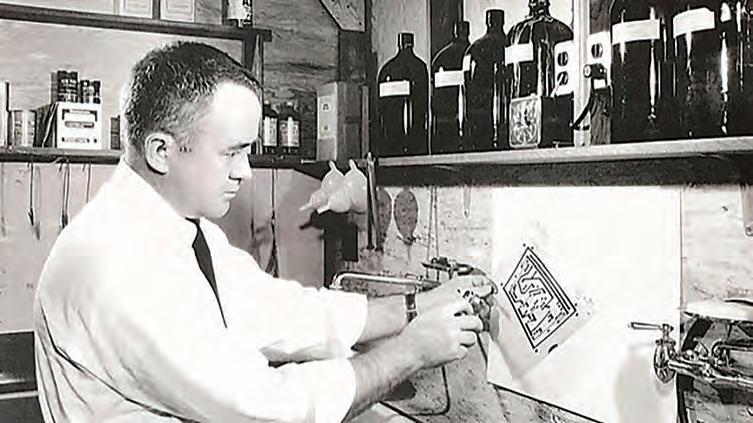
Heath Vescovi-Chiordi, Pima County’s director of economic development since 2022, sees a tech-supportive region that embraces the power of partnerships.
“Before the merger we each had strengths — the Chamber with advocacy and local relationships and Sun Corridor Inc. with global business attraction,” Snell said. w, we can take a company from their first phone call to breaking ground here without missing a step. It’s a more seamless experience for them and it shows that Tucson is serious about competing for the best projects.”
Southern Arizona holds great promise for tech businesses. Snell believes that’s no mirage.
“We have purposely created a continuum at the university,” said UA VP of Tech Parks Arizona Carol Stewart. “Researchers develop innovative real-world solutions that first move through the university’s tech transfer office. From there, they often launch as startups and are welcomed into our incubator network, the UA Center for Innovation, where they gain the support and resources needed to establish their footing. As they grow, we help them scale into
That includes varied interests like the Pima Joint Technical Education District, Arizona Technology Council, Southern Arizona Leadership Council, Startup Tucson and all levels of government. The collaboration is exciting.
“We are strengthening as a tech sector due to the strategic investments being made by public entities in early childhood education and workforce development, which help develop long-term capacity and ability to work in complex
“We’ve always had the raw ingredients — smart people, a great location and an innovative spirit — but over the last few years we’ve really started putting it all together,” he said. “Now, companies from outside the region are starting to see what we’ve known all along: You can do cutting-edge work here and still have an incredible quality of life. That’s why the ‘Silicon Desert’ label fits. The momentum is real.”
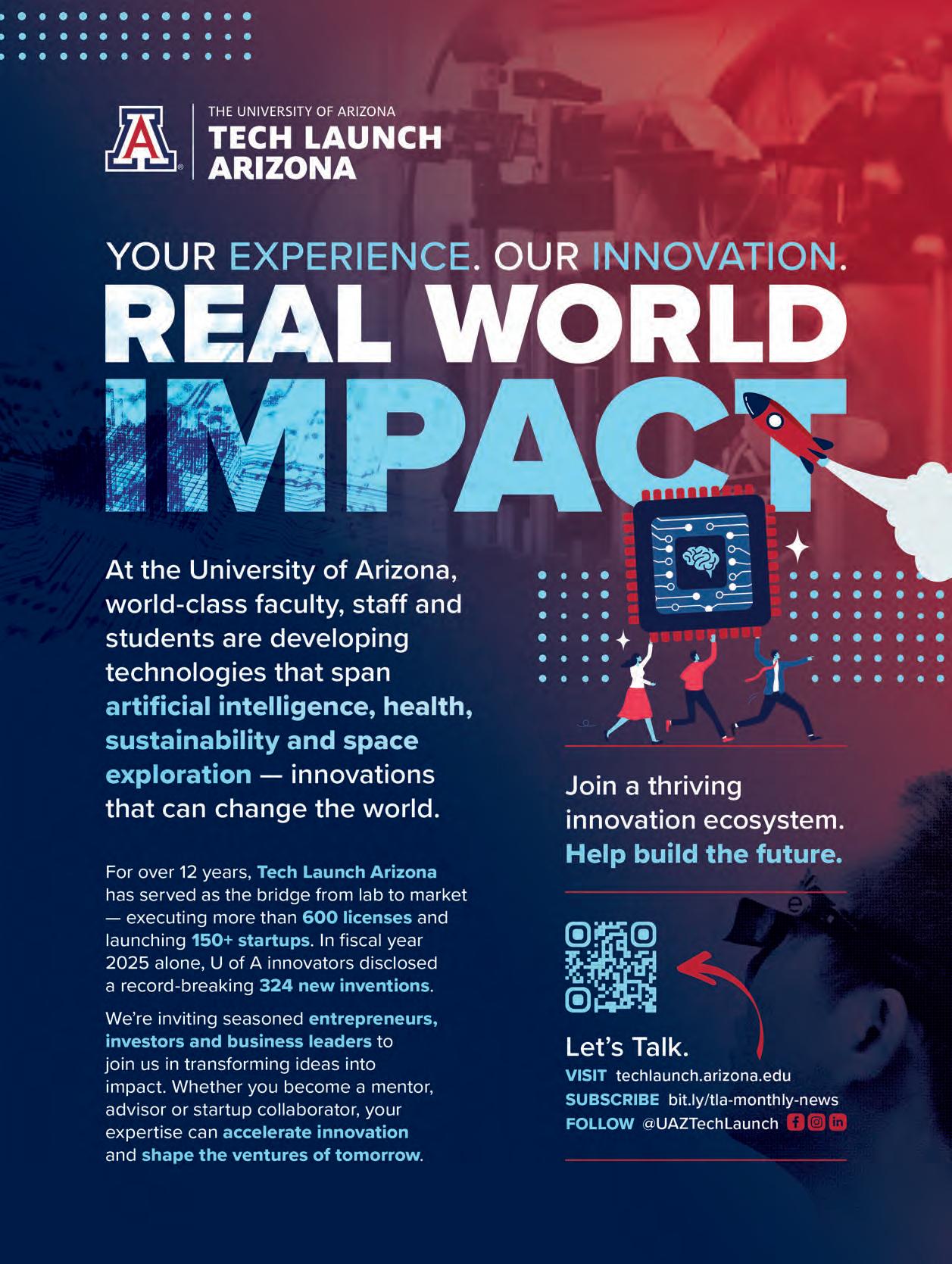






By Tara Kirkpatrick
Southern Arizona has proven fruitful ground for innovation in biotechnology, and the future holds promise, with continued momentum and investment.
Anchored by global players such as Roche Tissue Diagnostics and Critical Path Institute, as well as University of Arizona, this region continues to bolster its biotech sector and eyes the potential of AI, medical devices and more.
In fact, a new Arizona Bioscience Roadmap–which has driven state growth in this industry since 2002– was just unveiled here this fall. It builds upon our emerging biotech hub with priorities to boost it to a nationally recognized level.
“Arizona has critical mass without the burden of mass,” noted venerable UA neuroscientist Roberta Diaz-Brinton, director of the UA Center for Innovation in Brain Science. “Particularly true about Tucson. You can be on supercharged speed here in Tucson.”
There’s no overstating the importance of Roche Tissue Diagnostics’ presence and expansion in Oro Valley.
Just as Thomas R. Brown could be called the father of tech here, UA pathologist Dr. Thomas Grogan is that for bioscience, launching Ventana Medical Systems Inc. in 1985 with an idea to automate cancer diagnostic testing. Swiss
drug giant Roche acquired his company in 2008 and now employs more than 1,800 people at its tissue diagnostics campus north of Tucson.
Roche has since doubled down on the region, expanding manufacturing operations with a new 60,000 squarefoot-facility in Marana in 2022 and the purchase of the 112,500-square-foot, former Sanofi/Icagen building in 2024 focused on personalized healthcare. This year, Roche announced continued investment in R&D and manufacturing in the U.S., which should benefit this region.
“We’re up to 10 buildings on our Oro Valley campus, with that 10th building specifically focused on our personalized healthcare business, said Laura Apitz,


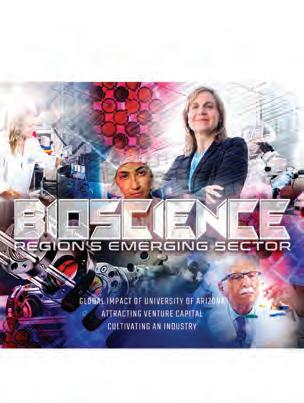
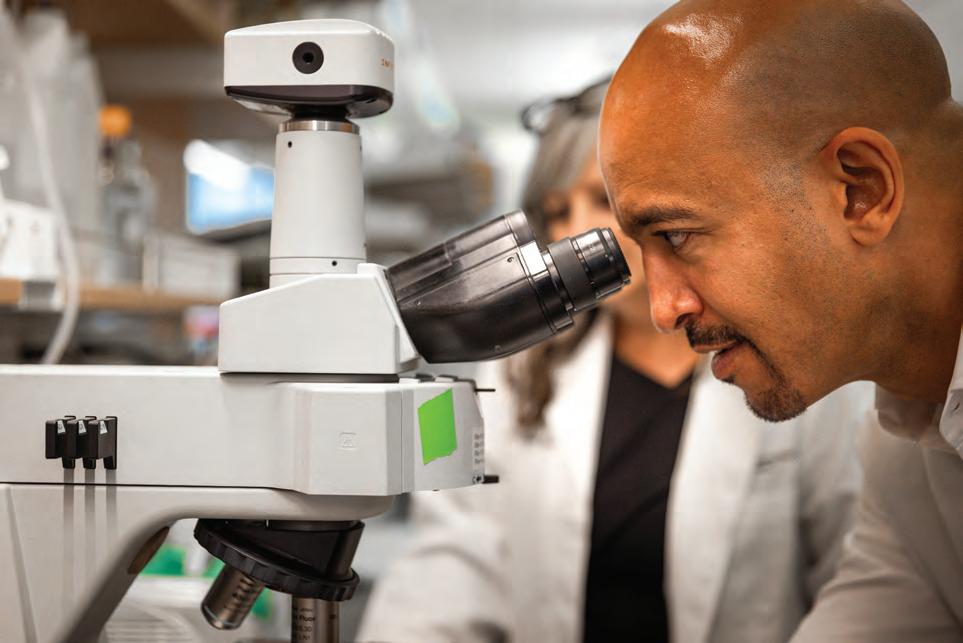


lifecycle leader for Roche Tissue Diagnostics. “We’ve received great support for continuing to evolve our next generation, automated instruments and will eventually expand our manufacturing area to support this next gen product line.”
Looking ahead, Roche is also focused on the digital space for diagnostics.
“We’re digitizing many of our diagnostic assays (tests), so that pathologists will be able to view patient samples on a computer screen instead of, or in addition to, looking at that test through a microscope. We’re advancing imaging technology to further the diagnosis. It helps with speed, accessibility and... getting the right treatment to the right patient.”
Also key in this region is Critical Path Institute, which just celebrated 20 years in Tucson. This global nonprofit has powered new drugs to market smarter and faster–especially for diseases with unmet needs–by bringing together pharmaceutical companies, regulatory agencies, researchers and patient advocacy groups for shared data and streamlined results.
“From an operational mindset, there’s a lot of value with our headquarters being part of Arizona bioscience,” said CPath CEO Dr. Klaus Romero. “We’re strengthening that whole dynamic in Southern Arizona.”

Roberta Diaz-Brinton, Director of the UA Center for Innovation in Brain Science
With its tremendous amount of medi cal research, Southern Arizona has set the scene for many biotech successes.
It’s been more than 20 years since the SynCardia Total Artificial Heart re ceived landmark commercial approval from the U.S. Food and Drug Admin istration. Based on significant research done at UA, SynCardia Systems was founded by UA cardiothoracic surgeon Dr. Jack Copeland, biomedical engineer Richard G. Smith and interventional radiologist Dr. Marvin Slepian in 2001.
To this day, the success of SynCar dia’s Total Artificial Heart is unequalled and there are more than 2,000 implants at more than 130 hospitals in 25 coun tries. Just this year, SynCardia’s parent company, Picard Medical Inc., complet ed a $17 million initial public offering.
Numerous Tucson startups continue to pursue world-changing ideas.
Emagine Solutions Technology is a biotech startup to make pregnancy care safer, through handheld ultrasound and software to improve outcomes, es pecially high-risk ones. The company just completed a redesign of its app that now includes an AI-powered doula.
“Building technology is great here be cause of the proximity and connection to University of Arizona, a world-class research institution, as well as organi zations like Flinn Foundation, UACI


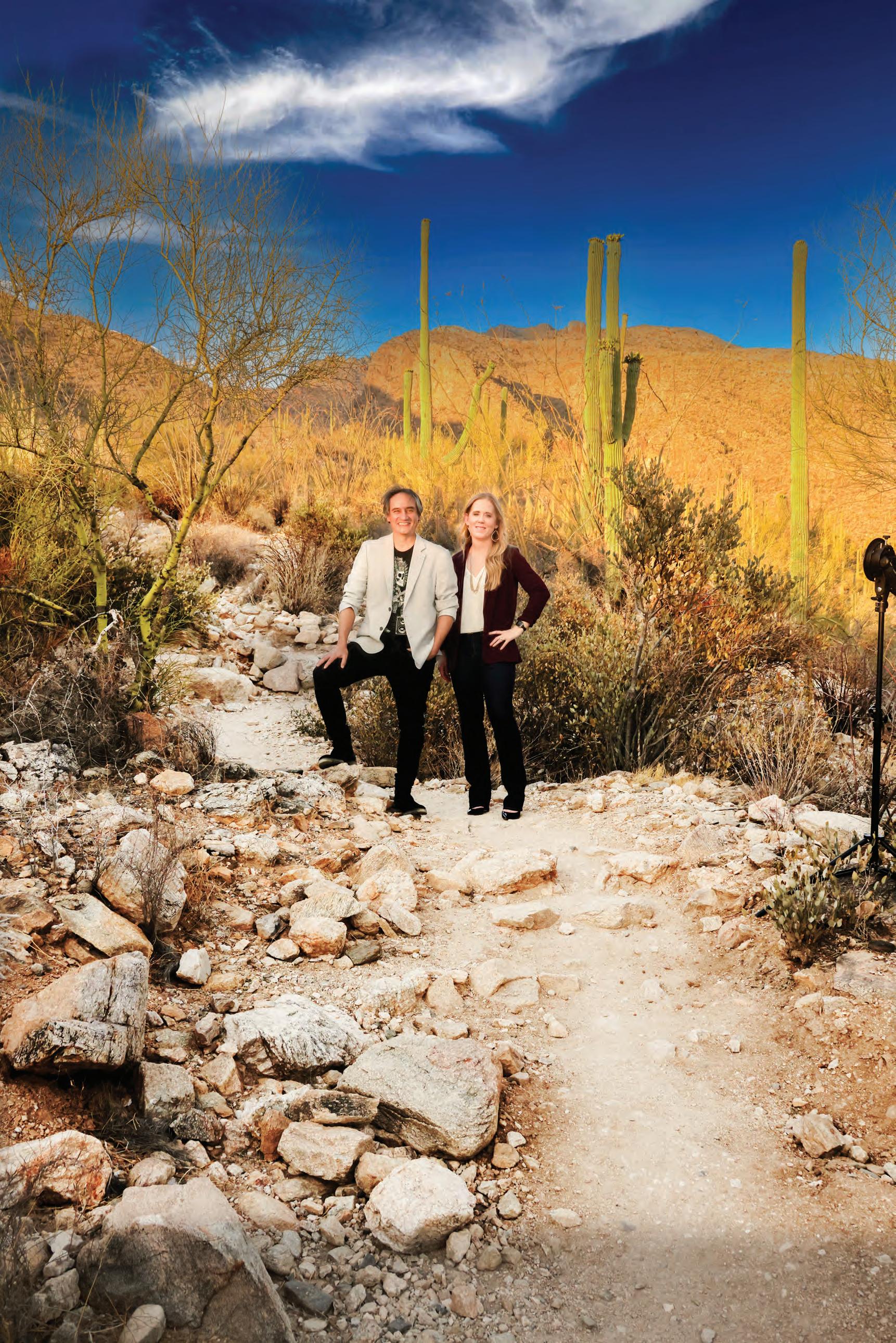


tor here with approximately 30,000 em ployees, according to The Chamber of Southern Arizona. In 2024, the industry had $2.3 billion in earnings, contributed $39.6 million in property taxes and had $2.6 billion in gross regional product.
Tucson is ranked in the top 10 metro areas for aerospace manufacturing due to its highly concentrated aerospace products and parts manufacturing section. And the state of Arizona ranks fifth for NASA-funded activity.
In 2022, U.S. News and World Report ranked the University of Arizona as one of the top two public universities in space science. Also, Pima Community College offers specialized training in aviation technology, aerospace machining and defense industry skills.
“The aerospace and defense industry has a long history as an economic driver in Southern Arizona,” said Susan Dumon, chief economic development offi-
at The Chamber of Southern Arizona. “The industry has been a key part of rn economy’s foundation and will stay vital as space technology and research comes to the forefront.”
Among the products the aerospace/ defense industry produces here are:
• Flight recorders.
• Flight displays.
• Precision hydraulic and bearing components for aerospace, defense, space and marine markets.
• Aircraft cameras.
• Energy storage systems as well as power conversion systems, security and wireless systems.
• High-power semiconductor laser components and systems.
• Precision-machined parts for flightcritical aerospace application, fluid management systems and radar defense structures.
• Space and missile systems.
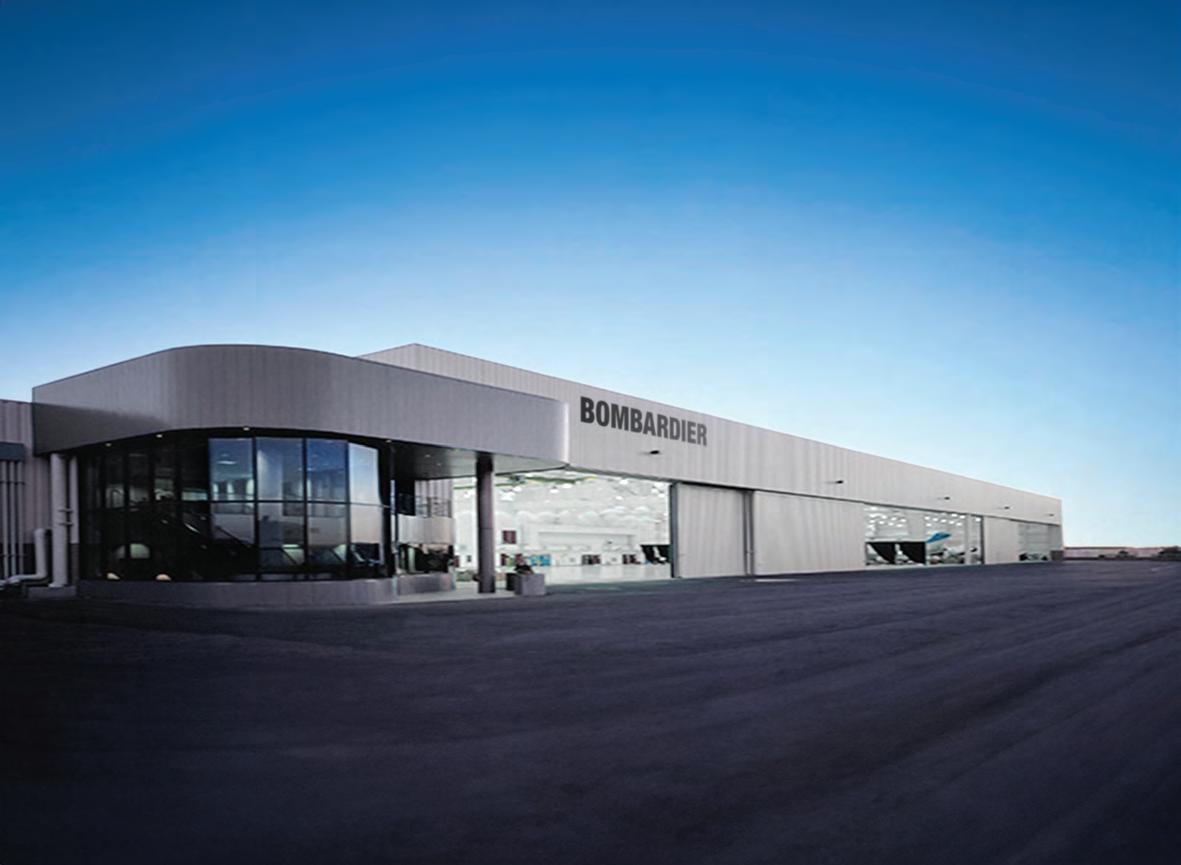
largest aerospace/defense industry here with 12,500 employees. It specializes in integrated air and missile defense, advanced sensors, space-based systems, hypersonics and effectors.
“Tucson is the largest missile manufacturing operation in the world, and that’s very much what we are focused on, missiles,” said Sam Deneke, president of Air and Space Defense Systems at Raytheon.
The United States and other countries are in the process of munitions replacement, Deneke said, and Raytheon is playing a major role in the process.
This year the company landed a $3.5 billion Department of Defense contract for its advanced medium-range air-toair missiles or AMRAAM − its largest order ever. The missiles will be built for the U.S. Air Force and Navy and for foreign military partners.
The newest contract will keep Raytheon employees busy until 2031.





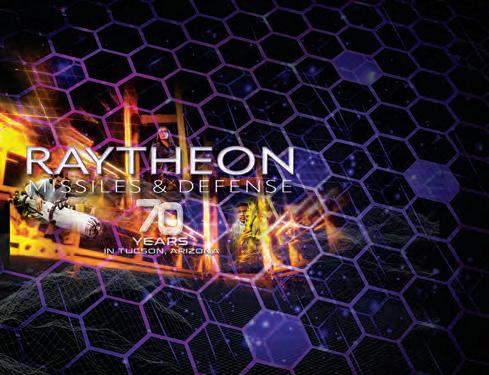

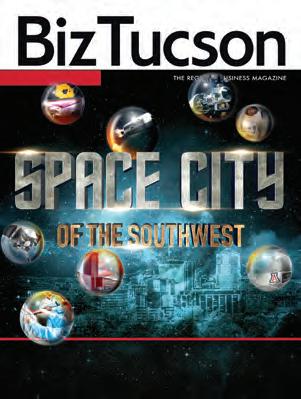


“The industry has been a key part of our modern economy’s foundation and will stay vital as space technology and research comes to the forefront.”

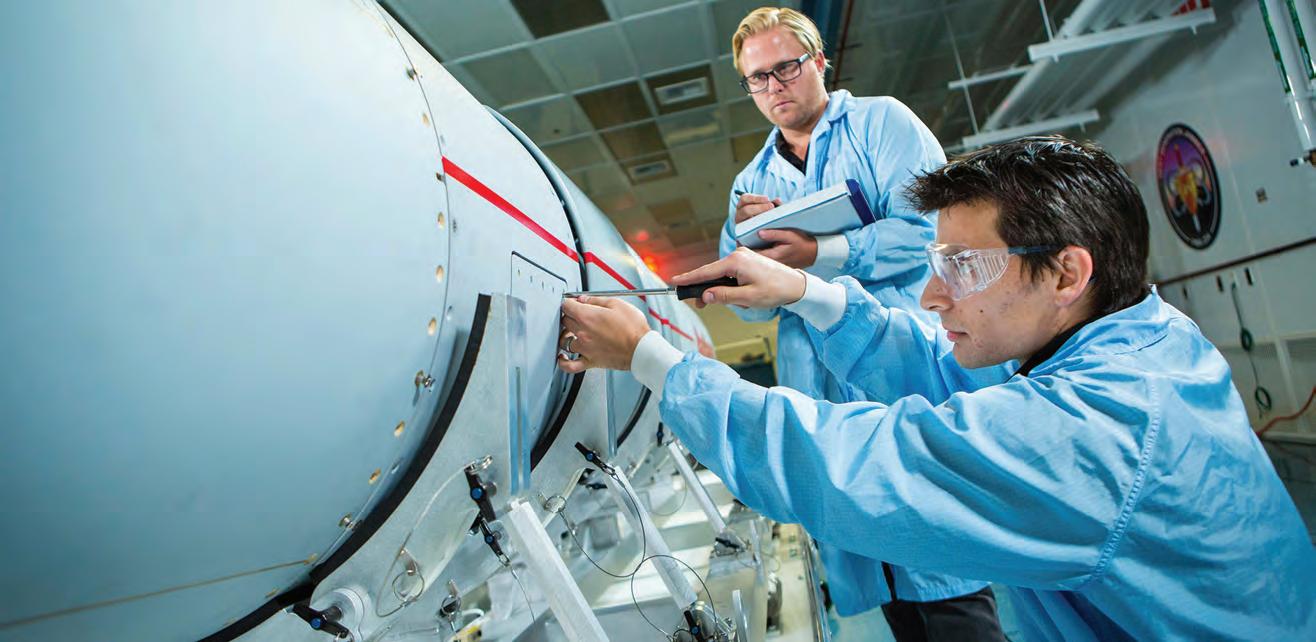
– Susan Dumon, Chief Economic Development Officer, The Chamber of Southern Arizona
feet of space in Tucson, including its sprawling campus and an engineering office at the University of Arizona Tech Park.
“We have an outsized importance and responsibility that we’re well aware of in Southern Arizona from an economic impact and social impact as well,” Deneke said. “We’re certainly growing here in Tucson.”
Deneke emphasized Raytheon’s collaboration with the UA and Pima Community College. The company hires a large number of UA engineering school graduates as well as PCC grads.
“This is the fifth-largest concentration of aerospace and defense work in the country, and that wouldn’t be possible without the tech collaboration with the city and the universities here,” Deneke said.
The aerospace/defense industry is expected to grow here in the future.
“We proactively work to recruit aerospace and defense firms,” said the


Chamber’s Dumon. “The industry is diverse, and we assist companies that range from small, specialized firms with top security clearances to large multinational commercial aviation corporations. We also meet with existing industry players in the region to ensure they remain and expand in Southern Arizona.”
Other major industry players in the Tucson area include:
Bombardier Learjet is a premier aviation consultant offering expert services in the field of aircraft engineering and design. Specializing in innovative solutions for aircraft maintenance and upgrades, they are known for their meticulous attention to detail and commitment to excellence.
Universal Avionics safely guides pilots and passengers with forward fit and retrofit solutions, flying on over 35,000 airplanes and helicopters worldwide.
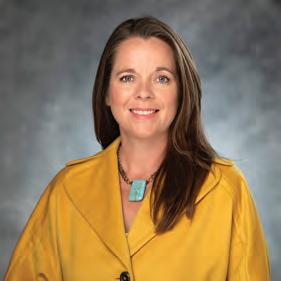
It’s a leading manufacturer of innovative commercial avionics.
Sargent Aerospace and Defense is a manufacturer of precision hydraulic and bearing components and assemblies supporting the aerospace and defense, space and marine markets.
The company designs, develops, builds and supports advanced technologies for global security and human discovery, with a focus on aeronautics, spacecraft and weapons systems. The company’s innovative solutions include advanced aircraft, autonomous systems, space telescopes, launch systems, communication satellites and sophisticated weapon systems for military and civilian customers. The size of the Northrop Grumman plant in Sierra Vista, AZ. is currently 100,000 sq. ft. with plans to expand in the future.

By Tom Leyde
James C. Wyant
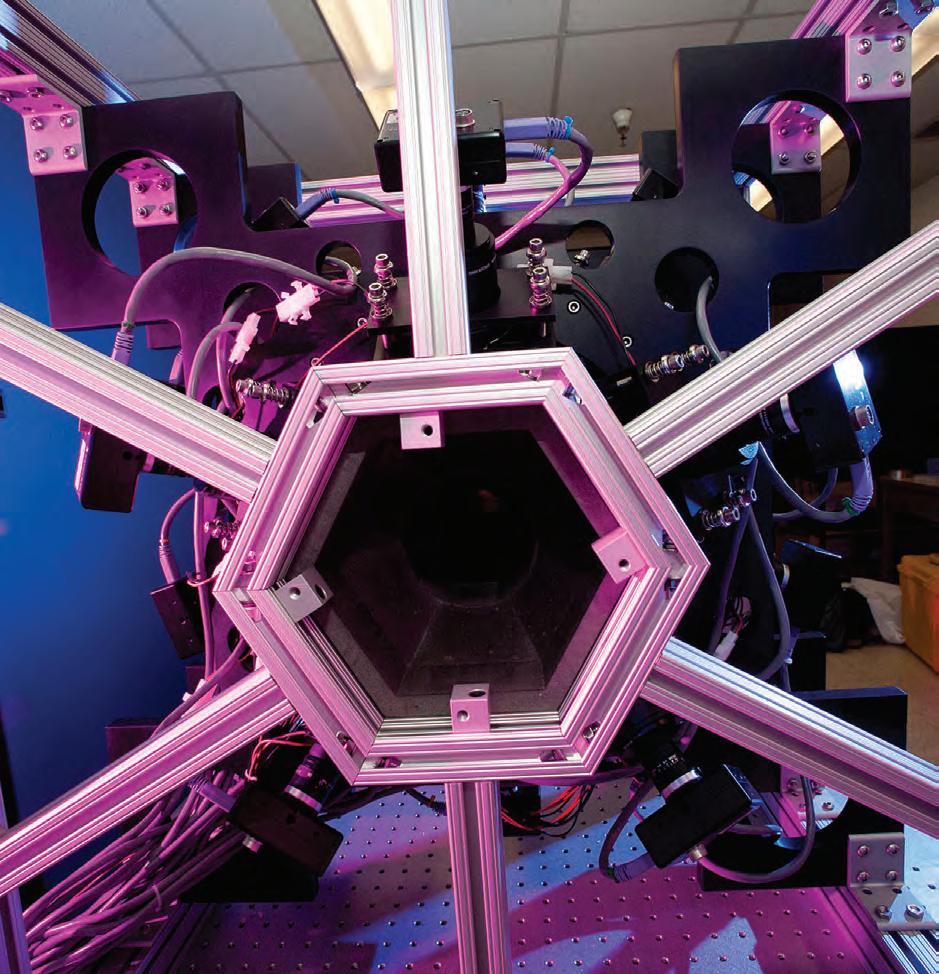







“It’s a field that many people don’t know about, but it underpins everyone’s life,.”
–
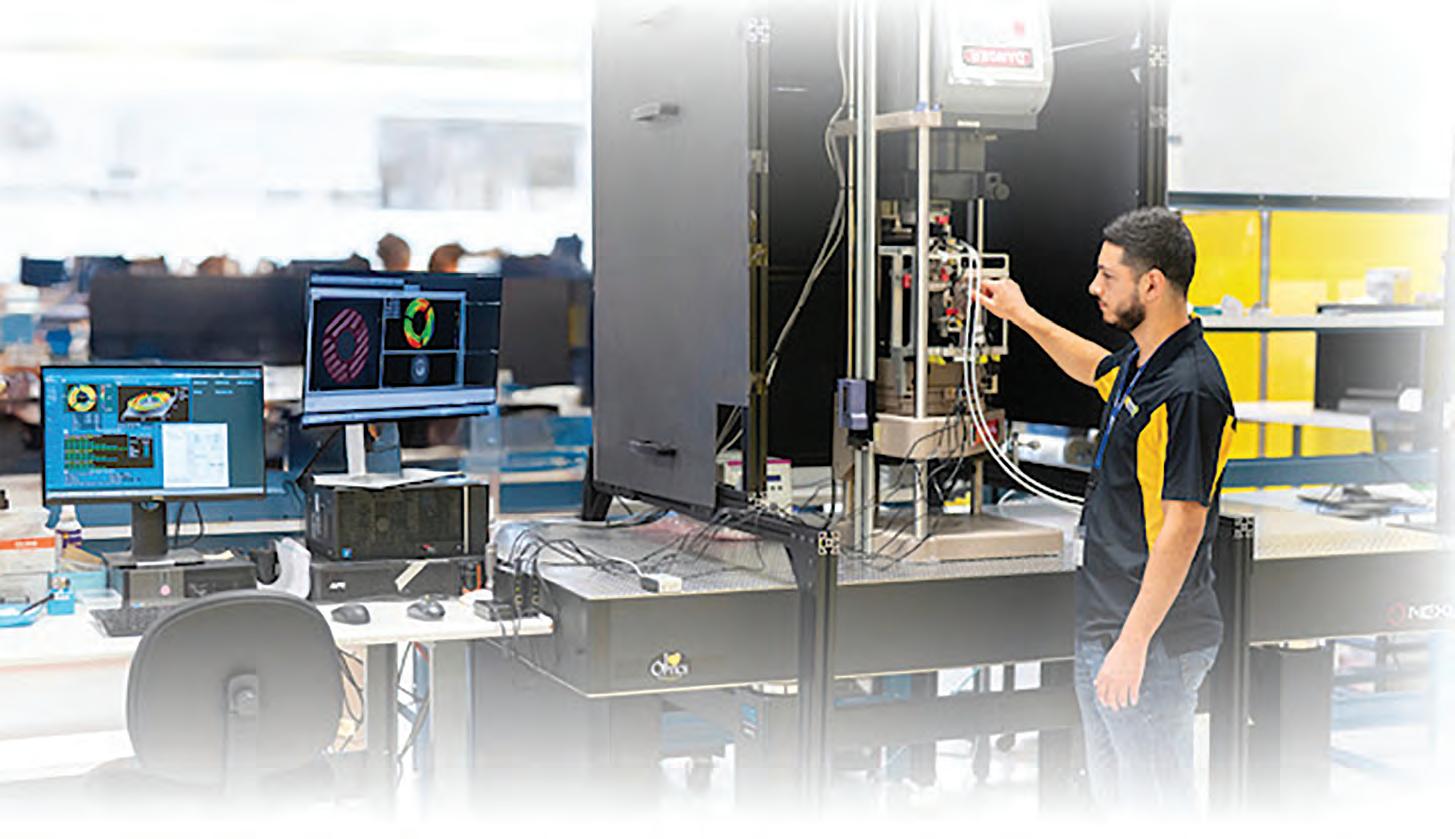
nology, and we look forward to working with him to advocate for the growth of our industry and its workforce,” she said.
Another longtime tech company, NP Photonics, an early tenant of Tech Parks Arizona, is a top developer and manufacturer of specialty fiber lasers, fiber amplifiers and transport fibers for science, military and government uses. NP Photonics’ co-founder Shibin Jiang was elected to the National Academy of Inventors in 2024.
And there are many more.
Research in photonics, the physical science of light waves, also continues to power entrepreneurial progress.
“It’s a field that many people don’t know about, but it underpins everyone’s life,” said Schwertz. “Our field is considered to be an enabling technology –virtually every part of society depends on it.”
Photonics applications include solar panels, healthcare diagnostics, autonomous vehicles, cell phones, semicon-
ductor fabrication, AR/VR technology, defense and security systems, lasers to process materials as well as those in computer mice, barcode scanners, laser surgery and more.
“At the University of Arizona, one research area is photonics for sensing controlling light for some purpose, such as ways of using light to sense what is in the immediate environment in terms of biomaterials and chemicals,” said Brian Anderson, interim dean and professor at UA Wyant College of Optical Sciences.
Several Wyant professors are pursuing the next horizons of optics and photonics through exciting research. A few examples:
Professor David Brady, J.W. and H.M. Goodman Endowed Chair in Optical Sciences, focuses on computational imaging, a field that uses photonics devices, such as light sensors and cameras. He led the joint Duke University and UA team that built the world’s first gigapixel camera in 2012.


Assistant Professor Judith Su’s work concentrates on label‐free single molecule detection using microtoroid optical resonators with an eye on basic research, and translational medicine through miniature field portable devices.
Professor Hong Hua, Jean M. Bennett Optica Endowed Chair in Optical Sciences, heads the 3-D Visualization and Imaging Systems laboratory. It specializes in a wide variety of optical technologies for advanced 3-D displays, 3-D visualization systems and immersive virtual and augmented environments.
Biz

9th Annual Arizona Photonics Days presented by Optics Valley Jan. 14-16, 2026
University of Arizona Grand Challenges Research Building
For more information, aztechcouncil.org/event/apd-2026
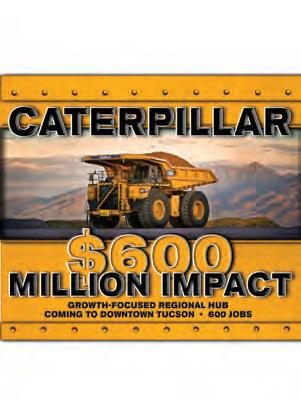
By Jay Gonzales
The long history of Tucson – and Arizona for that matter – as a mining hub has taken on an identity that no longer is just about digging holes and underground mines.
Mining is as much about developing new technology as other tech industries operating in the region such as biosciences, aerospace and defense and optics.
With worldwide mining corporations like Caterpillar, Hexagon and Komatsu located here, Southern Arizona can safely say it is a hub for getting minerals out of the ground and, as importantly, for developing new ways to do it.
“When you look around the industry in mining technology, it’s Tucson,” said Dave Goddard, president of Hexagon Mining which moved here in 2019.
“There’s another hub in Perth (Australia), another hub in Brisbane (Australia) and another hub in Johannesburg, South Africa, and that’s about it.
“Denver has a handful (of mining technology companies), but the overwhelming majority of them are here in Tucson. The reason for that is the incubation that was happening here. Then talent migrated to Tucson.”
One of the primary reasons Hexagon located to Tucson, Goddard said, was that it had purchased two mining technology companies that were already here. When it found a headquarters location downtown with the help of Rio Nuevo, it made sense.
“As a result of those (company purchases), the talent was in town and was
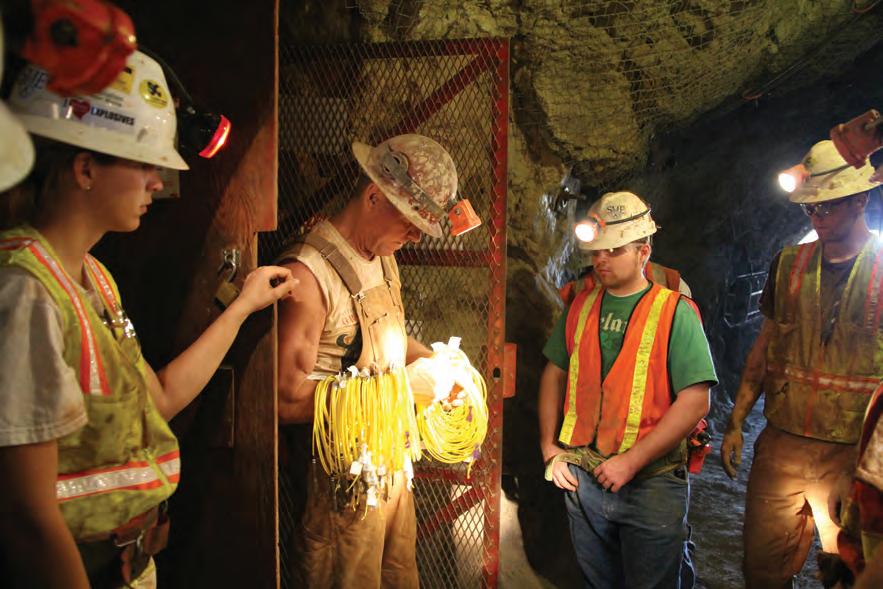
able to incubate those technologies,” Goddard said. “There is a lot of give and take. I’ve got a bunch of people that used to work for Caterpillar that work for us. There’s a bunch of people that used to work for Komatsu that work for us − and vice versa. It’s a very, very small community to begin with.”
It helps that the University of Arizona has been committed to the mining industry for most of its existence. The School of Mining Engineering & Mineral Resources continues to partner with the local mining companies, providing research and expertise and churning out talent to support their workforce needs.
Goddard said that mining companies that have had a presence in Tucson were instrumental in working with the UA to




“When you look around the industry in mining technology, it’s Tucson.”
– Dave Goddard, President, Hexagon Mining
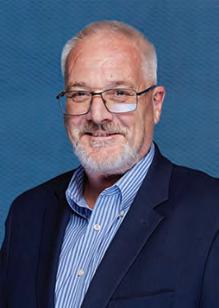
establish and support various efforts to develop new technologies for mining. He cited Phelps Dodge, which later became Freeport McMoRan, as prime examples.
“Phelps Dodge and Freeport plus the University of Arizona did an exceptional job in terms of incubating new technologies back when computers and communications and positioning systems were all in their infancy,” Goddard said, pointing out that the mining companies were providing seed money for research that took place here.
“It’s that kind of approach that I think made Tucson what Tucson is in terms of mining technology,” he said.
Kray Luxbacher, executive director and head of the UA mining school,
said one of the challenges in attracting young talent to the mining industry is getting them to understand the industry is more about technology and less about digging. They don’t have to enter some of the more obvious tech sectors to be involved in a high-tech industry.
In addition to the research the mining school does alongside the mining companies, it is helping to mine for talent while also helping to continually develop that talent once they enter the industry.
“We run a professional development program for Caterpillar,” Luxbacher said. “It is a worldwide program where we train their people on mining techniques. We work with Komatsu to prove some of their hard rock equipment.
We have funded research projects from Freeport McMoRan and South32 — everything from how to better leach calcium pyrite to community impact studies.
“There is this idea in the public consciousness that it’s an old-fashioned industry. I tell students, if you want to work on the largest autonomous projects on Earth, come to mining. I tell environmental sciences students that if you want to make an impact on hundreds of thousands of acres, come to mining.”
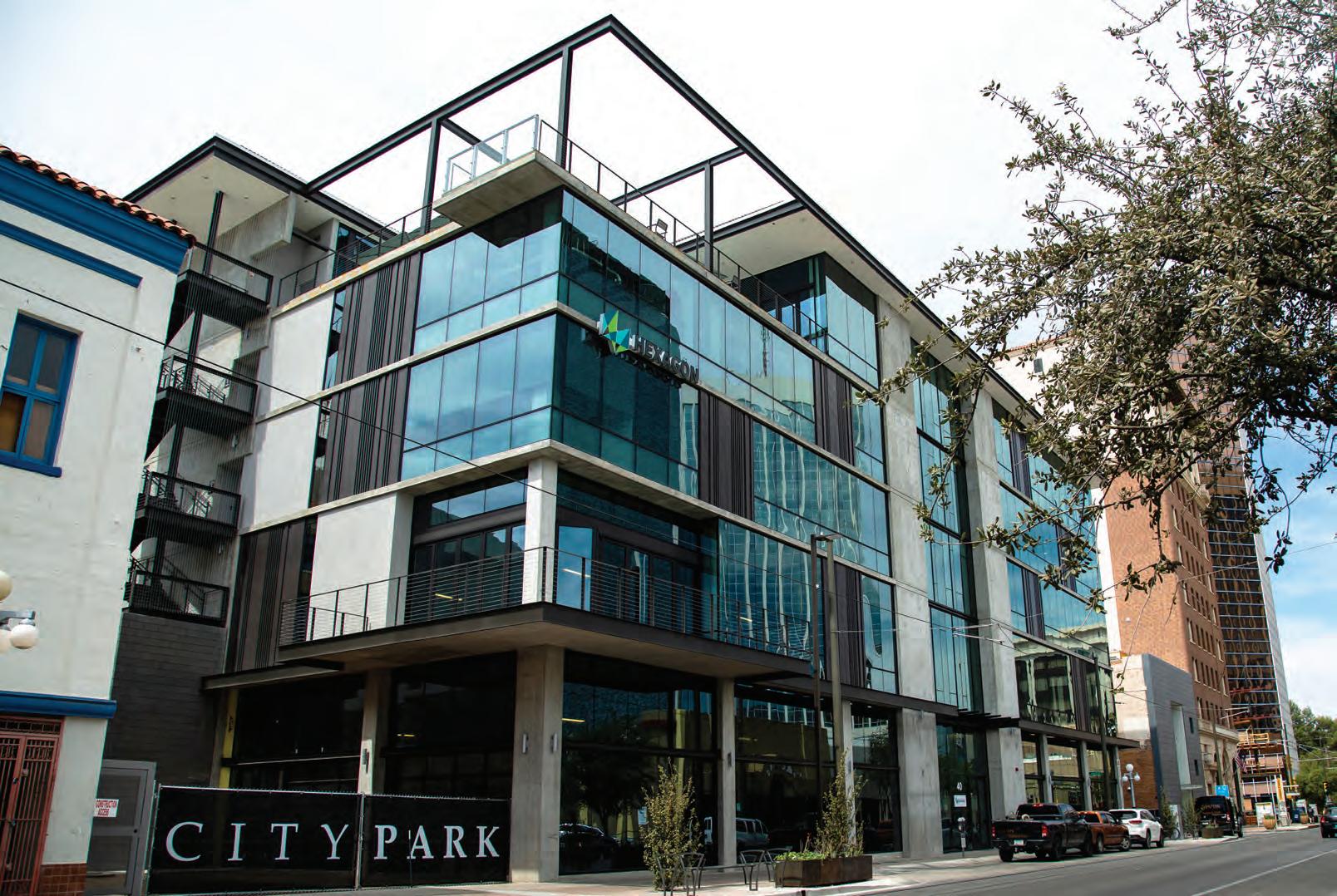


Senior VP for Research & Partnerships
University of Arizona
Suresh
Garimella President
University of Arizona






continued from page 43
rence Livermore National Laboratory in California, home of the world’s first laboratory demonstration of fusion ignition.
“The multi-institutional partnership connects us with leaders in fusion energy so that our expertise across disciplines can help accelerate the path to clean, abundant energy,” Díaz de la Rubia said. “Fusion represents more than scientific progress –it has the potential to anchor new industries, strengthen supply chains, and create opportunities for a highly skilled workforce that will redefine the global economy. We are positioning the state of Arizona to be part of that future.”
“What makes this moment different is the way new industries and opportunities are converging, creating a turning point for the region’s economy.”
– Suresh Garimella President University of Arizona
The university’s affiliations extend far beyond energy. At the Yuma Center of Excellence for Desert Agriculture, a regional alliance enabled the launch of in-field wireless connectivity, a development that is transforming precision agriculture by enabling growers to monitor crops, control irrigation and respond to conditions in real time.
“Our commitment to water, soil and desert agriculture is unmatched, grounded in close collaboration with producers, ranchers and industry across all 15 Arizona counties,” Díaz de la Rubia said. “These initiatives are part of a strategic commitment to drive economic growth and create high-impact jobs. We are building a model of regional prosperity powered by the partnerships between academia, industry and government.”
In Southern Arizona’s mining sector, the university works with companies including South32 at the Hermosa project, where researchers are studying community resiliency, strengthening infrastructure and supporting local job creation.
“We bring together the individuals and organizations whose expertise and perspectives are essential to solving challenges that no single sector can address alone,” Díaz de la Rubia said. “By aligning these initiatives with regional prosperity and national priorities, we are creating a pipeline of talent and translational research that meets market needs while advancing science in service of the public good.”
The goal is not just to prepare students for today’s workforce, but also to equip them to be at the helm of tomorrow’s industries, Garimella said. “We do that by ensuring every student has access to hands-on learning and research opportunities from day one.”
The Future Advanced Semiconductor Technology Laboratory, or FASTLab, for example, builds on the university’s acclaimed Nano Fabrication Center, which gives students direct experience in semiconductor manufacturing, from nanotechnology and chip design to real-world fabrication processes. These facilities go hand in hand with academic programs –like a semiconductor manufacturing minor and graduate certificates – that help students build the skills they need to be career-ready in what Garimella said is a sector vital to both Arizona and the nation.
In the health sciences, the Cancer Engineering Initiative brings together faculty, clinicians and students to advance personalized cancer treatment. As part of that work, biomedical engineering students are designing organ-on-a-chip models, 3D-printed tissues and biomaterials that mimic the body’s environment. These tools allow researchers to test drugs on a patient’s own cancer cells, accelerating the path to more precise therapies, Garimella said.
“Students engaged in this work are not only contributing to breakthrough cancer research but also gaining rare, hands-on training with biomedical tools that few institutions can offer. We are equipping students with the technical expertise, interdisciplinary perspective and practical experience needed to lead in industries that are reshaping our economy and society,” he said.
For the university, long-term success is measured by impact, Díaz de la Rubia said. “It means the state of Arizona becomes known globally not only for the University of Arizona’s discoveries but for the way they are translated into solutions.”
“We are shaping the future of information and communications. Through the Center for Quantum Networks, headquartered at UA, we are helping design the foundations of the quantum internet. At the same time, the Center for Semiconductor Manufacturing is advancing microelectronics through a collaboration between engineering and optical sciences,” Díaz de la Rubia said.
Those efforts, he added, are how the university will carry Arizona’s legacy of resilience and ingenuity into the digital frontier, positioning the state as a global model for prosperity in a rapidly changing world.
“Our vision is to build an ecosystem where knowledge and technology are continuously translated into economic and social impact,” Díaz de la Rubia said. “That is why we aspire to grow our research enterprise to $2 billion annually. The goal is not scale for its own sake, but the opportunities it creates. By aligning our research enterprise with the state’s economic future, we are helping to ensure all of Arizona remains competitive in the sectors that will define the next century.”

BY





it’s actually a challenge, because we’re trying to get more people (into classes). The whole idea is expanding capacity,” Nasse said.
The college has several Centers of Excellence that merge industry with training and education, including the Center of Excellence in Applied Technology at the Downtown Campus. That center features a $12.5 million Automotive Technology and Innovation Center, a $35 million Advanced Manufacturing building and a Science and Technology building that is undergoing renovation and will house building construction sciences and Workforce Development Pathways.
“The facilities really are top tier, with a significant investment in the facility itself and the equipment that goes into those facilities,” Nasse said. “I think it’s really important that students are seeing things that they will see out in the world. We don’t want to have students working on equipment and facilities that are 10 years behind what they’re going to see out in the industry.”
The $33 million Center of Excellence in Health Professions features high-tech labs and $2.5 million in HUD-funded equipment. “We have a huge simulation component in the Center for Excellence in Health Professions, and the technology in that curriculum, in that building, is just amazing,” Nasse said.
Pima also expanded its Aviation Technology Center at Tucson International Airport, doubling its size to 87,000 square feet and increasing student capacity to 250. Students can earn an associate’s degree in about two years or complete one of eight certificates in less time.
“For the aviation program, for example, you’re not in school forever,” Nasse said. “And I think that’s an important point, too. In aviation, particularly, they can quickly move through the ladder and be working really good-paying jobs.”
One of the fastest-growing fields at Pima is cybersecurity, supported by its “live fire” Cyber Warfare Range, which allows students and community members to engage in real-world cyber-
attacks and defenses at the Center of Excellence in Information Technology and Cybersecurity at the East Campus.
“It’s really an amazing facility. I was just at a conference in Wisconsin, and Pima was featured for the Arizona Cyber Warfare Range,” Nasse said. “In fact, the state of Arizona is partnering with our cyber program to train with them – that’s how advanced that program is.”
According to the U.S. Bureau of Labor Statistics, the mean hourly wage in Tucson in May 2024 was $29.91. “Computer and mathematical” occupations, on the other hand, have a mean hourly wage of $51.03.
“We track job placements, and in fact we evaluate our programs now with the median wage outcomes,” Nasse said. “We never want people to graduate from programs at PCC to go into a lowpaying job. It’s in our name: community college. That’s another one of the things we’re really proud of – the vast majority of our students are from here and they stay here.”
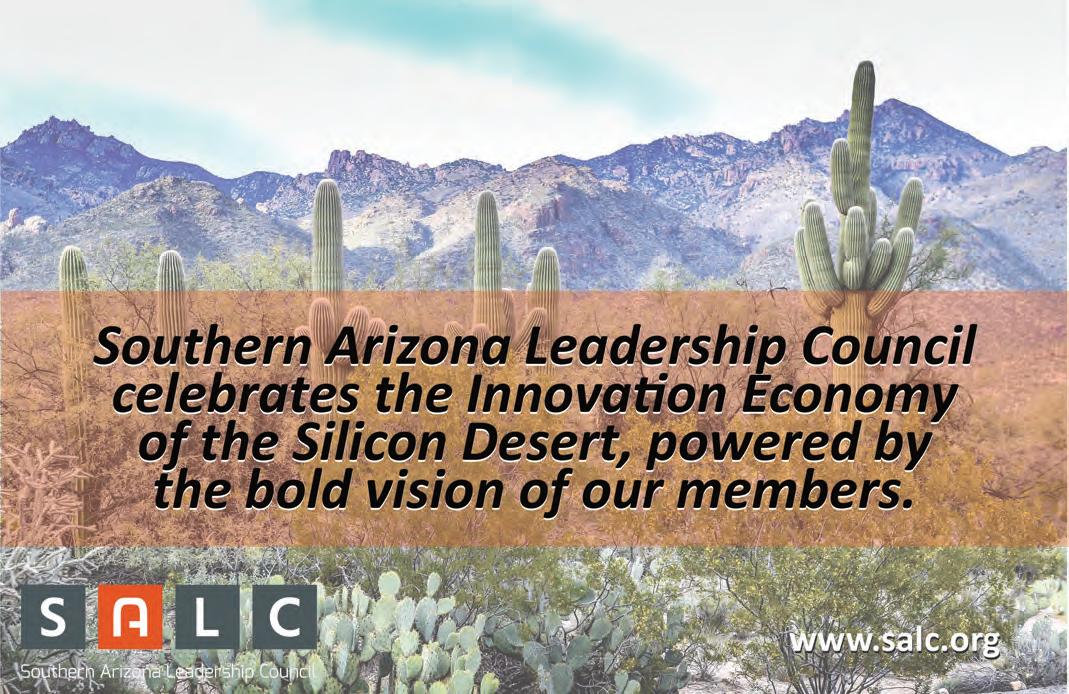
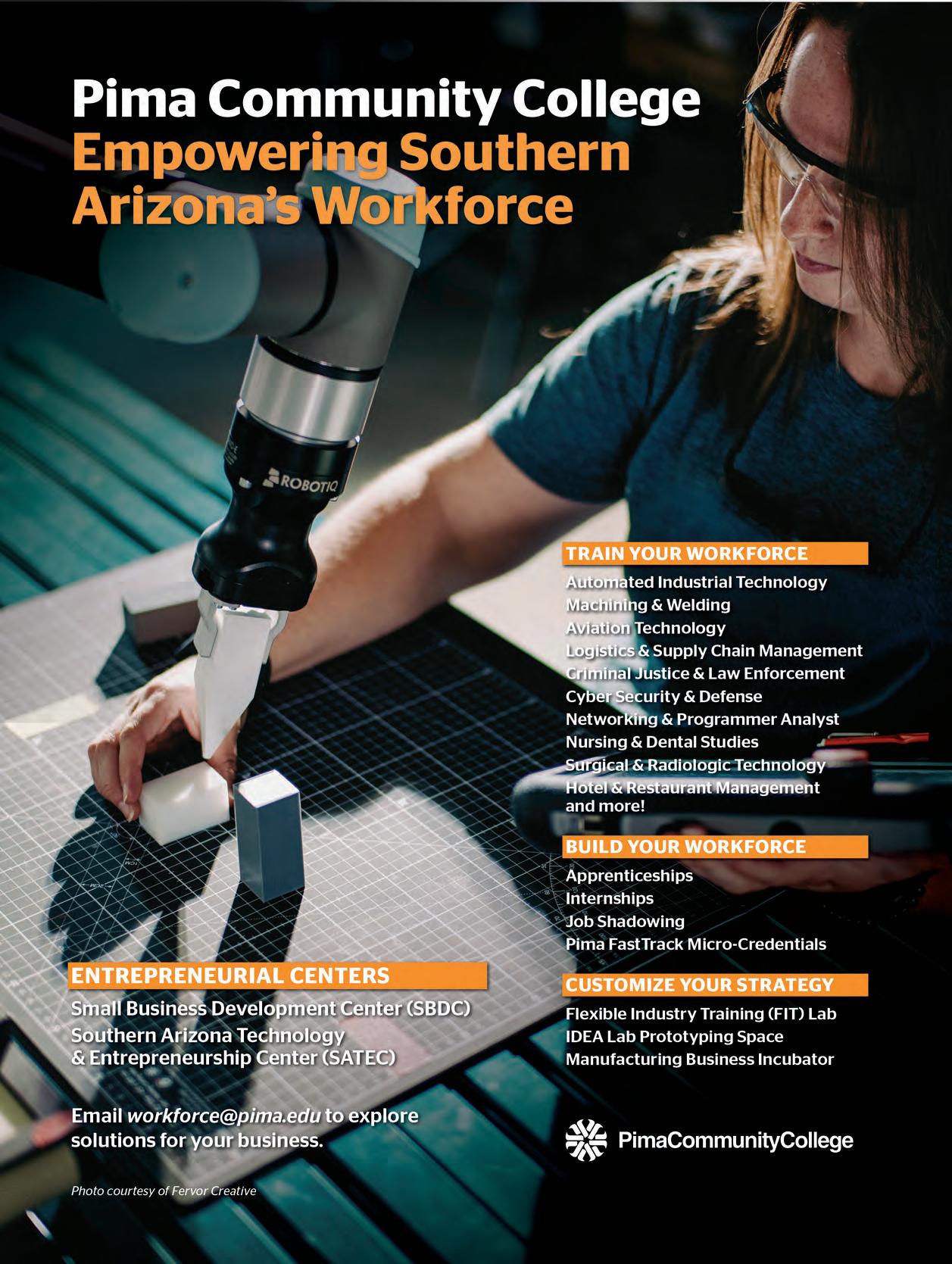


To build a coveted high-tech econo my with the accompanying high-paying jobs in a region, there has to be a start ing point for businesses.
Over the last dozen years or so, the pieces of an entrepreneurial ecosystem have come together in Southern Ari zona, giving budding entrepreneurs a chance to be a part of the foundation for the local economy.
There remain gaps – venture capital being the most obvious – but between the University of Arizona’s extensive efforts to advance research to market, and a number of incubators and organizations aimed at supporting startups, get off the ground.
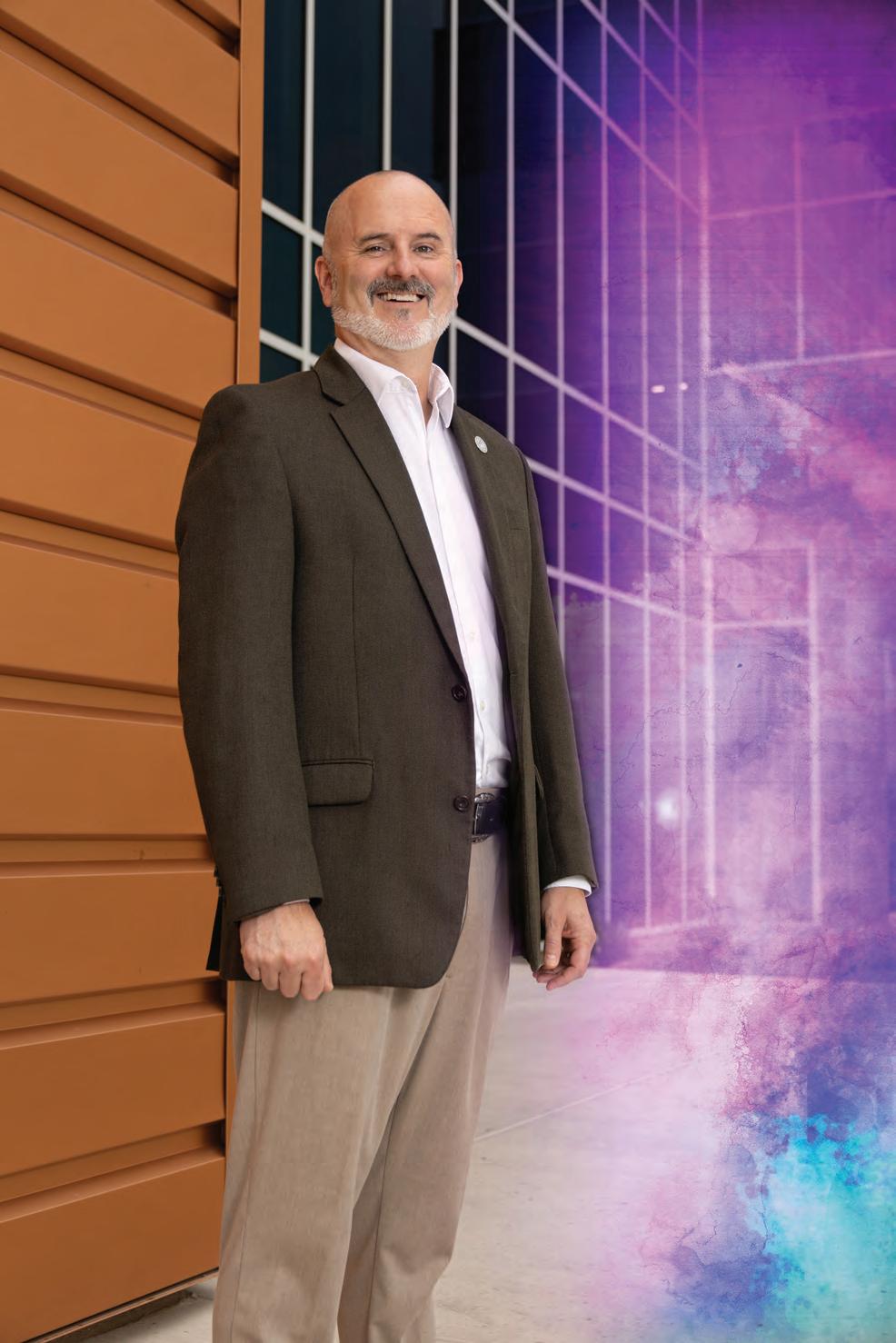



Tech Parks Arizona gives new and existing businesses a place to set up their businesses in a research park environ-
“Startup Tucson has been an ecosystem organizer since 2012 when we were founded, she said. “There were some of the more traditional small business support services like SBDC (Small Business through the process of commercializing their research from licensing to patents and connecting with venture capital.
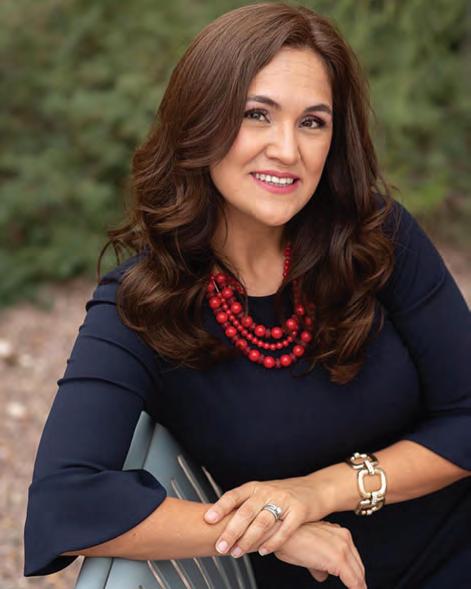

But it needs more than just the exis tence of a research university in a region to anchor innovation and the ability to get research to market, Hockstad said. It needs a commitment that eventually came in the form of Tech Launch Arizona.
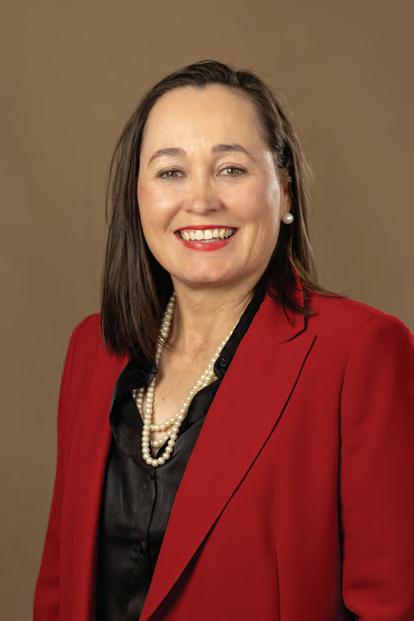
next year, not the year after, but over a long period of time. And that’s what’s happened.”
The UA’s Center for Innovation is a so-called “incubator” operating within Tech Parks Arizona that zeroes in on technology and science startups to
find the resources needed to get their technology off the ground to become scalable startup ventures with capital, potential partners, advisors and other resources all with an eye toward keeping
“At the core of what we truly offer is a programmatic piece,” said Casey Carrillo, executive director of the Center or Innovation. “We have a program that works on taking whatever the company is working on − whether that’s a specific technology, a product, a service to the market − to really focus on the commercialization piece and on the business development side.
continued on page 52 >>>


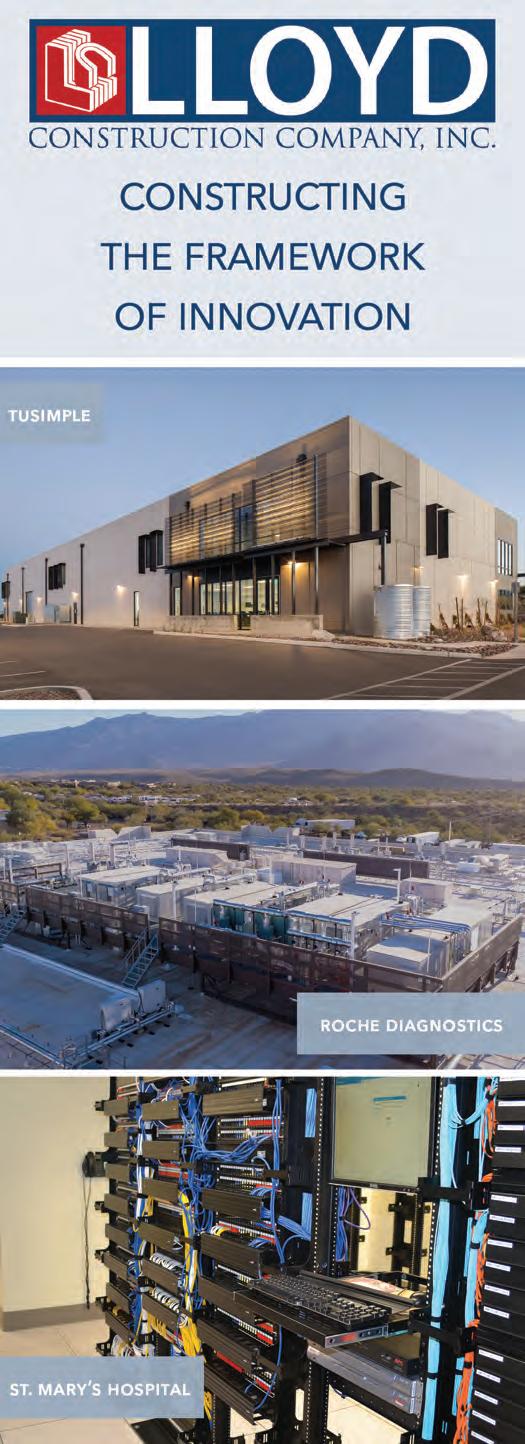
continued from page 51
“We work with them to identify customers and work to have them be successful here in Tucson or statewide. We really focus on the business side of allowing them to scale and grow within our region.”
In addition to the work Startup Tucson does to support new businesses, it created the annual week-long TENWEST Festival where attendees can rub elbows with experienced businesspeople to get in on the latest trends in technology and entrepreneurship.
“We have a program that works on taking whatever the company is working on − whether that’s a specific technology, a product, a service to the market − to really focus on the commercialization piece and on the business development side.”
– Casey Carrillo Executive Director UA Center for Innovation
Social Venture Partners Tucson pulls together philanthropy and entrepreneurs with its annual Fast Pitch Tucson event where up-and-coming nonprofits can make live pitches to donors in attendance for funding for their ventures.
The list of entities helping entrepreneurs goes on, and there’s necessary collaboration to make it all work together, said Karla B. Morales, VP of the Arizona Technology Council in Southern Arizona. She also serves as board treasurer of the Campus Research Corporation, the nonprofit entity that operates the UA Tech Parks.
“What we add to the entire state as far as the tech sector and economic development is concerned is we create the platform for the collaboration and partnership between businesses, higher education and government entities that really strengthen entrepreneurship,” Morales said of the Arizona Tech Council.
“We consider ourselves the hub that brings together all of these amazing partners in the ecosystem and sets the platform to make sure that those conversations happen, that we don’t reinvent the wheel, that we create systems of collabora-
tion that create a community support system in each one of these incubators and accelerators.”
As an example, Morales is quick to mention a new entity formed at Pima Community College to support aspiring entrepreneurs in information technology, applied technology and manufacturing. The Southern Arizona Technology & Entrepreneurship Center – or SATEC – opened last December within PCC’s Small Business Development Center.
“SATEC was designed to be the region’s destination for entrepreneurs, whether they are students, faculty or members of the business community,” SATEC manager Lydia Kennedy said in a news release announcing its formation. “It’s a place for hands-on experiences, collaborations and connections that spark real business growth.”
Still, the biggest connection that needs to be made to help all these new businesses get off the ground, and to help get all this research to market, is money.
When it comes to venture capital, Tucson and Southern Arizona don’t approach the availability of financial resources in tech hubs like Silicon Valley, Boston, Denver, even Phoenix, said Fletcher McCusker, who started a venture capital fir m in Tucson.
McCusker, well known in the region for spearheading the redevelopment of downtown Tucson through Rio Nuevo, said there’s momentum, but there’s a long way to go when it comes to having abundant funding for startups.
His firm, UA Venture Capital, began investing primarily in UA-developed technologies in 2018, and has invested about $40 million in 14 companies. Those investments have created $400 million in exits, he said. The firm still owns six of the companies in which it invested.
McCusker said he recognized an opportunity for establishing a venture capital firm by observing the research that was being done at the UA, knowing that some of that was marketable and ultimately worth taking a risk.
“When we launched our company here, people discouraged us from doing that because it’s not a financial center,” McCusker said. “They said no one’s going to know you guys, and we proved them wrong.
“Most of our interest in-state was meeting the UA research faculty. Some of these men and women have been researching their specialties for 25-30 years, and they’ve been doing it with grants. But when the grant money runs out, the product gets shelved.”
Those products are increasingly making it into the market through Tech Launch Arizona, UA Venture Capital and all the other firms and organizations working to build and support an entrepreneurial ecosystem in the region.
“We’re some sort of technology hub, some sort of spark that is attracting young people and entrepreneurial businesses and big businesses that want to be around that talent,” McCusker said. “Historically, we just waited for the phone to ring. But I do think there’s an effort now to really rethink the whole region.”
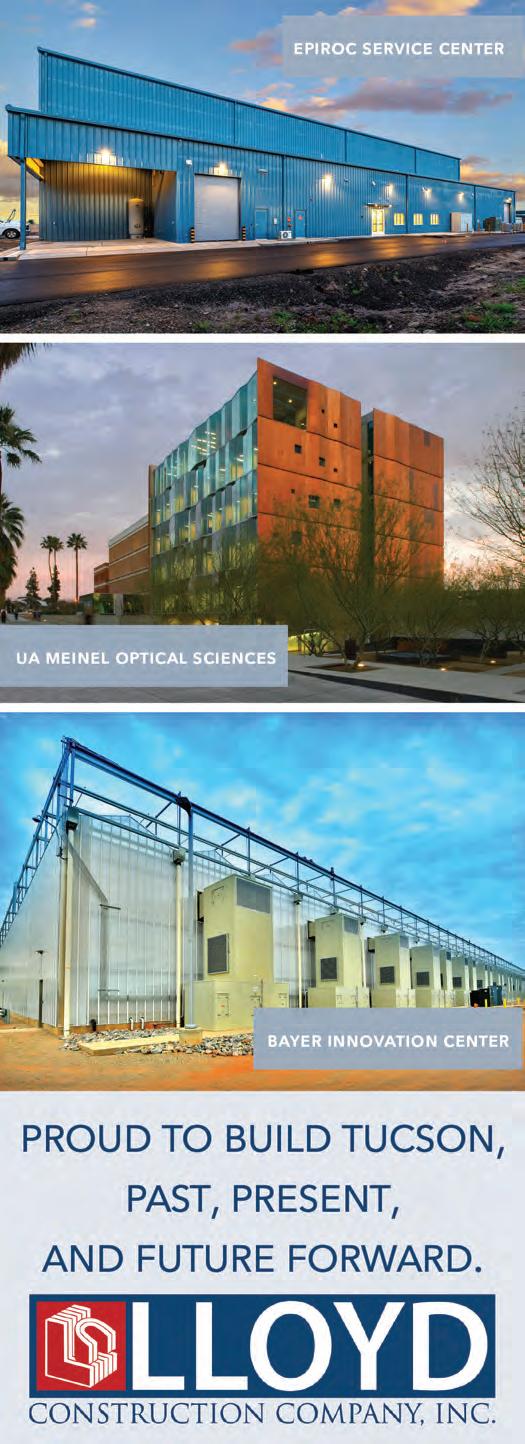
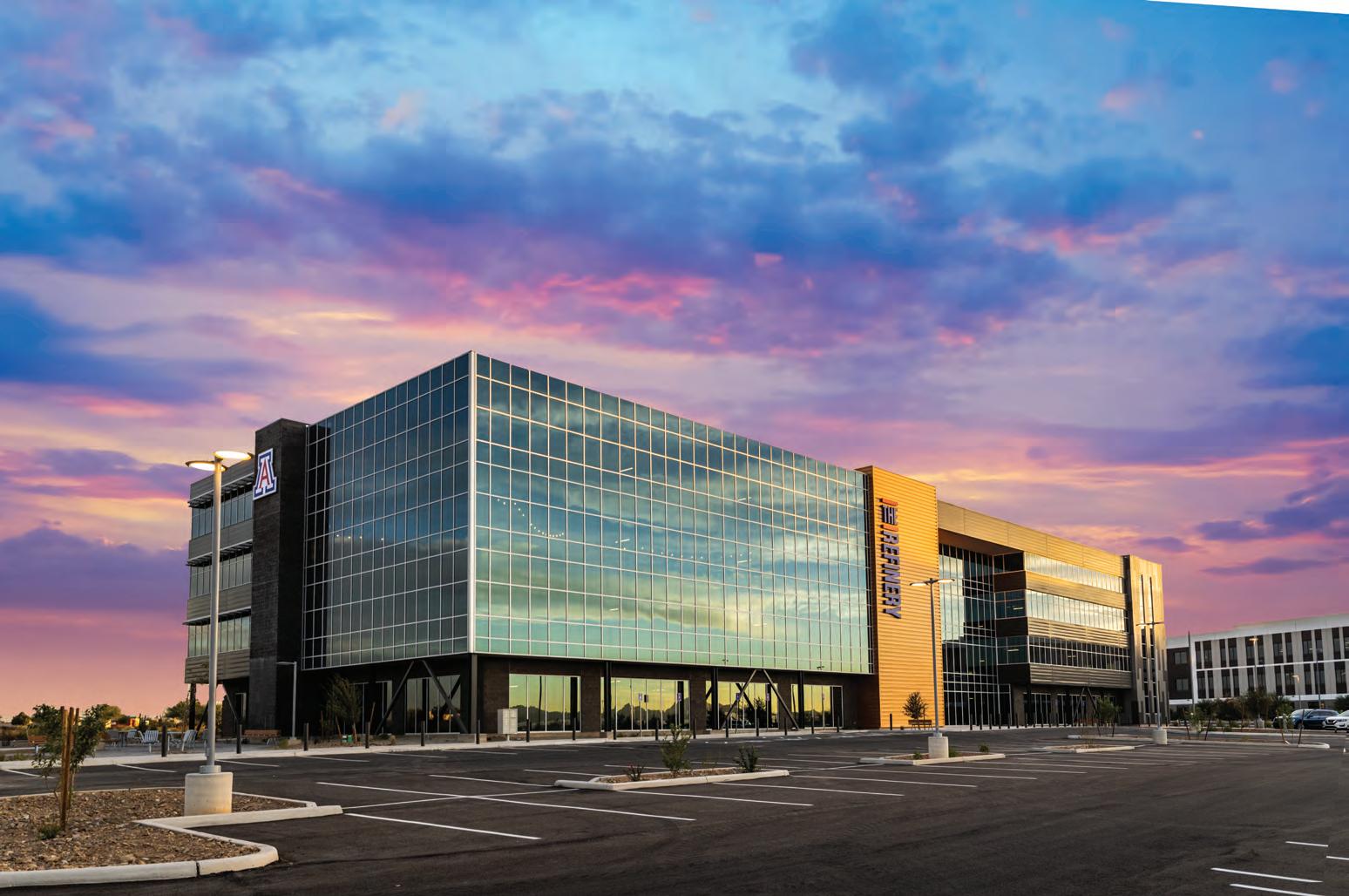
By Christy Krueger
Bringing University of Arizona-invented technologies to the world so they can better people’s lives is the heart of Tech Launch Arizona.
It’s impact in this region is unmistakable: a $1.6 billion economic impact, 600+ patents issued, 3,000+ invention disclosures, supporting 2,500 jobs and more.
Launched in 2012, TLA was a gamechanging effort to equalize the UA’s commercialization success with its world-class research, and in more than a decade, it has helped to build this region into a Silicon Desert where startup tech companies can grow and thrive.
TLA helped launch 13 startups in FY2025. Add to that, UA broke its own record for inventions, generating 324 invention disclosures, up from 307 in FY 2024.
Connecting with start-ups happens in every direction, said Douglas Hockstad,
associate VP of Tech Launch Arizona. “Primarily, license managers discover inventions or they disclose to us because they know us. At the start, we’ll determine their interest in starting a company and is the technology appropriate for the invention.”
Hockstad, who has been with TLA since 2013, explained that TLA assesses the marketability, obtains patents, and finds an industry that wants to commercialize, usually through a start-up. TLA also has an entire network of partners with expertise in domains, community collaborations, mentoring and more.
One of TLA’s latest success stories is NeuroID, which was acquired last year by Experian. NeuroID was founded in 2015 by Joseph Valacich, a professor of management information systems at UA’s Eller College of Management and Jeff Jenkins, a then-doctoral student at Eller, now a professor at Brigham Young
University. It was based on their research into mouse-cursor tracking and other human-computer interaction.
“It’s like a lie detector that can determine how confident people are with forms on websites or determine risk that there’s something wrong with their answers,” Hockstad said. An example, he noted, is when someone is applying for a loan, NeuroID allows for better screening.
ProxyBio by Branch Therapeutics is another TLA startup that just launched this year. Its technology helps identify the most effective individualized drug therapies for patients with colorectal cancers. Hockstad said TLA was able to get $3.5-$4 million in investment to move it forward.
Yet another company, iCRx, backed by a decade of research, aims to deliver accurate, refractive error correction in one minute. “Everyone can relate to



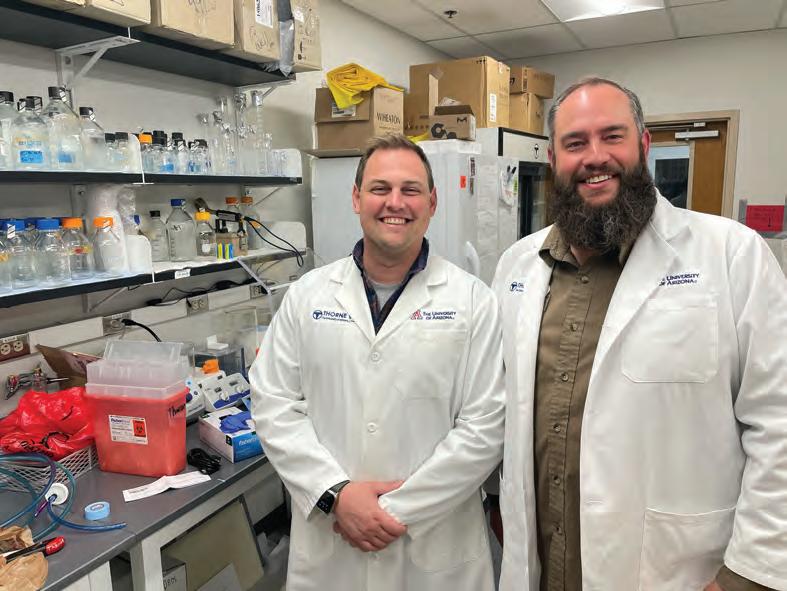
“With a top-tier research university, the Tucson area has long been a hotbed of innovation.
– Douglas Hockstad, Associate VP, Tech Launch Arizona
going to the eye doctor. This uses laser technology and in 60 seconds it gives your accurate prescription for eyeglasses,” Hockstad said.
Funding for TLA comes from various sources. “Part is by UA, part comes from the royalty stream of licenses – about $10 million per year, and we also have philanthropy endeavors raising investment funds.”
Goals are the same for TLA each year – to grow engagement with UA faculty, to see more inventions discovered and to get them out in the world to impact people’s lives. Hockstad considers UA and TLA to be major contributors to attracting technology businesses here. And he feels the region is truly becoming a Silicon Desert–a diverse technology center with growth, especially in optics.
“With a top-tier research university, the Tucson area has long been a hot-

bed of innovation,” he said. “However, in the last decade or so, the university put resources and people behind the ef fort to move innovation forward, out of the lab and into the market.. Combined with Tucson’s attractiveness – environ ment, cost of living and available work force from the university, as well as the growth and focus on the Tech Parks to support tech industries, it was a natural evolution.”
Education and workforce develop ment are key for this region. “There are other regions that have pieces of what we have. UA is a world-class research institution. You have to have that, and the physical environment is conducive to people wanting to be here. Above all, are the people involved.”
Hockstad reinforced the importance of growing the ecosystem. “We need large companies here to help grow the economy. The more we have, the more


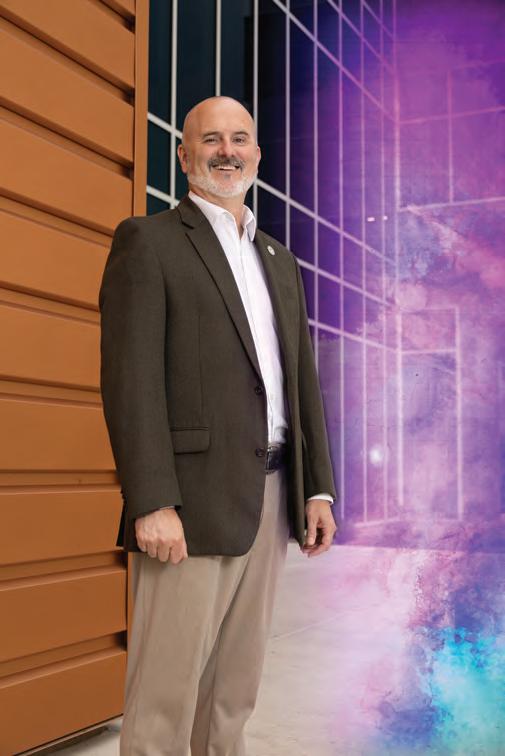
By Tara Kirkpatrick
For more than 30 years, Tech Parks Arizona has harnessed the power of the University of Arizona to fuel tech companies to market from its multi-location network across the region.
Its annual economic impact? $2 billion.
“At Tech Parks Arizona, we’re not just bringing in new companies—we’re committed to helping existing technology leaders stay, grow and thrive here,” said Carol Stewart, University of Arizona VP, Tech Parks Arizona. “We do this by connecting them to the right people, securing facilities that allow for quick expansion, and strengthening the workforce pipeline.”
Across its purpose-built assets, which include UA Tech Park, UA Tech Park at the Bridges and UA Center for Innovation, startups and tech giants work side
by side. Among its more than 100 companies, Tech Parks supports 52 startups in industries that include healthcare/ biotech, software and AI, engineering, climate tech and imaging. In all, Tech Parks supports more than 6,000 knowledge workers.
Tech Parks offers its client companies an invested team and resources that assist with everything from launching a business to facilities coordination. This allows tenants to focus on innovation while their infrastructure needs are met. Tech Parks is fostering groundbreaking work across every corner of the tech spectrum.
Take, for example, Eurofins CellTx, which presides over a 15,000-square foot-facility within Tech Parks to screen living human cells. The company just partnered with Roche Tissue Diagnos-
tics this year to help hasten donor test ing for transplants across the world.
Dimensional Energy, a Tech Parks tenant since 2022, is converting carbon dioxide emissions into jet fuel, beauty products and wax for surfboards. The startup recently raised $20 million in Series A funding, and is supported by United Airlines Sustainable Flight Fund and Microsoft’s Climate Innovation Fund.
These are just a few highlights of world-changing Tech Parks tenants.
“What sets Southern Arizona apart for tech startups on a fast growth trajectory is the depth of resources anchored right here at the UA Tech Park,” Stewart said. “We offer specialized facilities— wet labs, dry labs, prototyping centers, and living labs which give founders the tools to test, build, and scale. This is
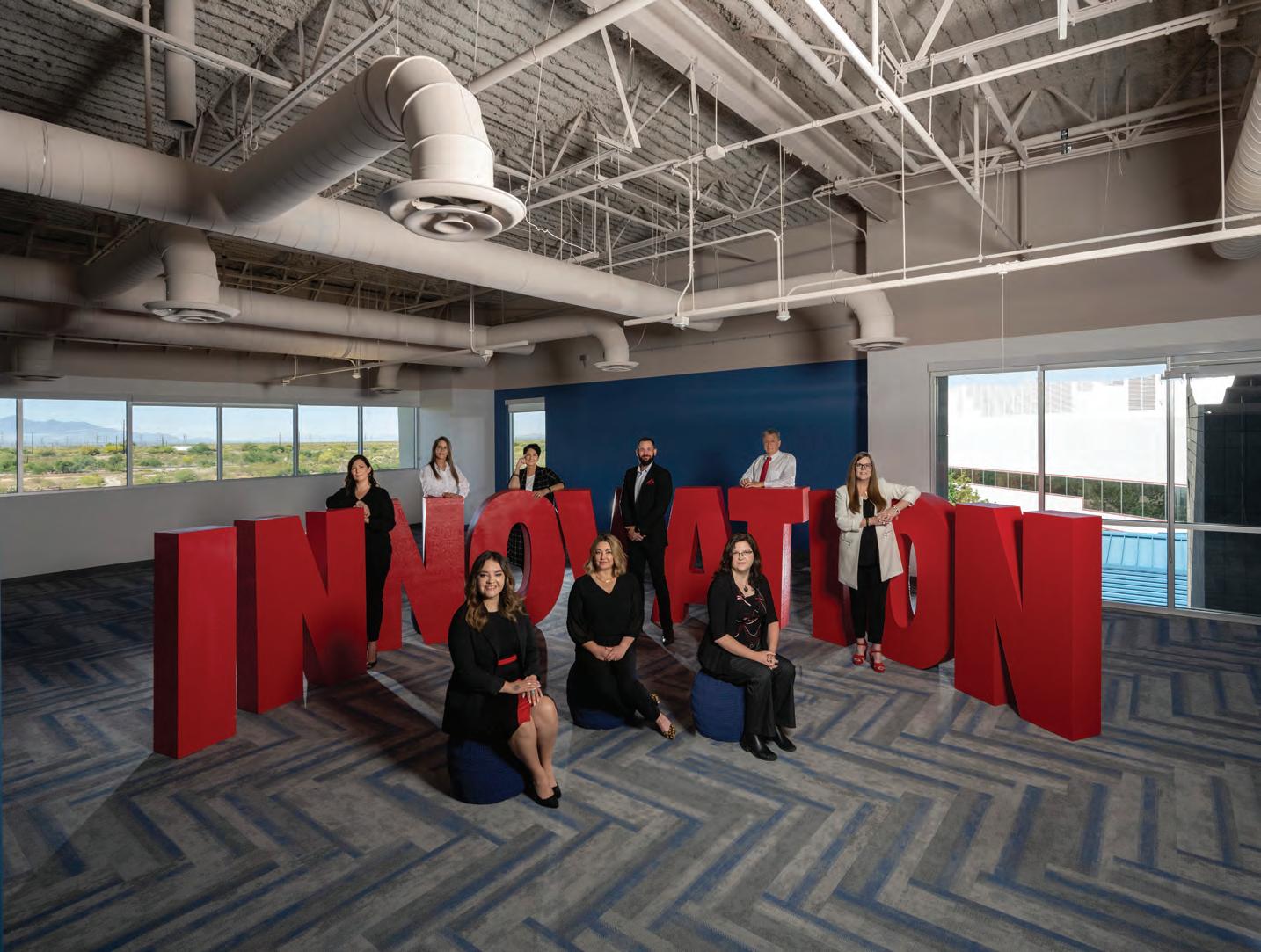
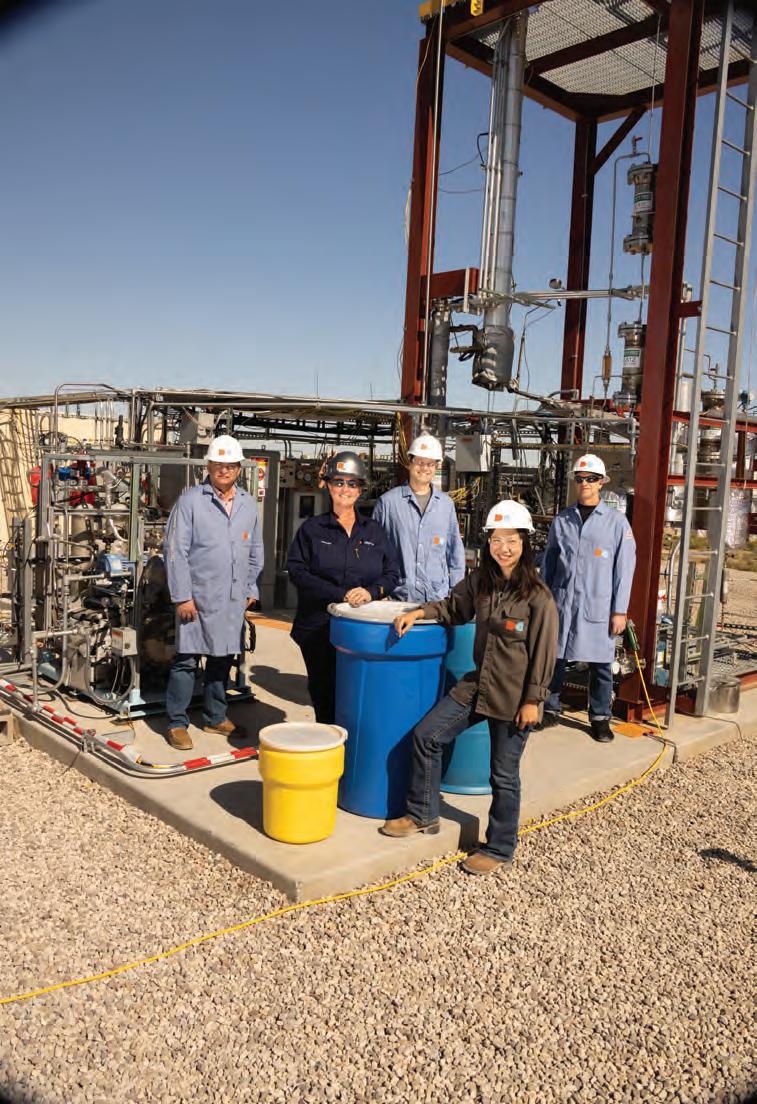





Speaking of facilities, the Solar Zone at UA Tech Park is one of the largest solar demonstration sites in the United States. In a region where the sun shines 85% of the year, this 243-acre living laboratory enables solar technology to be tested and analyzed so developers can determine the most optimal systems. Here, companies such as Arzon Solar, Deriva Energy, Iron Horse Energy Storage & Solar and Tucson Electric Power are working on real-world solutions.
Finally, anchor tenant IBM’s recent long-term lease renewal that will station the global company at UA Tech Parks
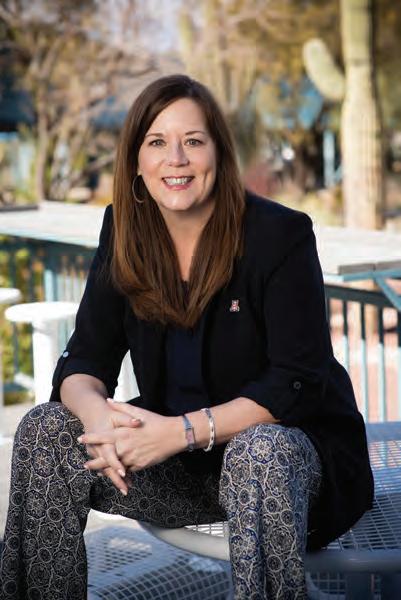
the depth of resources anchored right here at the UA Tech Park.”
– Carol Stewart, University of Arizona VP, Tech Parks Arizona


for 15 more years is a testament to Tech Parks’ mission. It “reflects our hands-on approach to ensuring established companies have the facilities, resources, and rategic support they need to continue investing in Southern Arizona,” added Stewart.
“This kind of engagement is at the heart of university-based economic development—helping companies thrive locally while strengthening the regional economy and workforce.”



By Tara Kirkpatrick
Launching a new technology to market depends on the right people, place and programming to make it a success.
The University of Arizona Center for Innovation offers the best of all three.
Operating within Tech Parks Arizona, this nationally recognized incubator has assisted more than 300 companies, with a focus on science and tech industries, since its inception in 2003. In the process, UACI has generated $664.8 million in economic output. (2021-23)
Companies from within Southern Arizona and globally apply to be accepted into UACI–46% of its startups are UA alums, students and tech transfer. Once here, these nascent companies are provided with world-class infrastructure and mentorship, including a signature 28-point roadmap to success that is unique to UACI.
UACI Executive Director Casey Carrillo highlights a few of its successful alumni companies and promising startups:
“At UACI, CarbeniumTec has accelerated from groundbreaking university research to a venture with real-world impact—advancing their organic, metal-free redox flow batteries as a sustainable solution for safe, long-duration energy storage at grid scale. The team is continuing to refine their product, and we are excited to see what they accomplish next.”
“Codelucida’s journey from UACI to industry success is a powerful example of innovation in action—transforming breakthrough research into advanced error-correction technology that is redefining data storage performance and efficiency across the globe.”
“LifeSpan Digital Health is on the trajectory for success. Within UACI, LifeSpan Digital Health has advanced from pioneering medical research to a scalable solution—refining the emPower+ platform to harness wearable data and predictive analytics, providing real-time insights that combat clinician burnout and promote wellness across healthcare systems. Jeff Cary and his team has utilized all our resources, and we are thrilled to see them accomplishing their milestones.”
“Lunewave’s journey from UACI to the forefront of autonomous technology showcases the power of translating research into real-world impact—leveraging patented 3D-printed Luneburg lenses to deliver compact, cost-effective radar systems with full 360-degree detection for next-generation mobility solutions.”
Carrillo also lauded the new UACI Program Roadmap© Hub—a major milestone that takes its 28-point roadmap digital.
“Business incubation is never a one-size-fits-all journey,” Carrillo said. “This digital platform was built to meet entrepreneurs exactly where they are, offering on-demand access to the expertise, tools, and guidance they need, precisely when they need it.”
Biz
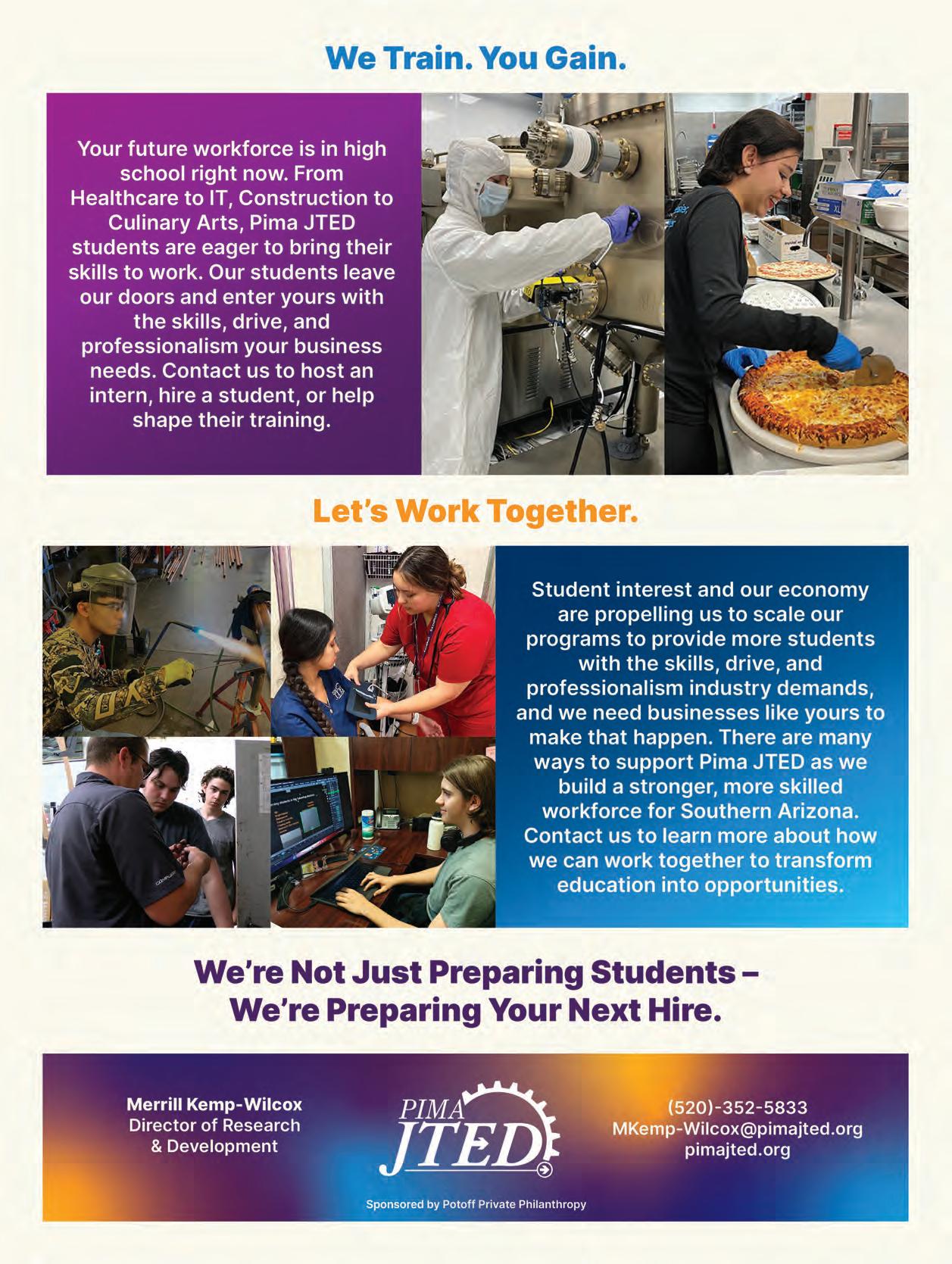

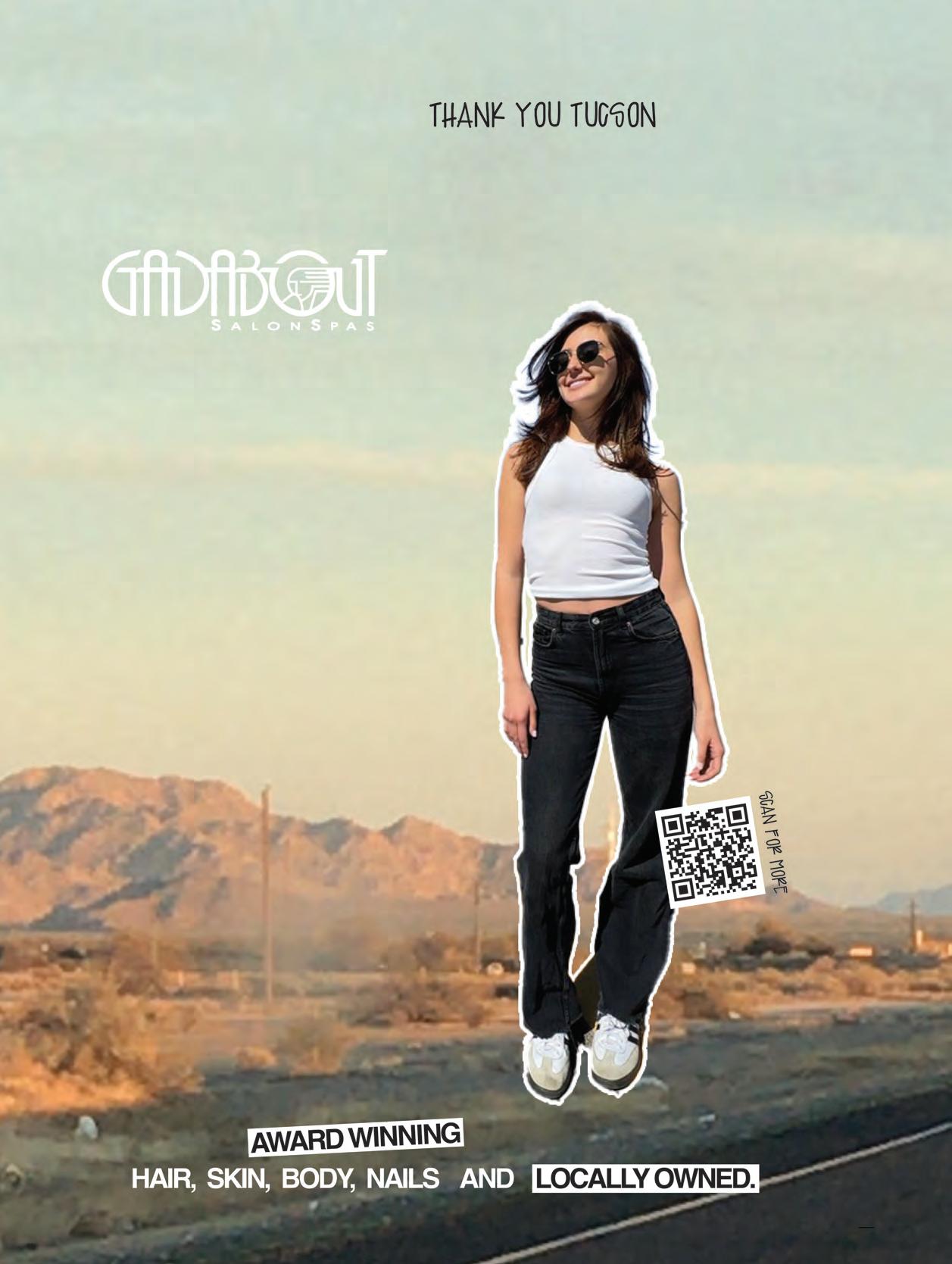

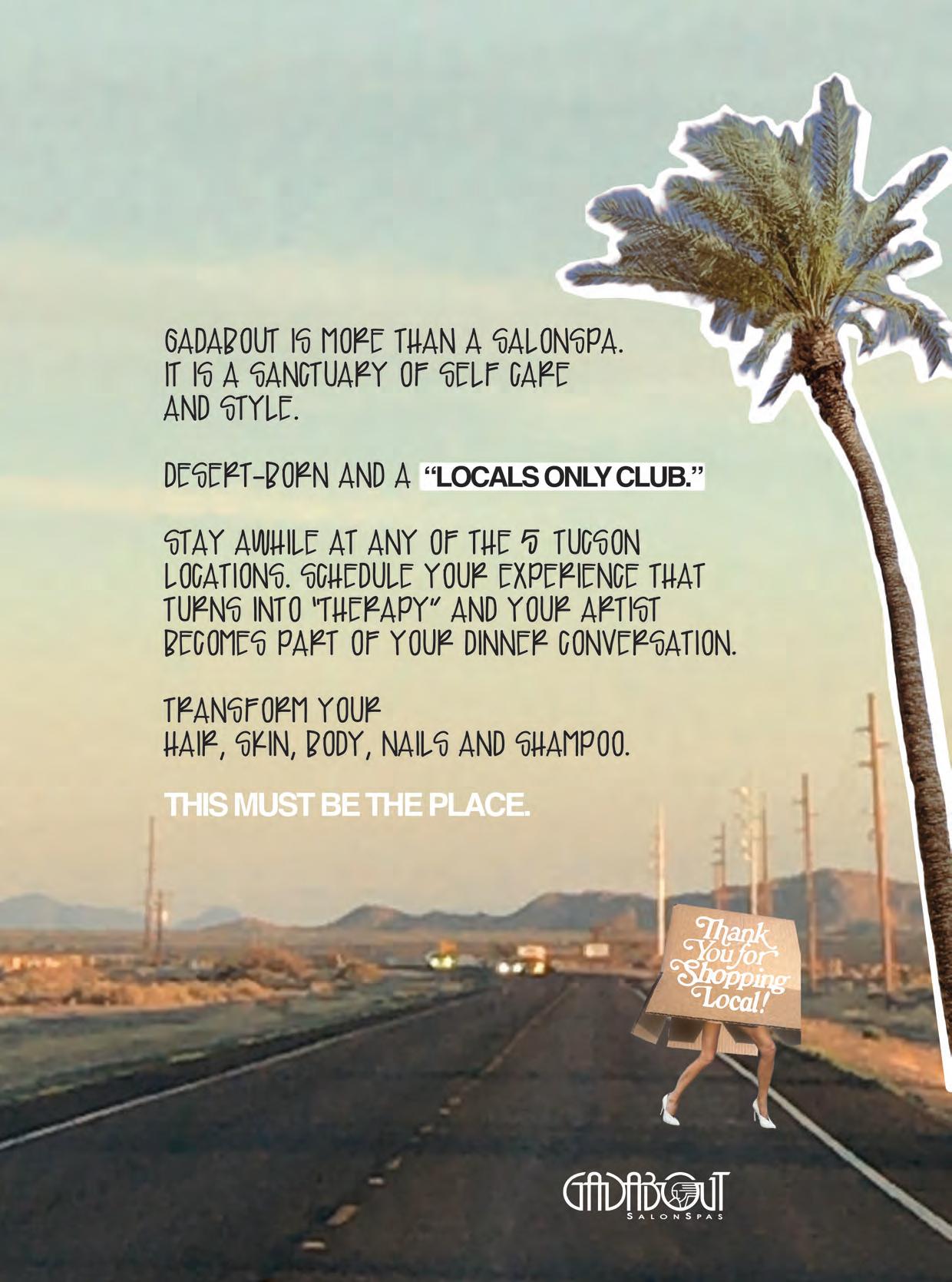

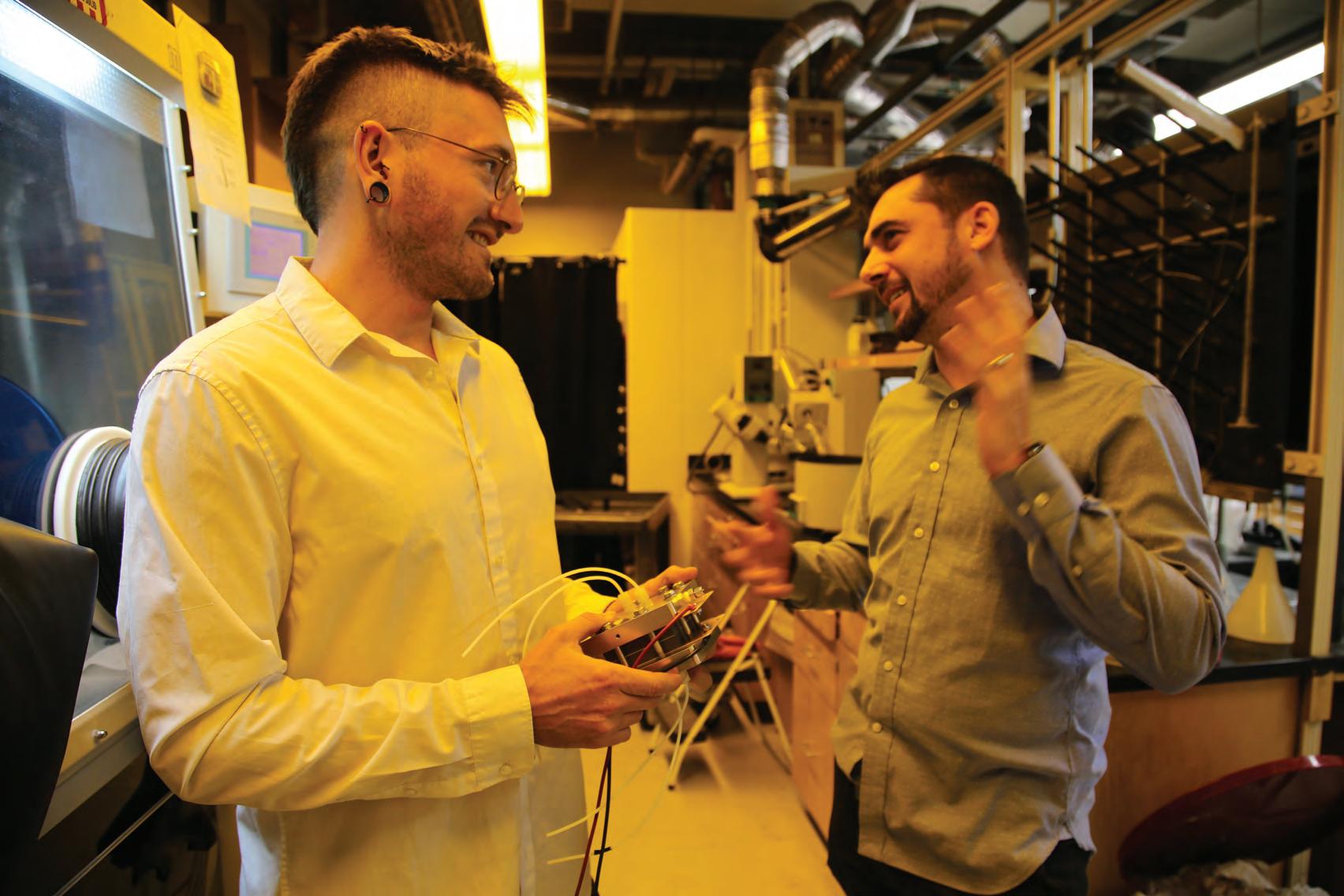
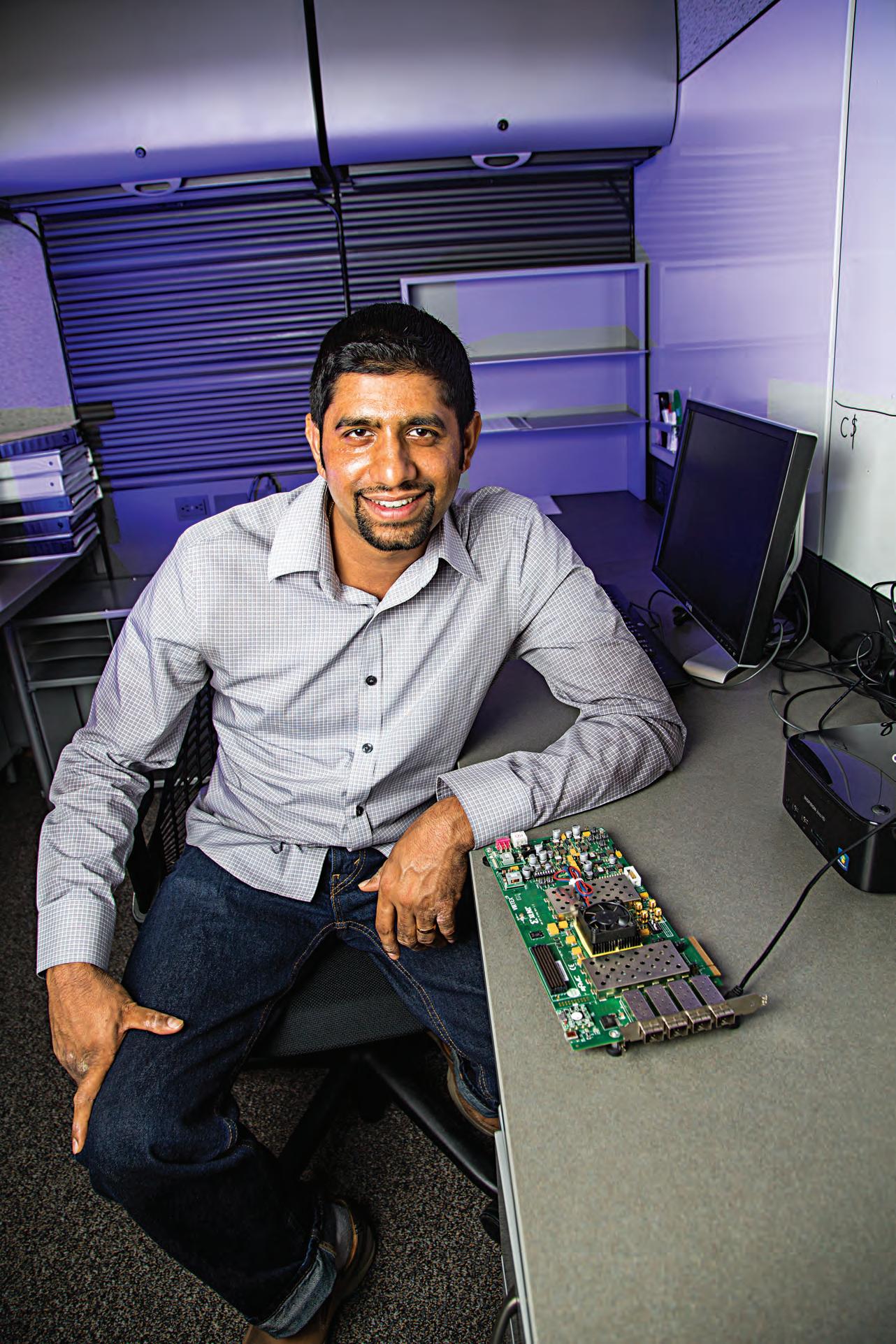
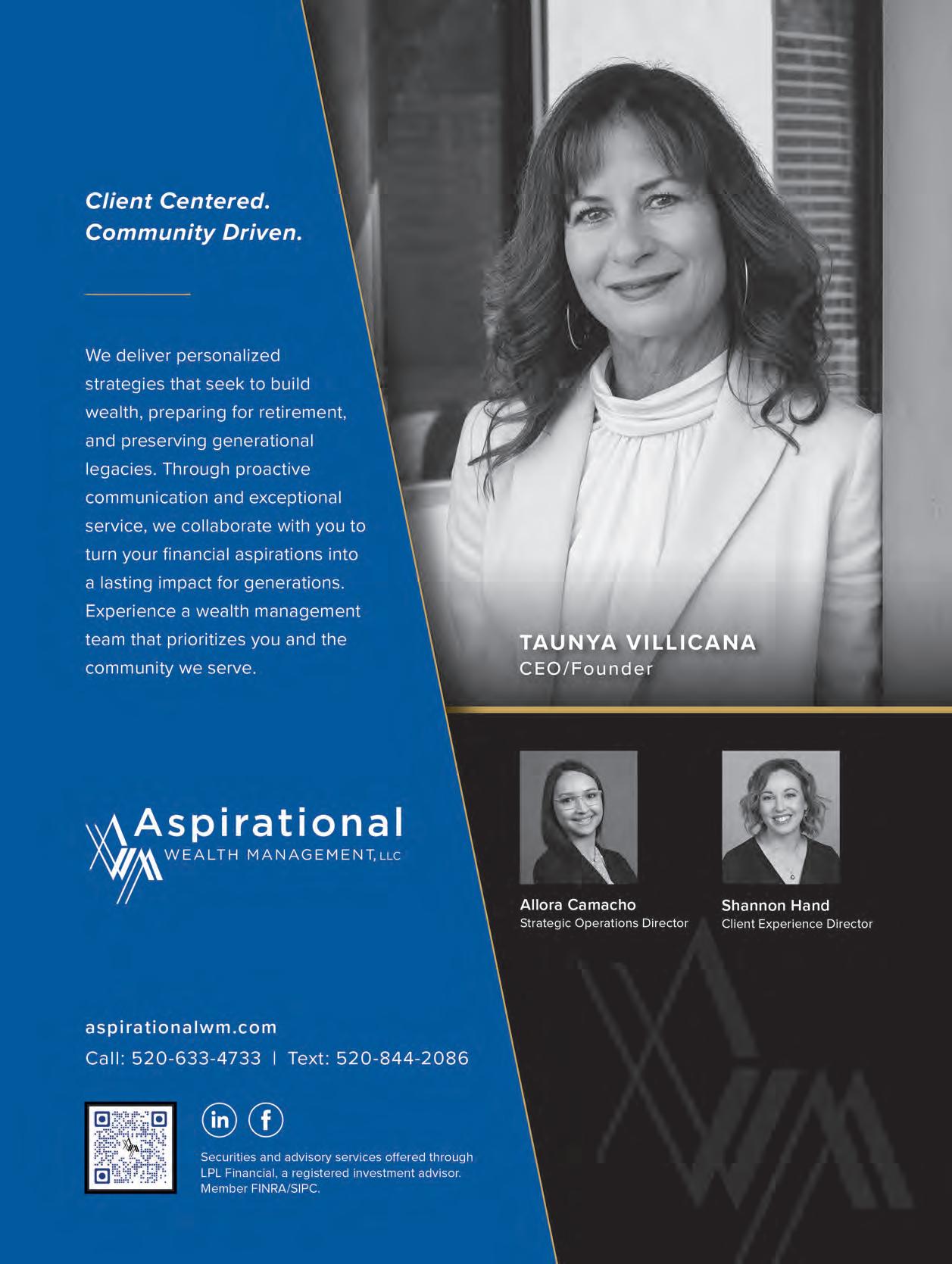
Based on collaborative studies conducted by the University of Arizona, Colorado State University, and Anivive, the company is advancing a canine vaccine for Valley fever. The company worked with UA researchers to complete preclinical testing and later secured federal funding to adapt the vaccine for human use and support a Phase 1 human clinical trial. The project builds on work from the Valley Fever Center for Excellence and the College of Agriculture, Life and Environmental Sciences.
Aging Health Sciences is commercializing eye health supplements based on an innovation developed by Dr. Robert Snyder and Dr. Brian McKay of University of Arizona’s College of Medicine –Tucson. The company focuses on formulations targeting age-related macular degeneration, offering consumer-ready nutraceuticals based on findings grounded in decades of research.
CarbeniumTec emerged from interdisciplinary research conducted by a team from the University of Arizona’s College of Science and College of Medicine – Tucson. The company is developing organic redox flow batteries that use a proprietary, metal-free electrolyte. This approach enables safe, long-duration energy storage without relying on lithium or other rare materials, offering a sustainable solution for grid-scale applications.
Codelucida originated from research at the University of Arizona’s Department of Electrical and Computer Engineering, where its founders developed advanced error-correction algorithms for flash memory. These algorithms enhance data integrity and efficiency in devices like SSDs, smartphones, and data centers. By improving performance and reducing storage costs, the technology supports broader adoption of high-capacity memory solutions for multiple industries.
continued on page 64 >>>




continued from page 63
FreeFall Aerospace began with research in radio astronomy at the University of Arizona and now develops inflatable, steerable antenna systems. These lightweight, energy-efficient designs support satellite communications, remote sensing, and mobile networks. The technology is applicable across commercial, defense, and space sectors.
iCRx is combining expertise from the James C. Wyant College of Optical Sciences and the College of Medicine – Tucson. Its One-Minute Eye Exam device uses laser-based optics to quickly and objec tively generate eyeglass prescriptions. The technol ogy streamlines vision diagnostics, making eye care more efficient and accessible.
LifeSpan Digital Health was founded based on an innovation from the University of Arizona’s College of Medicine – Tucson to address healthcare professional burnout. Based on decades of research conducted by the head of emergency medicine Dr. Samuel Keim, the emPower+ platform integrates wearable data and predictive analytics to monitor stress and support wellness in clinical environments. The system provides real-time insights for both individuals and healthcare organizations.
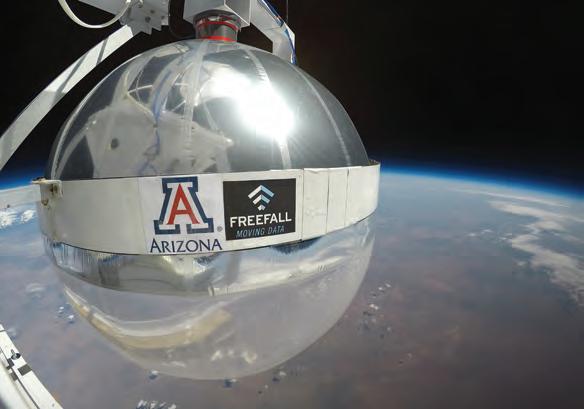

Lunewave was founded to bring University of Arizona research in radar and lens technology to market. Its patented 3D-printed Luneburg lens enables full 360-degree detection for autonomous vehicles and mobility systems. The radar units are compact and cost-effective, offering an alternative to traditional sensor arrays.
NEUTherapeutics is advancing PhytoSERM, a plant-based supplement developed at the Universi ty of Arizona’s Center for Innovation in Brain Sci ence. The product targets menopausal symptoms, particularly hot flashes, and is currently in Phase 2 clinical trials. Earlier studies showed the formula tion to be safe and effective, and the company has received federal funding to support further research. continued on page 66 >>>
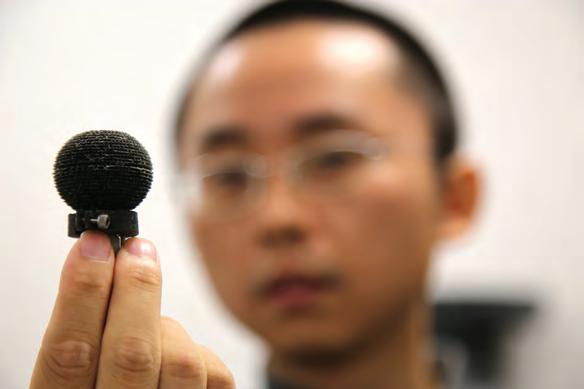
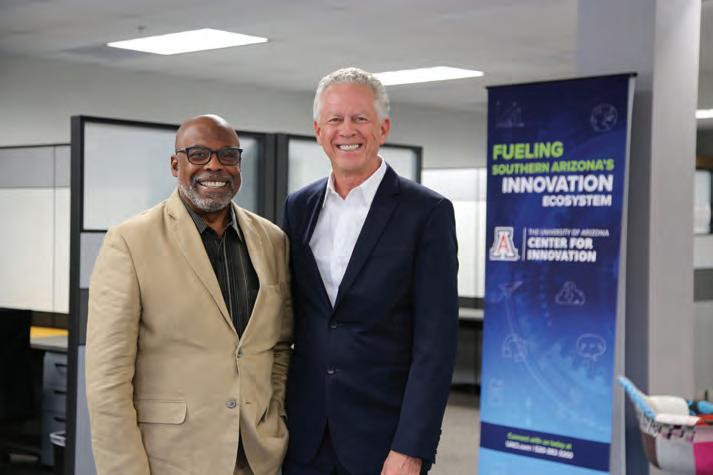
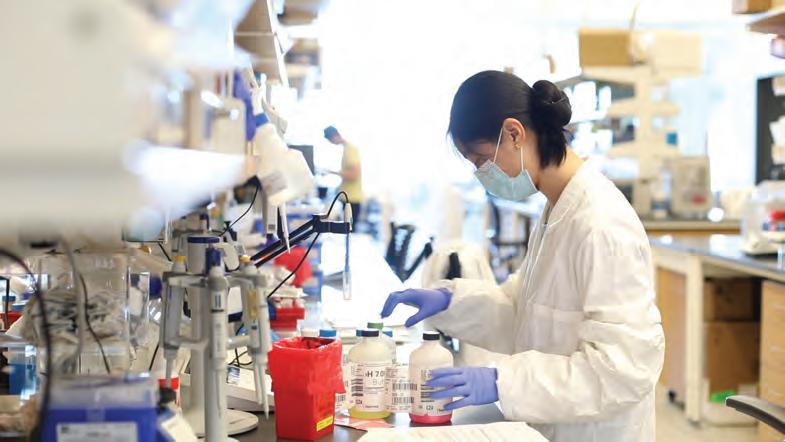







continued from page 64
ProxyBio is a biotech startup leveraging research from the University of Arizona’s College of Medi cine – Tucson and the BIO5 Institute. Its plat form uses patient-derived 3D cell cultures to test thousands of drug compounds, helping identify personalized cancer treatments. AI integration en hances predictive accuracy and speeds up the drug discovery process.
DeUVe Photonics was founded to commercialize deep-ultraviolet laser technology developed at the University of Arizona’s James C. Wyant College of Optical Sciences. The company’s compact, highpower lasers operate in the 230–400 nm range, serving applications in defense, semiconductor manufacturing, and advanced sensing. Their sys tems fill a critical gap in the UV laser market.

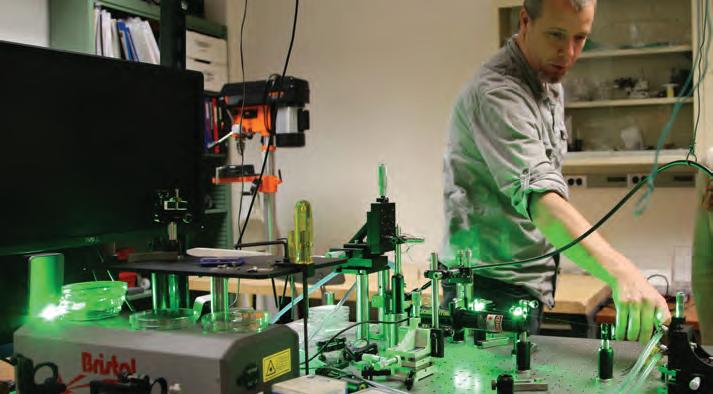
FreeFall 5G is a collaboration between FreeFall Aerospace and ED2, both Tucson-based companies with ties to University of Arizona research. Their FreeStar5G antenna is designed for next-generation wireless networks, offering extended range, low power consumption, and high data rates at lower costs.
VerdiTx was formed to commercialize green light therapy research conducted at the University of Arizona’s College of Medicine – Tucson. The therapy, developed by Dr. Mohab Ibrahim and Dr. Rajesh Khanna, offers a non-pharmaceutical approach to chronic pain management. It uses specific wavelengths of light to modulate pain responses, contributing to new methods in neuromodulation and patient care.


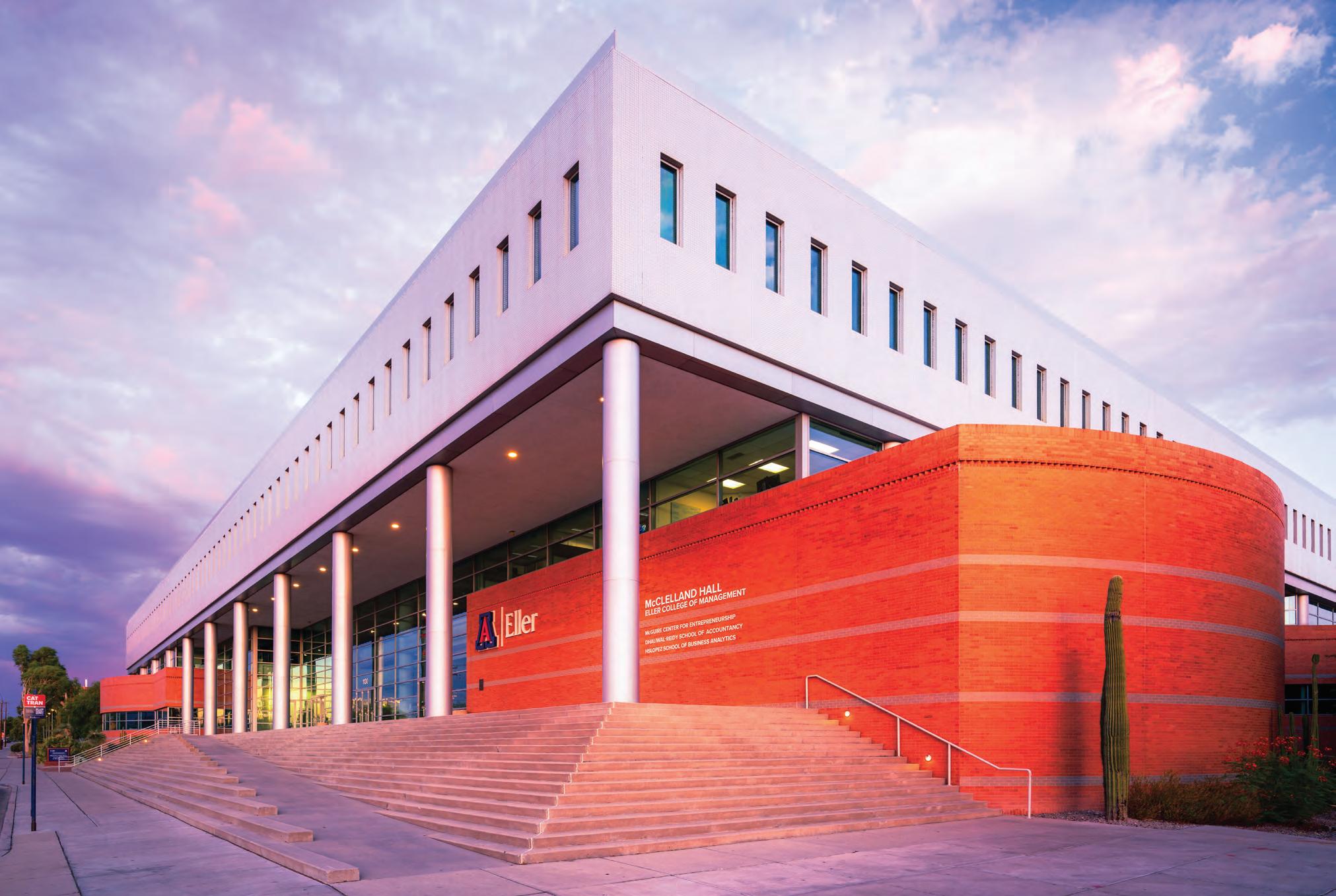

Karthik Kannan
Dean and Halle Chair in Leadership
Eller College of Management
The University of Arizona
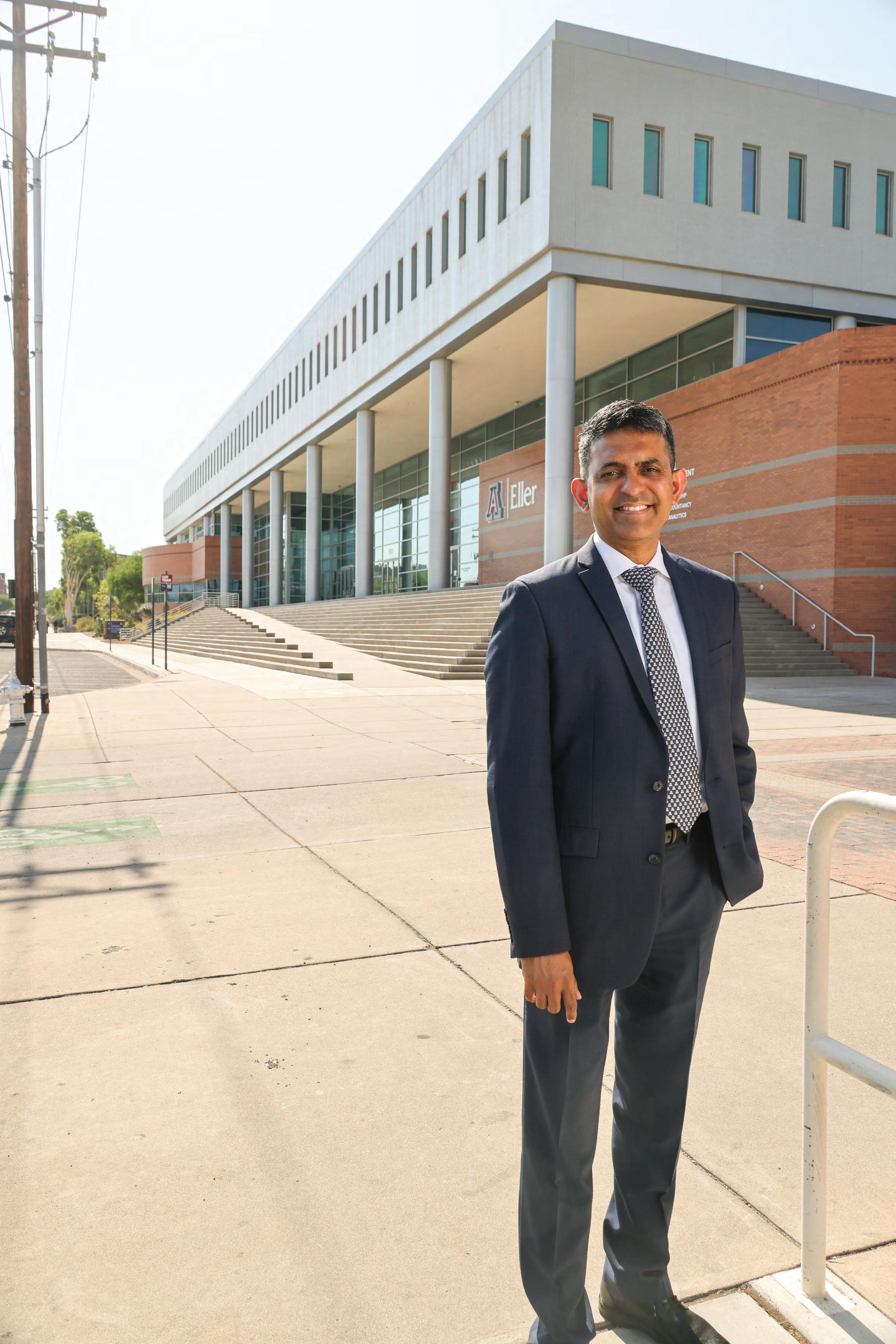


By Dave Perry
“Eller.”
The word stands alone next to the block “A” on McClelland Hall, along Helen Street on the University of Arizona’s north end.
Say “Eller,” and leaders in business, industry, and education know what you’re talking about. Yet few understand the full breadth, reach, and impact of the Eller College of Management.
Dean and Halle Chair in Leadership Karthik Kannan is deepening awareness of Eller’s might, within the college itself, across the U of A campus, and certainly across Arizona, the nation, and the world.
His goal is to keep Eller “among the world’s premier business schools.”
“Eller has always been, and will continue to be, shaping business through education, impact, and research,” said Kannan, who took the helm at Eller in 2022. “There are spectacular things happening within Eller.”
Kannan—a distinguished researcher who has authored numerous published papers—leverages enthusiasm and creativity, backed by academic credentials and experience in private industry, in his role at Eller. As a trailblazer in digital transformations, analysis of digital traces and strategic foresight, he utilizes analytical and entrepreneurial skills to implement programs that prime Eller students for success.
“Dean Kannan has really changed the trajectory of the college,” said Anastasiya Ghosh, Ph.D., associate professor of marketing and associate dean of partnerships at Eller.
He’s done so by “building collaboration outside of Eller, within the univer-
sity and other colleges, as well as with external entities in business and industry,” Ghosh said. “Our work has impact that goes beyond the walls of our school.”
Industry and community collaborations are key components of Kannan’s philosophy to propel students into the future.
“While Eller may have been more insular in the past, Karthik has actively fostered deeper connections both within the university and with the greater Tucson community,” agreed Pamela Jorden, Ph.D., assistant dean of Eller graduate programs.
Jorden cited Eller participation in Tucson’s “40 Under 40” event celebrating emerging leaders and “Professionals Who Shine,” which honors regional leaders. Kannan has also championed creation of dual-degree programs between Eller and other U of A colleges such as Engineering and the College of Medicine—a “unique endeavor at many universities—as well as the development of Eller-led multidisciplinary teams through the Eller Partnerships Office that collaborate with local businesses to address real-world problems.
Jill German, head of Roche Tissue Diagnostics, credits Kannan’s leadership with creating “an entrepreneurial ecosystem where students help companies solve real-world challenges while preparing for their roles as the next generation of civic and business leaders.
“That’s how you build a competitive local economy and a resilient community.”
First, ‘We produce students’
For Kannan, and Eller, it all begins with students.
Eller is among the U of A’s largest
colleges, with 8,100 undergraduate students, 1,300 graduate students, 24 academic programs, and more than 130 world-caliber faculty members.
Eller now offers 18 graduate programs. Latest to the portfolio are Master of Science degrees in Artificial Intelligence, Online Marketing and Economics degrees, and a streamlined, OneYear MBA. These programs exemplify Eller’s commitment to an innovative, digital-first strategy that makes its programs accessible to students worldwide.
“We took a bold step - one that reflects both innovation and adaptability - by launching four new graduate programs,” Jorden said. “These offerings represent a strategic pivot toward flexible, market-driven, and streamlined education at a time when professionals are actively seeking faster, more accessible ways to upskill.”
“The future of business is going to be about technology,” Kannan said. “We must equip our students” with technical and analytical skills “so they excel in research, business, and community.”
The three ‘R’s at Eller
“Our strategic priorities are Reputation, Rankings, and Resources,” Kannan said. “Excellence in all three elevates our prominence and impact.”
Eller certainly has the academic reputation: Among many top national rankings, its management information systems graduate program is rated among the nation’s top three best public university offerings of its kind according to U.S. News & World Report
Post-graduation, Eller alumni are “impacting their communities for good,” said Kannan. “We compete with institutions that have far greater resources, yet our alumni consistently
continued on page 81 >>>
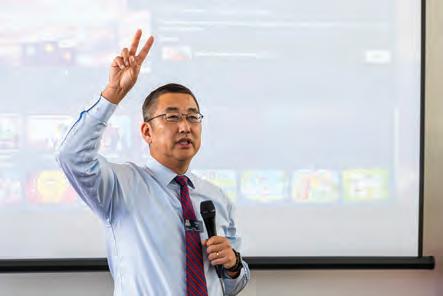

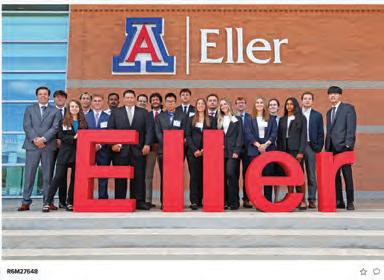
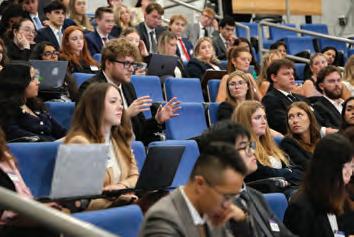
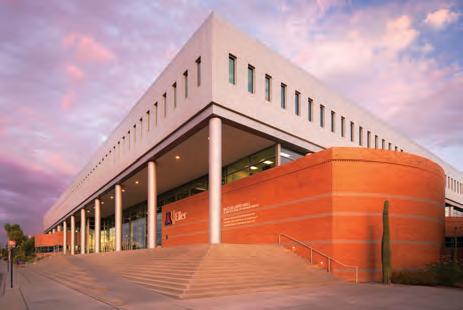
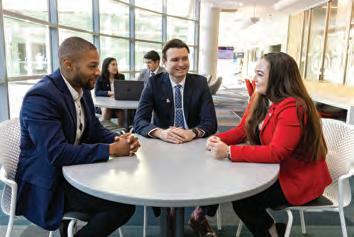
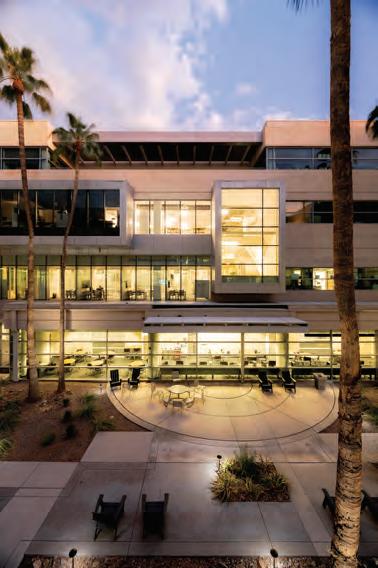

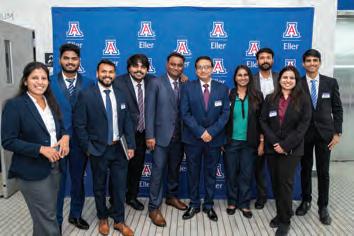
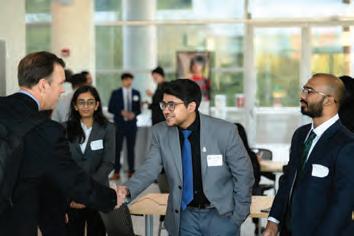
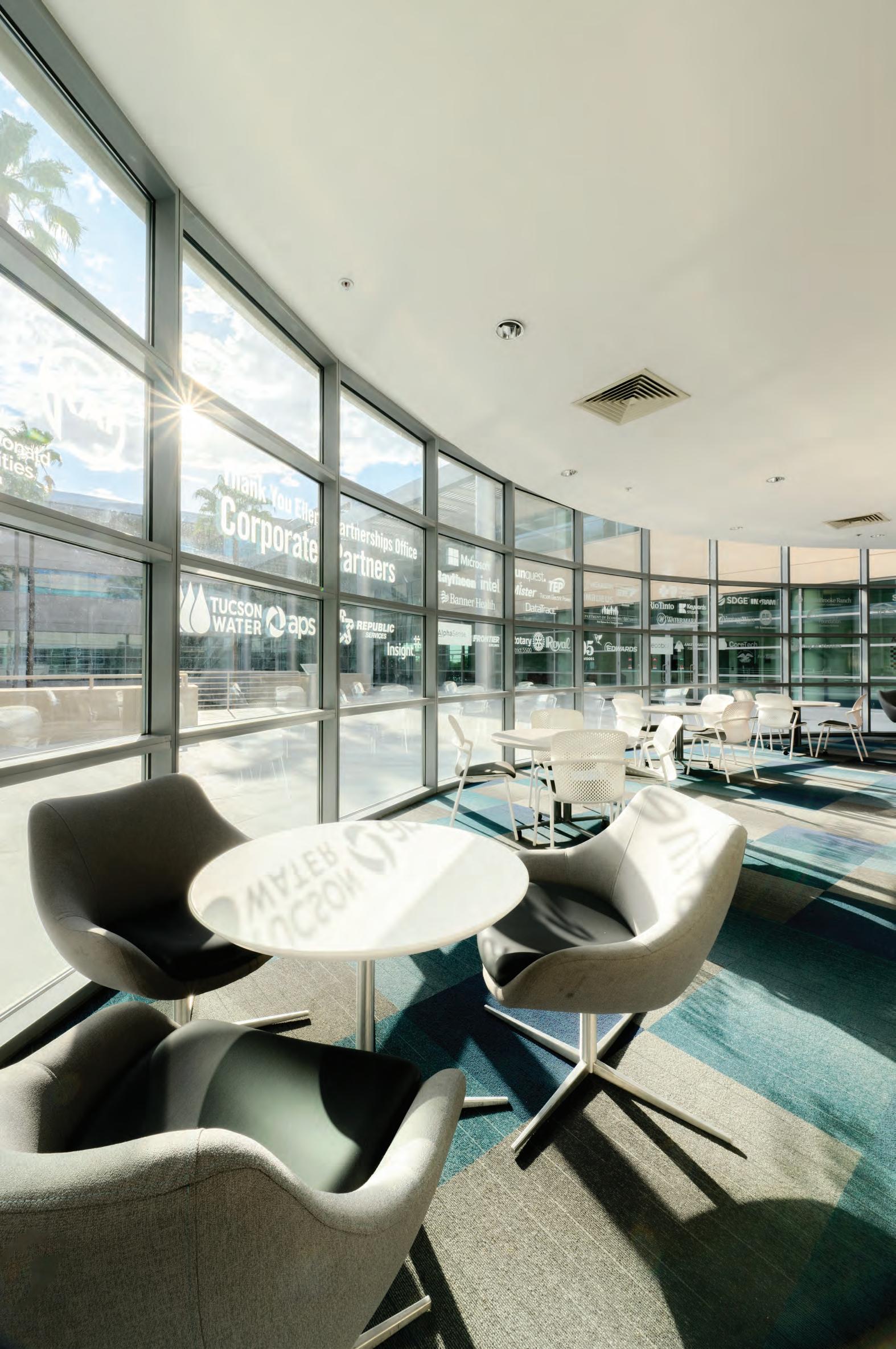




By Dave Perry


Artificial Intelligence is “the talk of the town,” according to The University of Arizona Eller College of Management Dean and Halle Chair in Leadership Karthik Kannan.
In fact, AI has been the talk of Tucson for 36 years, dating back to the founding of Eller’s Artificial Intelligence Laboratory in 1989 by U of A Regents’ Professor of MIS Hsinchun Chen. The visionary endeavor was the world’s first AI lab or center within a business school, and Eller remains at the forefront of AI business education with the recently launched Online Master of Science in AI for Business — one of four new Eller master’s degrees enrolling students for fall 2025.
“Eller is reinforcing its position as a leader in innovative business education,” Kannan said. “It is our ongoing mission to provide real-world education and present high-level opportunities for our students. We’re set up right for impacting society.”
Each of the four new programs the Master of Science in AI for Business; the streamlined One-Year MBA; the Online Master of Science in Economics; and Online Master of Science in Marketing offers immersive learning experiences with the U of A’s world-class faculty along with cutting-edge information, technology and research from the college rooted in more than a century of tradition.
Graduate students, who can access one-on-one guidance and career management resources from Eller’s Graduate Professional Development Center and real-world industry ex-
periences through Eller’s Partnerships Office, have six-figure earning potential. They also forge connections with a network of more than 300,000 alumni across 150 countries.
To accommodate busy people who need to keep earning while learning, three of the programs are 100% online and asynchronous, giving students flexible, high-quality options to attain their master’s degrees.
“People don’t want to take time off from their careers and spend the number of hours they’re spending in the classroom,” Kannan said. “This is a way to get access to that degree without giving up that income stream or time with their kids, and to better their lives for the future.”
Eller is intentionally meeting students where they are, according to Patricia Prelock, provost and chief academic officer at the U of A.
“The expansion of Eller’s graduate portfolio exemplifies how the University of Arizona is reimagining professional education for the digital age. These programs... represent a strategic expansion that aligns with workforce demands and student needs.”
The new programs reflect the realities of a fast-paced, remote-friendly world, according to Pamela Jorden, Ph.D., assistant dean of Eller graduate programs.
“While accelerated and online degrees aren’t new, the decision to offer a condensed MBA alongside specialized online master’s programs
signals a deeper institutional shift,” said Jorden.
“It acknowledges that traditional, two-year, on-campus models no longer meet the needs of every learner—particularly working professionals and career changers. This move is also driven by a highly competitive graduate education landscape and the growing need for universities to respond more quickly to industry demands.”
The instructional design utilized in the new programming provides students with the highest quality of education— as demonstrated by Eller’s nationally recognized programming including the No. 3-ranked public Online Master’s in Cybersecurity; No. 3-ranked public Online MIS; and No. 7-ranked public Online MBA according to U.S. News & World Report.
“With today’s technological advancements, interactive platforms, and real-time faculty engagement, online programs can match—or even exceed the engagement levels of traditional classrooms,” Jorden said.
The changes in education segue with innovation in industry, according to Susan Gray, CEO of Tucson Electric Power and chair of the board of The Chamber of Southern Arizona.
“Our industry is not the only one undergoing incredible transformation. Amid accelerating innovation, evolving customer expectations, the digital revolution and other factors, companies are reimagining tradi-
continued on page 72 >>>

By Dave Perry
From Sunday evening to 10 p.m. on Friday, without pause, the warehouse at Roche Tissue Diagnostics (RTD) in Oro Valley is humming.
In a given week, large quantities of empty large plastic bottles, dispenser parts, vessels of fluid and truckloads filled with pallets, cardboard boxes and spools of clear-plastic wrap funnel through one truck bay in the RTD warehouse space.
Ideally, materials sit in the warehouse for mere minutes to optimize production and distribution of life-saving cancer diagnostic solutions bound for Indianapolis and Mannheim, Germany. An interdisciplinary team from the University of Arizona Eller College of Management Partnerships Office (EPO) is helping to expedite that process.
In 2024, Roche entered a two-semester partnership with Eller’s Immersion Learning Projects program to analyze and solve costly warehouse bottlenecks. The program is one of numerous collaborations facilitated by the EPO with businesses in Tucson, Phoenix and beyond to solve real-world problems for its partners. Launched in 2023, the EPO is helping transform workforce development and boost economic prosperity for local and regional economies. Partnership projects typically span one semester or an academic year.
“The Eller Partnerships Office is a conduit between the college and the university and our industry and community partners,” said Anastasiya Ghosh, Ph.D., associate dean of partnerships with Eller.
“The goal is to solve an in-demand industry problem by leveraging our amazing students and faculty and to make sure that our students are workforce ready and are receiving relevant, timely knowledge about their disci-
plines and how to work in different roles in cor porate America. These projects also provide real value to our partners.”
The impact has been significant for RTD, which was challenged with efficiently moving materials and finished products through the warehouse to “optimally utilize the space for growing business needs,” according to Himanshu Parikh, Ph.D., Roche’s VP of global operations.
He emphasized that “the slightest delay” can wreak havoc.
Enter the Eller consulting team led by Mohammed Shafae, professor in the U of A College of Engineering. Eller students Ximena Peregrino, Cole Hansen, Julie Amato, Noureen Mithaigar, and Eleni Canez were tasked with creation of a 3D model of the warehouse using the software Simio to “visually digitalize and reorganize” the space.
The investment paid quick dividends: Students designed a staggered schedule for deliveries and product shipping so that overlap is minimized, flow is maximized and money is saved.
“To listen to them ... is very refreshing and exciting,” Parikh said of the students. “They have a different perspective which helps us to look at things differently.”
“These are very digitally savvy students teaching us about the software,” said Lansing Redford, Roche lead data analyst and project leader.
“The EPO program is extremely business-friendly. Their attitude is, ‘Let’s figure it out.’”
The 3D model enables Roche to study different possible configurations to move materials, finished products and people.
Simio “doesn’t give us theories; it lets us test theories,” Redford said.
“We can poke it, twist it, change it, without additional cost,” Parikh said. “You can do all the manifestations digitally. We can visualize them and then evaluate, ‘Did we get the expected result?’”
With warehouse flow optimized, RTD can grow its business up to 8% a year without adding more space.
There are practical future considerations for RTD, which plans to continue working with Eller graduate students to create a digital model for the entire factory.
Parikh added the importance of this partnership being local to Tucson: “It makes a huge difference.”
RTD Head Jill German categorizes the partnership as a win-win for everyone involved and encourages other businesses to take full advantage of resources offered by Eller.
“The project led to tangible improvements in our manufacturing workflow processes and outputs, which ultimately affects our ability to impact customers. Students in the program get good experience in solving the real-world business problems we have, while we receive benefits from their innovative viewpoints, and maybe solutions we haven’t thought of,” German said.
“Eller then becomes a source of innovation and practical problem-solving. We built on their unique skills to move our processes forward.”
The Eller Partnerships Office works with 88 companies of all sizes from diverse sectors on experiential projects involving 28 faculty and 141 students. The office has experienced 188% year-
continued on page 75 >>>
From left –Sandhya Rangaswamy; Anastasiya Ghosh, Ph.D., associate dean of partnerships with Eller; Bailey Lloyd, associate director of corporate partnerships for Eller
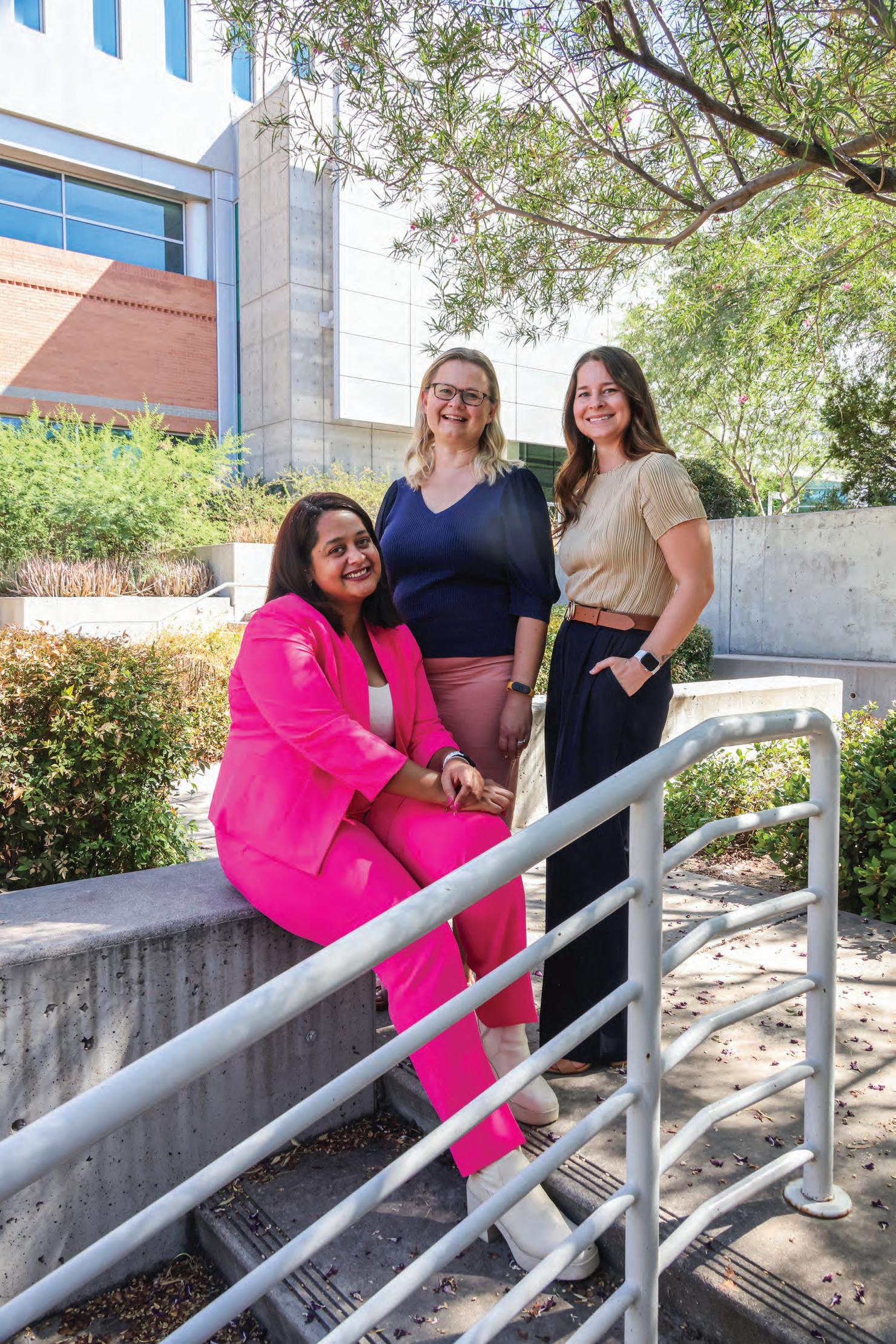


over-year growth and has generated $2.2 million in revenue for the U of A since its inception in 2023. Partnerships in Tucson and Phoenix have been formed with companies in diverse sectors including semiconductors; airlines; data analytics; energy and utilities; aerospace and defense; healthcare; retail; consumer goods; entertainment; mining; nonprofits and more.
Other EPO offerings include the Consortium for Environmentally Resilient Businesses, a collaboration between the academic, business and regulatory communities that focuses on climate change challenges, sustainable business practices and energy consumption.
Utilities companies from Arizona and California compose the hub of the consortium, which works with academics and students to advance knowledge, develop the next generation of leaders and improve policy regulation.
“The consortium is an opportunity for our students to provide consulting for a group of companies in our communities that share common challenges and come together to pool their resources—not only money, but data and knowledge—to produce better outcomes,” said Ghosh.
Consortiums and consulting projects are transforming traditional graduate education and creating unique ports of entry for students to learn in real time, according to Bailey Lloyd, associate director of corporate partnerships for Eller. Students apply technical skills in a non-classroom setting and attain crucial soft skills in communication, teamwork, resilience and management.
“These experiences are invaluable to our students and are a great resource and asset to our partner companies. They help our students to be as successful as possible and to show what they have learned, how to apply it, and how to make real change in an organization,” said Lloyd.
Raytheon, an RTX business unit, has experienced that value firsthand, according to Mark Edmondson, senior solutions architect with Raytheon. An Eller alum with a Master of Science in MIS, Edmondson is the Raytheon liaison for the Eller Immersion Learning Projects. He has worked on a variety of
projects directly with student teams including blockchain; democratized data; alternative business value for portfolio management; and leveraging lightweight 3D digital models (digital twins) to accelerate the business.
He credits the teams with “fitting in a niche that provides the same quality of research and work as a consulting firm.” Their efforts have had a measurable impact in Raytheon strategic investments.
“Raytheon is always evaluating our technology portfolio and refining our capability roadmaps and Eller students provide us with thousands of research hours to refine those roadmaps that would not be possible otherwise,” said Edmondson.
Immersion projects and consortiums also keep companies and students abreast of emerging trends and alternative business approaches while promoting idea exchange. Additionally, they aid with talent acquisition in an era when hiring has become challenging for potential employees and employers alike.
“It is hard to discriminate real talent from someone who ran it through an AI profile creator and businesses are using similar profiles. . .it has become a war of AI profile creators for jobs and potential new hires. . .and working with Eller students is a great way to combat that,” Edmondson said.
In addition to imparting workforce readiness skills in management, coordination and leadership, the hands-on experiences can net student internships or permanent employment.
Roche retained Mithaigar, a Master’s in MIS candidate, as a summer intern to “fine tune” the warehouse model while earning a final credit toward her degree.
“It was a transformative experience. I contributed to a real-world manufacturing optimization project alongside a talented team of University of Arizona students,” Mithaigar said.
“This experience has elevated my understanding of warehouse operations, data-driven decision-making, and simulation modeling. I’m excited for what’s next.”
Sandhya Rangaswamy, who completed undergraduate studies in chemistry at the University of Delhi and is a 2026 candidate for a dual Master of Science in Business Analytics/Master of Science in MIS, has doubled down on consulting projects. Her experiences with Banner Health and Roche “created situations where people from different majors all came together as one team, one mind, which was both interesting and challenging.”
Rangaswamy said the projects provide excellent workforce preparation on every level.
“They help you shape yourself for the future, building the adaptability to work effectively with different people and circumstances. Here, you can experiment with techniques you might not get to try in the real world, and you have the upper guidance of professors through the Partnerships program—it’s like a guiding light.”
In the highly technical business environment facing graduates today, handson job training and development of soft skills communication, resilience, teamwork— are imperative, according to Ghosh.
“Our program essentially takes onthe-job training in-house, which reduces the risk for companies. . . because they can preview the talent, and it prepares students to be workforce ready on day one,” said Ghosh.
Ultimately, the EPO is strategically building U of A/business relationships that benefit the city, region, state and beyond.
“The University of Arizona has long been a resource for remaining on the cutting edge and Eller is a prime example of that,” said Edmondson.
“The Tucson business community and U of A are joined at the hip in a mutually beneficial relationship. The Eller Partnerships Office is one of the best ways to lean into that relationship and ensure that Tucson is not just a pitstop for higher education but actually a destination for careers.”
Businesses interested in prospective partnerships with the EPO can learn more at https://eller.arizona.edu/engage/ partnerships-office.
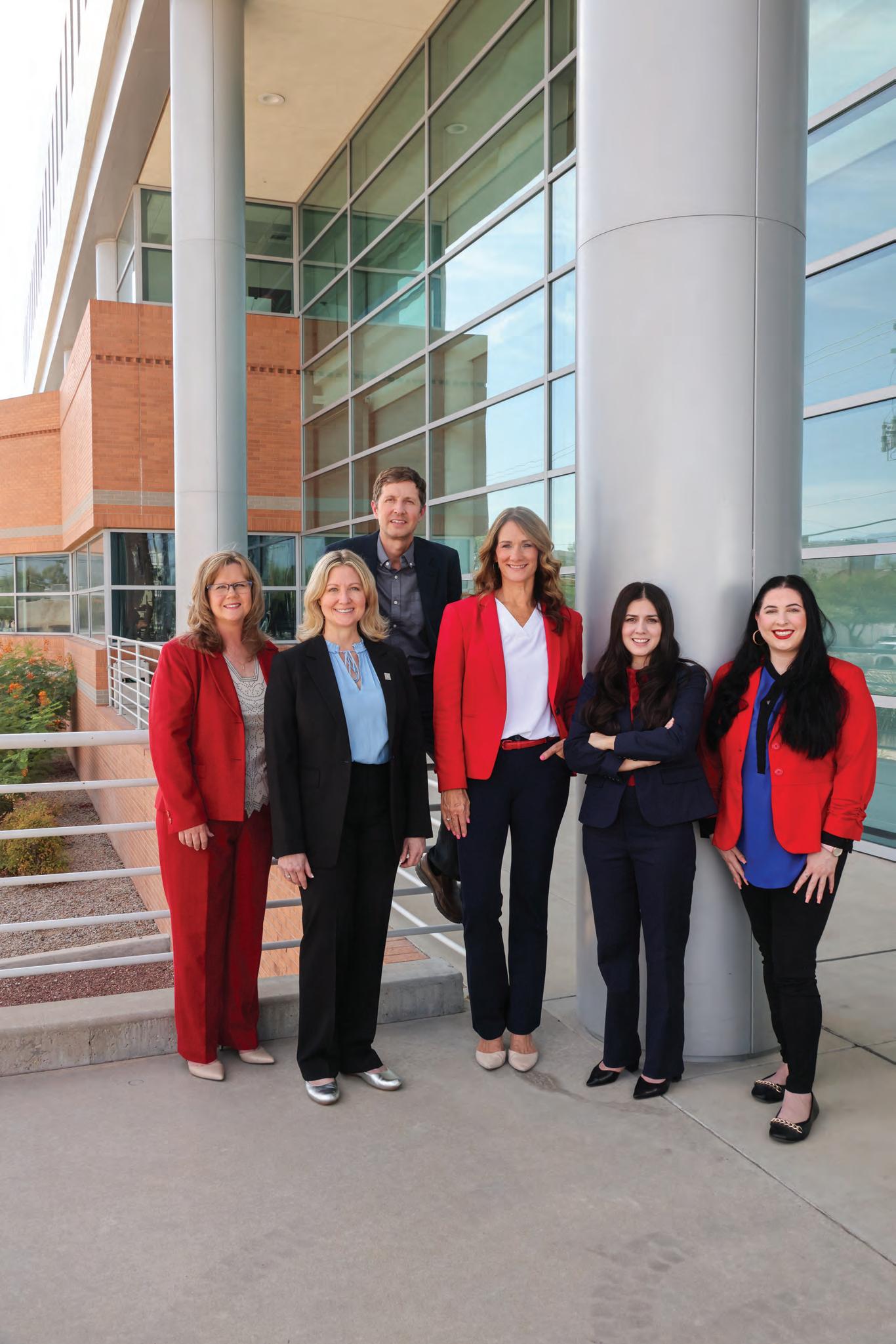




By Loni Nannini
The Graduate Professional Development Center at the Eller College of Management uses collaboration, innovation and technology to optimize student return on investment by teaching the business—and art—of career management.
“Career management is a learned skill. We teach competencies that are lifelong lessons; if students learn these skills now, they will take them with them forever as they pivot in the future,” said Wendy Wienhoff, director of the Graduate Professional Development Center (GPDC).
Launched in 2024 in the increasingly complex job market, the center offers a centralized hub for services and support including career counseling; assistance with creation and review of resumes, CVs and cover letters; job search assistance including access to job boards, internship searches and interview preparation. It also stages career fairs and seminars to maximize professional readiness and promote industry connections. Guest speakers and workshops focus on topics such as negotiation, LinkedIn optimization and industry-specific paths. Services are open to current students and alumni.
The flagship professional development center is Eller’s response to unprecedented demand for the professional development and career coaching markets, which are projected by DataHorizzon Research to grow to
a combined $100 billion-plus industry by 2033.
Understanding the entire process of searching for a job—and associated skills such as presenting oneself professionally, navigating workplace culture, effective communication and networking—are essentially a “hidden curriculum” that the GPDC seeks to demystify, according to Wienhoff.
“We are here to support students with the end goal of finding employment. It is a 40-hour-a-week job to search for a job and we want to help students do it as effectively as possible,” said Wienhoff.
Wienhoff and her team of seasoned career coaches combine a personalized, hands-on approach with information about the strategic aspects of career management—different tactics used by employers; how job application tracking systems work; AI and platforms such as Jobscan and Interstride; techniques to differentiate resumes; and more. This comprehensive strategy is a huge advantage at Eller that many universities don’t prioritize, according to Wienhoff.
Prioritizing professional development is essential for students to compete in today’s ultra-competitive employment environment, according to Melissa Poole, senior associate director of the GPDC.
“We are a high-level connection point for students. They have the expectation that we will connect them not only to the foundational learning they need for
job searches, but provide opportunities for them to make employer and alumni connections. These connections can help them find their value and market that value effectively,” said Poole.
The GPDC embraces a multipronged approach to career management that integrates curriculum and resources across different platforms with coaching, mentoring and networking.
To jump-start the process, a firstterm career planning course, Career Management, has been incorporated as a mandatory element of core graduate curriculum at Eller.
“Students feel like they can do career planning after they graduate, but that is almost too late. We want to engage them while they are in the program. Graduate level programs are rigorous and time management is really important, and if anything is going to be pushed aside, it is the career search. We want to bring the career component to the forefront,” said Wienhoff.
The course covers everything from “How to Find a Job 101” and “Resumes and Cover Letters” to personal branding and networking, along with interview techniques and the technical aspects of tailoring cover letters and resumes to AI criteria.
continued on page 78 >>>

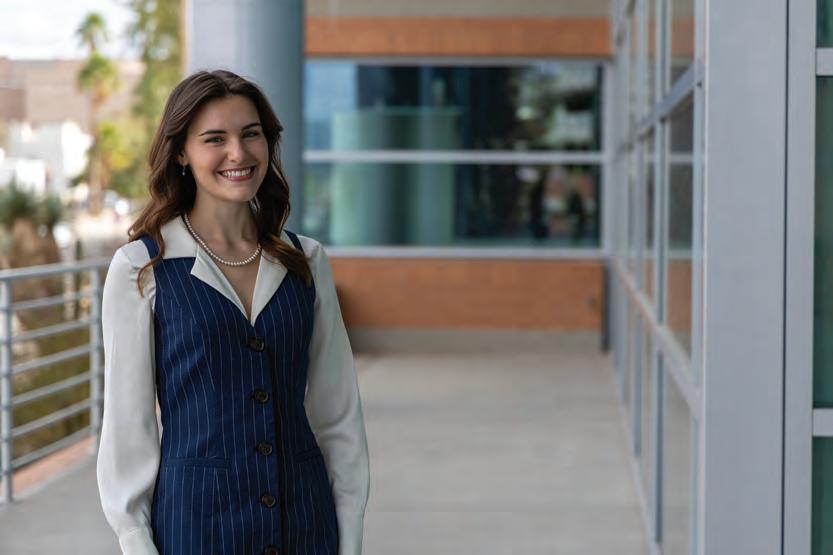

By Loni Nannini
For Trinnie and Matthew Cortez, an MBA from the Eller College of Management is all in the family.
The father-son duo have simultaneously pursued their advance degrees at Eller: Trinnie is a 2026 Executive MBA candidate and Matthew completed a dual Master’s in Accounting/MBA with a concentration in business analytics in 2025.
They exemplify the diverse ages, backgrounds, cultures and academic disciplines that make up the Eller grad family.
“I applied for my Master of Science in Accounting, and it was under the influence of better judgement—being my parents—that I decided to apply for my MBA as well,” said Matthew, 25, a firstgeneration Eller grad who earned his bachelor’s in accounting in 2022 along with a bachelor’s in music.
That decision has paid dividends. Matthew gained better understanding of the operations and context of a business and his specialization in business analytics equipped him “to participate at a better level” as an analyst with the
Financial Forensics and Valuation Services team at BeachFleischman.
“It is the cross-section of accounting and finance; it’s analysis and report preparation for expert testimony that can be used in the court of law. This could be the valuation of companies, asset misappropriation, partner dispute analysis, divorce consulting, or computations for economic damages. It is everything and more than I could have asked for,” said Matthew, now a C.P.A. candidate.
continued on page 80 >>>

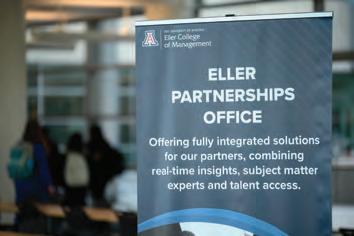
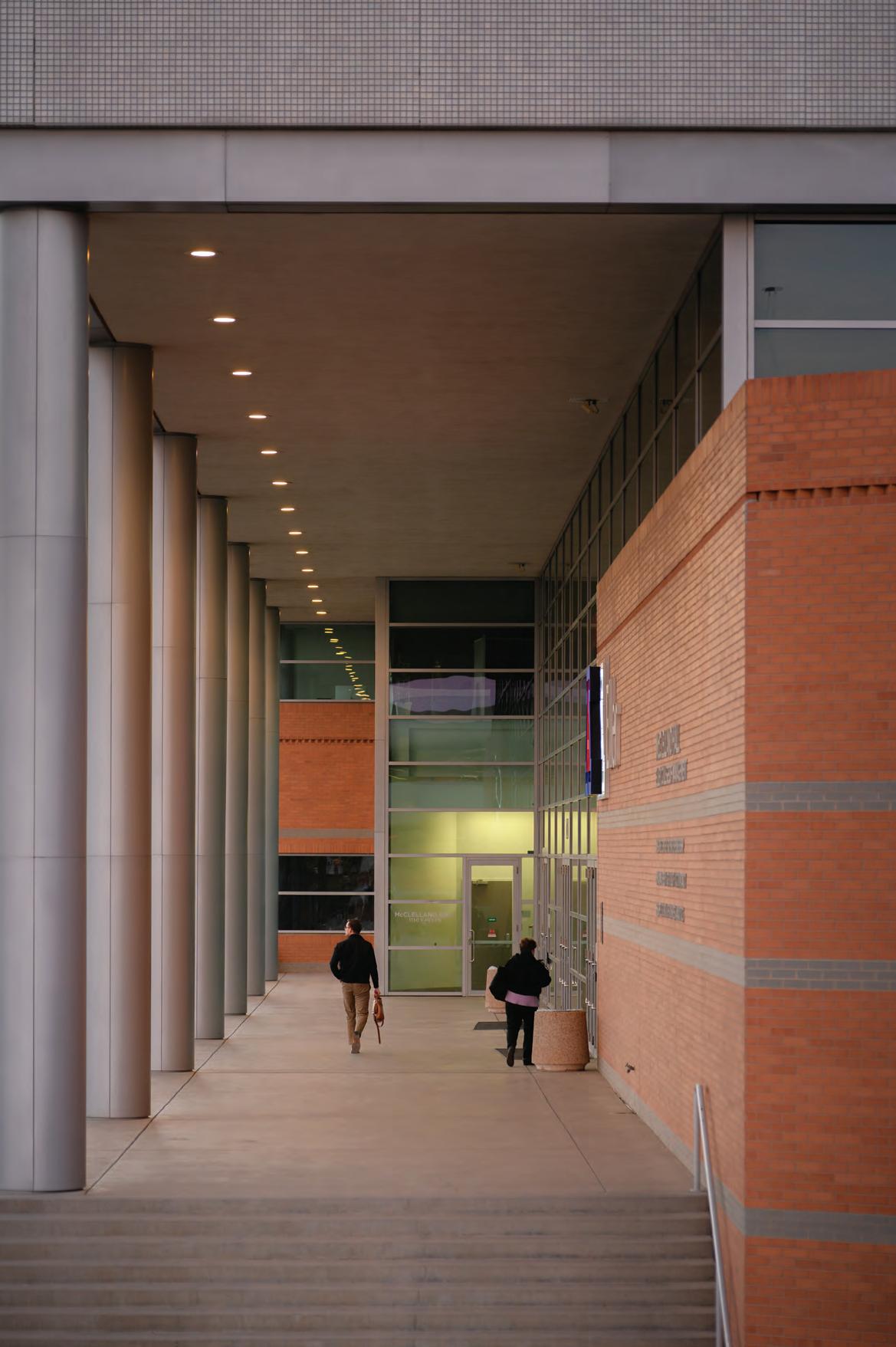

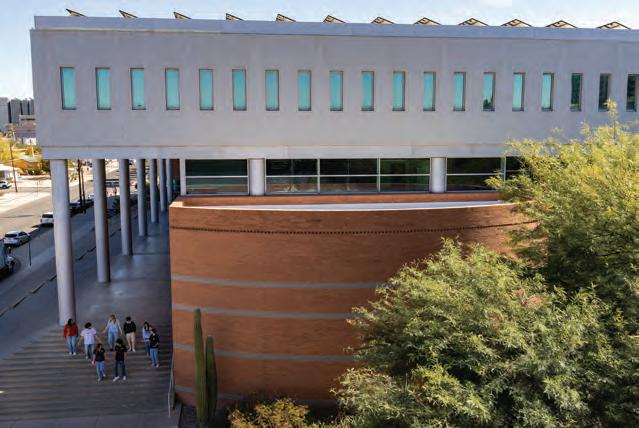
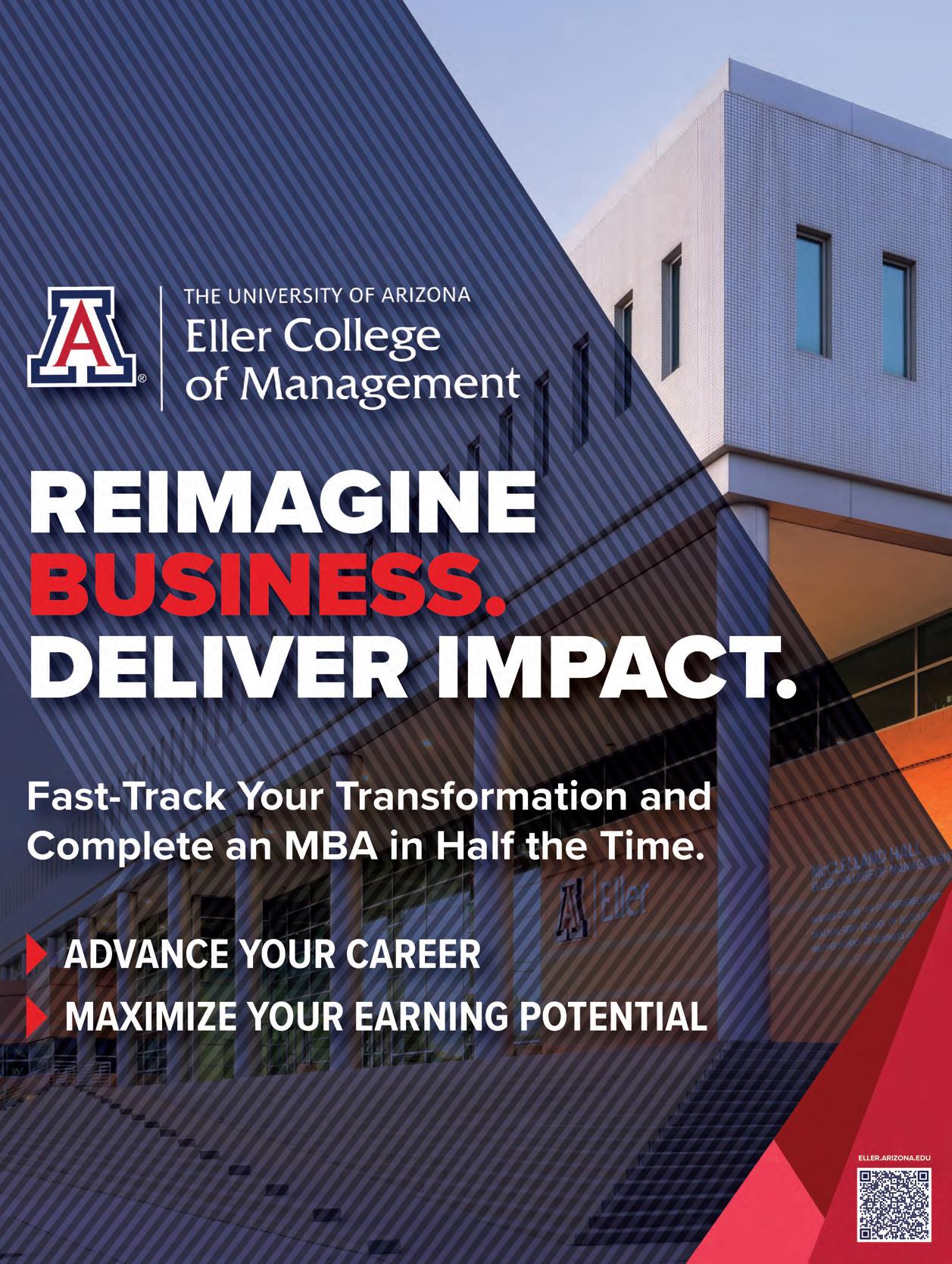
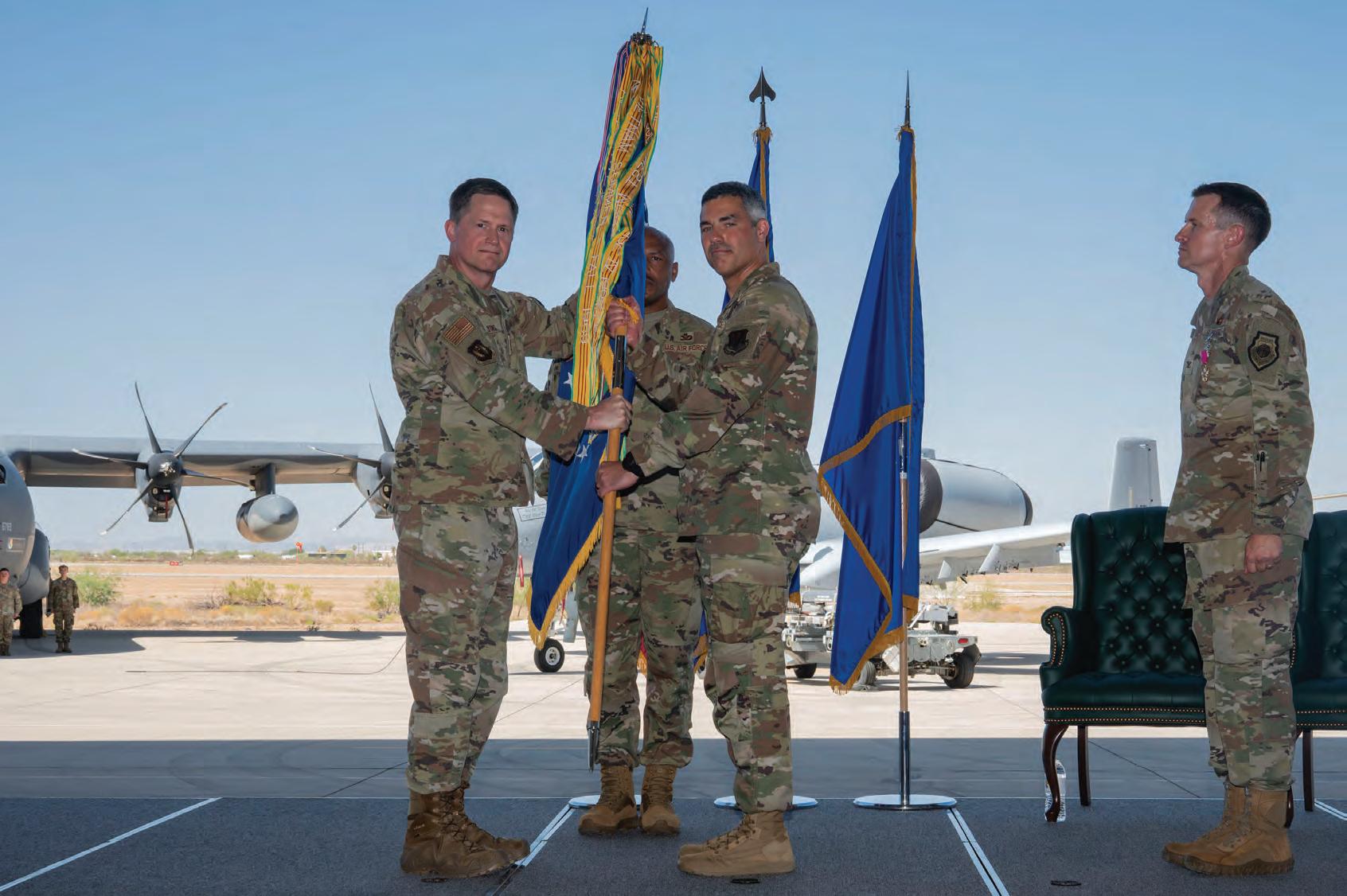
U.S. Air Force Maj. General David Lyons, 15th Air Force commander, presents the guidon to Col. Jose Cabrera, incoming 355th Wing commander, during the 355th Wing Change of Command ceremony at Davis-Monthan Air Force Base, Arizona, July 10, 2025. In this role, Cabrera will oversee the readiness, welfare and integration of more than 11,000 personnel across the installation. (U.S. Air Force photo by Airman Samantha Melecio)
There’s a new commander at DavisMonthan Air Force Base.
Col. Jose L. Cabrera took command of the 355th Wing at the base in a July 10 change of command ceremony. Cabrera replaces Col. Scott Mills, who will serve at the Pentagon as senior executive to the U.S. Air Force Chief of Staff. Mills held the top post at Davis-Monthan for three years.
Cabrera is not a newcomer to the Tucson base. He previously served as the 563rd Rescue Group commander
By Tom Leyde
after returning from the NATO Centre of Excellence Defense Against Terrorism in Ankara, Turkey, in June 2022.
In Turkey, he assisted the centre’s director in leading the 62-member staff of a unique, nine-nation international military organization.
“To the airmen and families of the Desert Lightning Team, I am humbled for the opportunity to join the ranks of such a dedicated, lethal and selfless group of airmen,” Cabrera said at the ceremony.
“Your dedication to the mission is evident in how you work tirelessly to defend our ways, support our families and generate combat power,” Cabrera continued. “Despite limited resources and a rapidly changing environment, your validation is on display every day in how you prepare the next generation of fighter pilots to attack our nation’s enemies, so the 18-year-old on the ground never has to fight alone.
continued on page 84 >>>

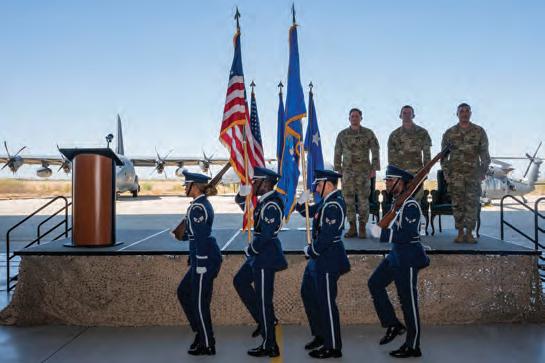
From left – U.S. Air Force Maj. General David Lyons, 15th Air Force commander, presents the Legion of Merit medal to Col. Scott Mills, outgoing 355th Wing commander, during the 355th Wing Change of Command ceremony at Davis-Monthan Air Force Base, Arizona, July 20, 2025. Mills concluded his three-year tenure as 355th Wing commander and departed DavisMonthan to serve at the Pentagon as senior executive to the Air Force Chief of Staff.; U.S. Air Force Davis-Monthan Honor Guardsmen march during the 355th Wing Change of Command ceremony at Davis-Monthan Air Force Base, Arizona, July 10, 2025. The honor guard presented the colors before the singing of the national anthem and the invocation by the chaplain.
continued from page 83
“Finally, your selflessness is on display every time you spring to action to rescue a downed airman in extreme danger, placing your life at risk so that others may live,” he said. “Simply put, you represent the best qualities of our Air Force. ... Thank you for being here. Rescue and attack.”
In his remarks, Mills added: “It’s been an absolute honor to serve with all of you, and I am indebted to the rescue and attack mindset you brought every single day.”
Mills wears a bracelet every day as a reminder. “Inside is engraved, ‘Good enough isn’t good enough. Be great.’ The airmen of the 355th Wing have always been great, and have continued to inspire me to go faster, further and higher,” he said.
As new commander of Davis-Monthan, Cabrera is responsible for one of the largest installations in the U.S. Air Force. It has 34 mission partners, more than 46,000 personnel, 152 aircraft and $51 billion in assets.
The commander also is responsible for organizing, training and equipping a wing comprising 25 squadrons along with mission-ready operations, combat support and medical airmen.
The 355th Wing operates and deploys the A-10C Thunderbolt IIs, HC130J Combat King IIs, HH-60W Jolly
Green IIs and special warfare teams in support of combatant commander requirements.
The wing also is responsible for two formal training units producing qualified A-10C pilots and pararescuemen for the U.S. Air Force.
A native of New York, Cabrera received his commission through the University of Delaware Air Force ROTC program, Wilmington, in 2000. In that year, he also earned a bachelor’s degree in aviation management.
Cabera’s other educational degrees include:
• 2001: Aerospace Basic Course, Maxwell AFB, Ala.
• 2006: Squadron Officer School, Maxwell AFB, Ala.
• 2008: Masters of International Relations, Troy State University, Ala.
• 2014: Masters of Operational Art and Science, Air Command and Staff College, Maxwell AFB, Ala.
• 2018: Masters of National Resource Strategy, National Defense University, Eisenhower School, Fort McNair, D.C.
• 2024: NATO Senior Officer Policy Course, NATO School, Oberammergua, Germany.
Cabrera served in 15 Air Force assignments before taking command at Davis-Monthan, including assignments in England, Turkey and Germany.
In 2017, a report by the “Economic Impact of Arizona’s Principal Military Operations” found that Davis-Monthan has an annual statewide economic impact of $2.6 billion–the largest among the state’s Air Force bases and a close second to Fort Huachuca.
Davis-Monthan was named the No. 1 Air Force Base in 2012 and 2018. Besides the 355th Wing, Davis-Monthan is home to:
• The 12th Air Force.
• The 309th Aerospace Maintenance and Regeneration Group.
• The 55th Electronic Combat Group.
• The 214th Attack Group of the Arizona National Guard.
• The 943rd Rescue Group of the Air Force Reserve.
• The 924th Fighter Group, Air Force Reserve.
• The U.S. Navy, Army, Marine Corps and Space Force personnel.
• The U.S. Customs and Border Protection.
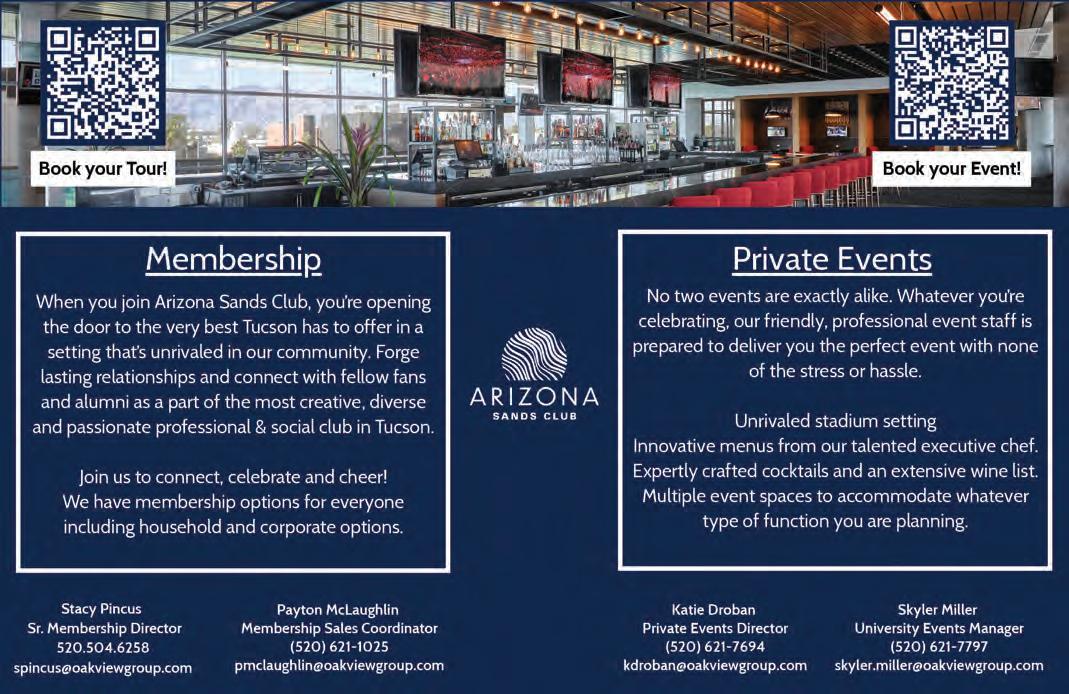

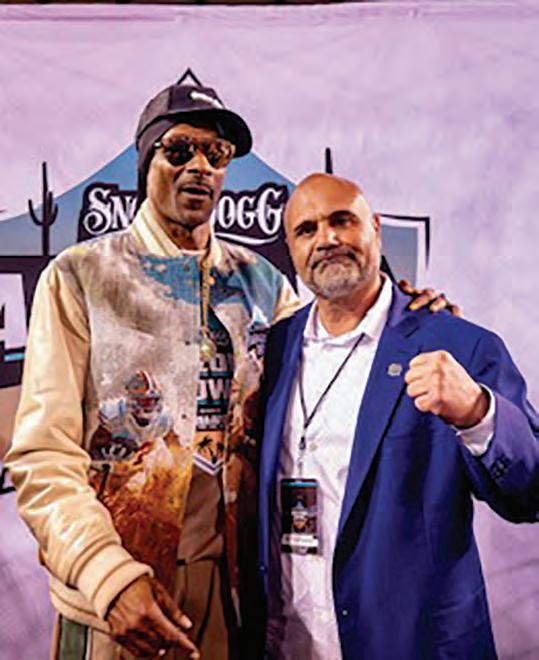

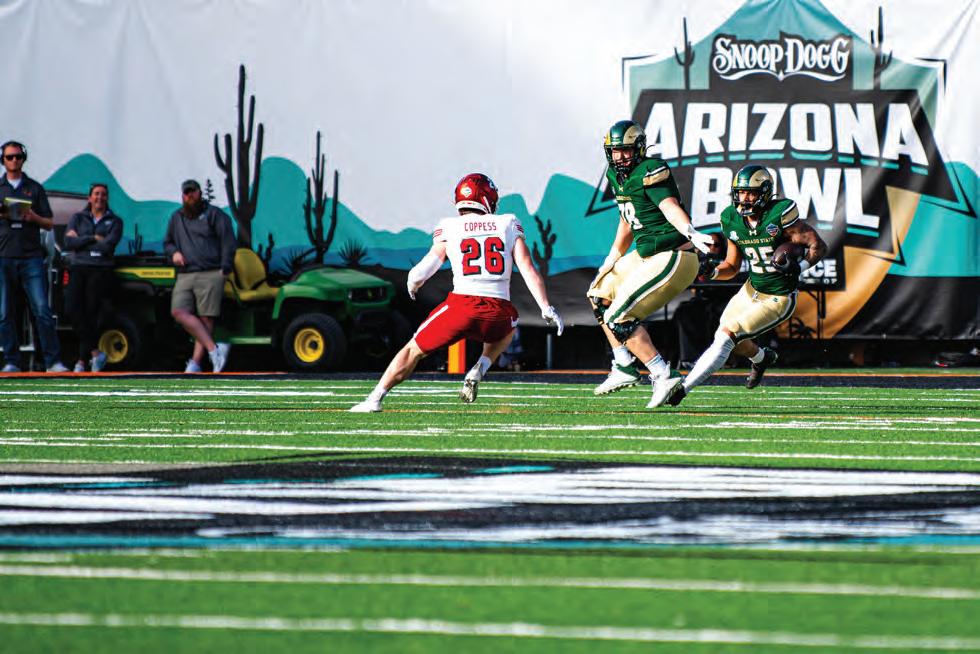
an attendance record with 40,076 fans at the game.

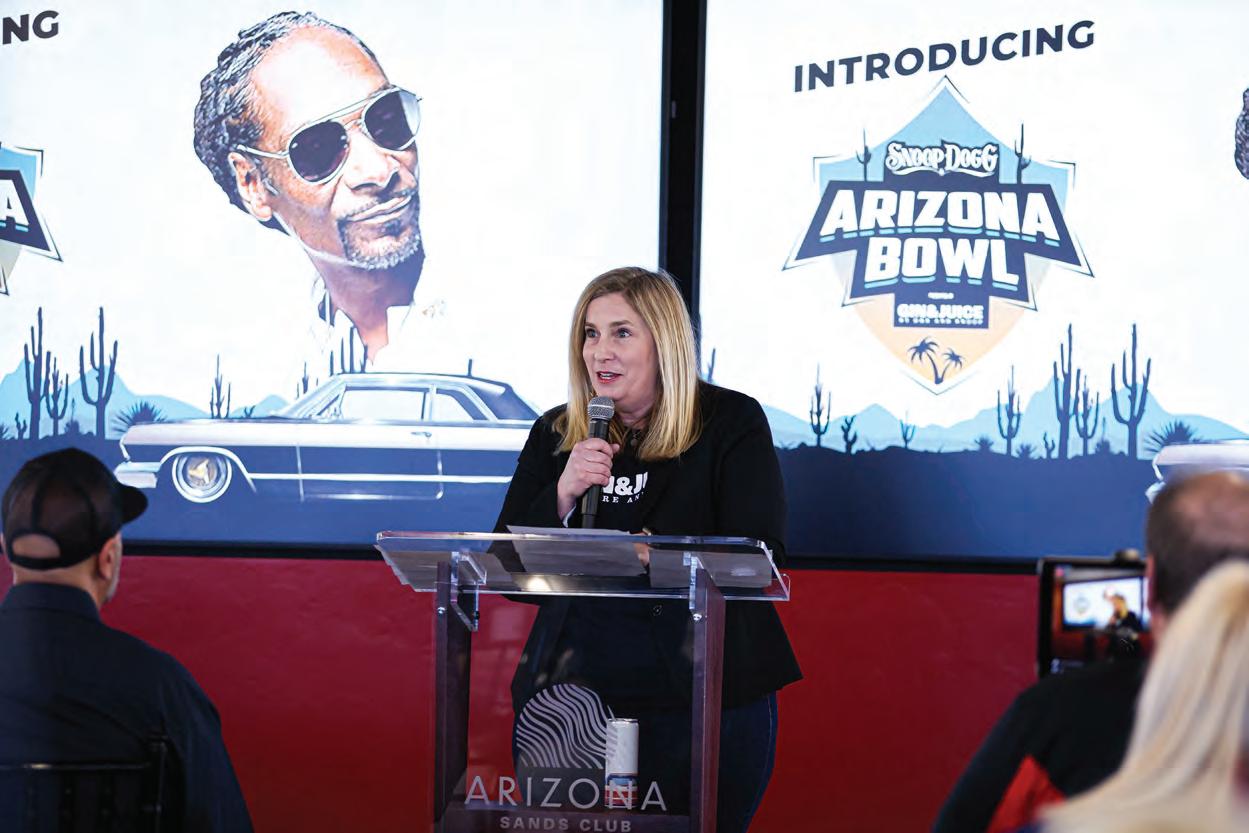

By Steve Rivera
When Kym Adair and her team went to the annual college bowl conference –mingling with the best of the best bowl officials in the country – Arizona’s little bowl that could, well, did. And in a big
excited to come back − bigger, bolder. You should see more of him this coming year.”
And so, in Year 2 of the Snoop Dogg Arizona Bowl, game officials plan on the event being just as good as the first
“We’re always thinking of what we can do to make ourselves better.”
It’s too early to say what’s coming –but it’s coming.

“We have some things lined up we think people will enjoy,” Farhang said. “Be there and find out. I appreciate people’s gratitude about the game and that we’re doing a great job. But, I’d rather have them be there and have them tell me they enjoyed it, not that they just heard about it.”
They are in weekly meetings with Snoop’s people and coming up with ideas.
“We have some cool stuff (being tossed around),” he said, “but we want to make sure we do things (excellently).
“Last year, things happened that we didn’t even plan before the game, they just happened, and Snoop did what he did. I tell people, he’s as cool as you hope he would be, but he’s far cooler. He was great with people and so engaging.”
Now, on to 10 years of community, giving and, of course, football.
“I’d be exaggerating if I said this is exactly where I thought we’d be when we started,” Farhang said. “I always envisioned this game/event as being part of Tucson’s DNA, something like a party they must attend.
“There have been a number of pleasant surprises from it − the taco drop (on New Year’s) to having the most popular pop culture individual figure in the orld as the title sponsor. Those are the things that have exceeded my every expectation.”
By Steve Rivera
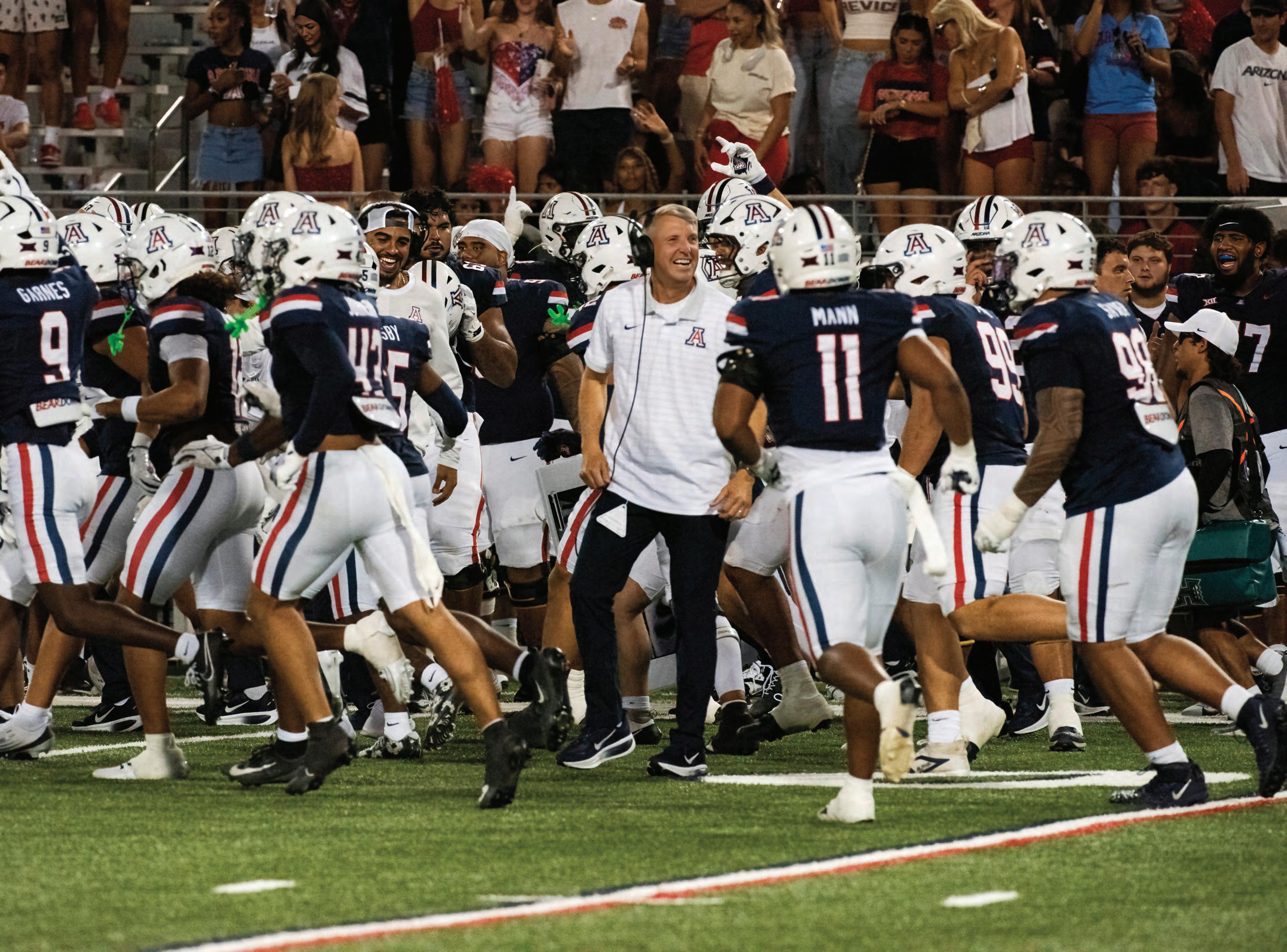
It was a tough first season for Arizona’s head football coach, Brent Brennan. But it didn’t diminish the attraction for coaches and players to come to Tucson and help him build a winner.
“He’s the main reason I am here,” said Seth Doege, an up-and-coming offensive mind who left Marshall to be the offensive coordinator under Brennan. “This wasn’t on my radar until I came to Arizona and met Coach Brennan. He is the most genuine person I’ve met in this profession. I knew right away that this person is going to care about me, my family, daughter, kids.
“I want to be around
someone who cares about his staff, his players. I want to be a head coach one day, so I want to be around a mentor that does it the way I want to do it.”
And so, after his first season, with a dismal 4-8 record and no bowl game, Brennan moved on to the task at hand for 2025 – winning football games at Arizona.
“Even when it didn’t go well last year, he was always composed,” said UA quarterback Noah Fifita, who resisted any temptation to take his talents elsewhere through the transfer portal. “He never changed who he was. He’s a guy that you want to play for. He’s a
guy that you believe in.”
One senses this season will be different – at least in attitude and aggressiveness. The man who loves to be competitive will get them to compete – and win.
At the podium at the Big 12 Conference Media Day, the seemingly mild-mannered Brennan didn’t mince words. Last season, he felt like he was “kissing everyone’s ass, asking them to stay.”
It had to be said. Was it cathartic?
“I was just telling the truth,” Brennan said. “I felt coming in here was a unique situation. Jedd (Fisch) did a great job in 2023 and won games. Everything felt magical.” continued on page 90 >>>
BY

continued from page 89
But Brennan said he knew it would be hard to sustain that magic. “That’s the hardest part because we want to build a sustainable, winning football program.”
Last year, it was a team absent of strut and belief, but all that has changed. This is his team, with players who have committed to him, the UA and the team.
“We redefined what we were looking for,” he said. “We brought people into the program who are tough, who have to love football, and have to want to be at the University of Arizona.”
That includes himself, who just over 18 months ago was chosen to be Arizona’s new head coach. The Northern California kid who grew up watching San Francisco 49ers games with his father and family was named the coach where he was once a graduate assistant under one of his mentors, Dick Tomey. Tomey, like Brennan, was a player’s coach. He showed little emotion on the field, but had plenty of it.
“I can be a real hard ass, but I don’t need to be a hard ass for the public
“He’s a guy that you want to play for. He’s a guy that you believe in.”
– Noah Fifita Quarterback Arizona Wildcats
to see,” Brennan said. “I don’t think people respond to that. No one likes to be publicly humiliated, no one likes to be undressed in front of thousands of people.
“If I’m going to get the best out of a young man or a coach, where I totally lose my composure in front of everybody…I don’t believe in that. You must be authentically who you are as a coach.”
Arizona VP and Director of Athletics Desireé Reed-Francois said she loves that Brennan is personally connected to the university, engaging with other Wildcat teams and making himself available.
“For us to succeed as an athletic department, we all have to be in alignment,” she said. “It’s critically important. I appreciate that from Brent. He’s a team player.”
There’s also the critical element of winning. After all, coaches are measured on wins. Is there pressure to succeed? “There is always pressure,” Brennan said. “You’re not in this position if you don’t put a ton of pressure on yourself.”
Reed-Francois agreed.
“Every football coach across the country feels pressure. We play at the highest level,” she said. “We keep score for a reason and if you are, we might as well win. When you play in this league, you’re going to have to embrace that pressure. I know I do, and I know all the players do.”
Biz

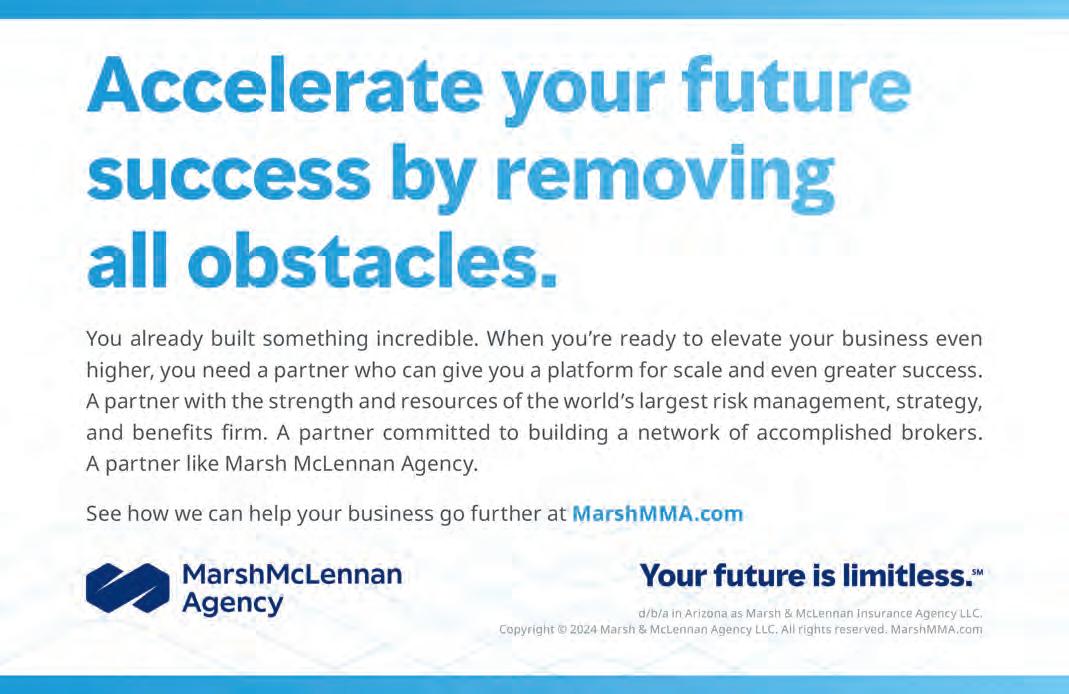

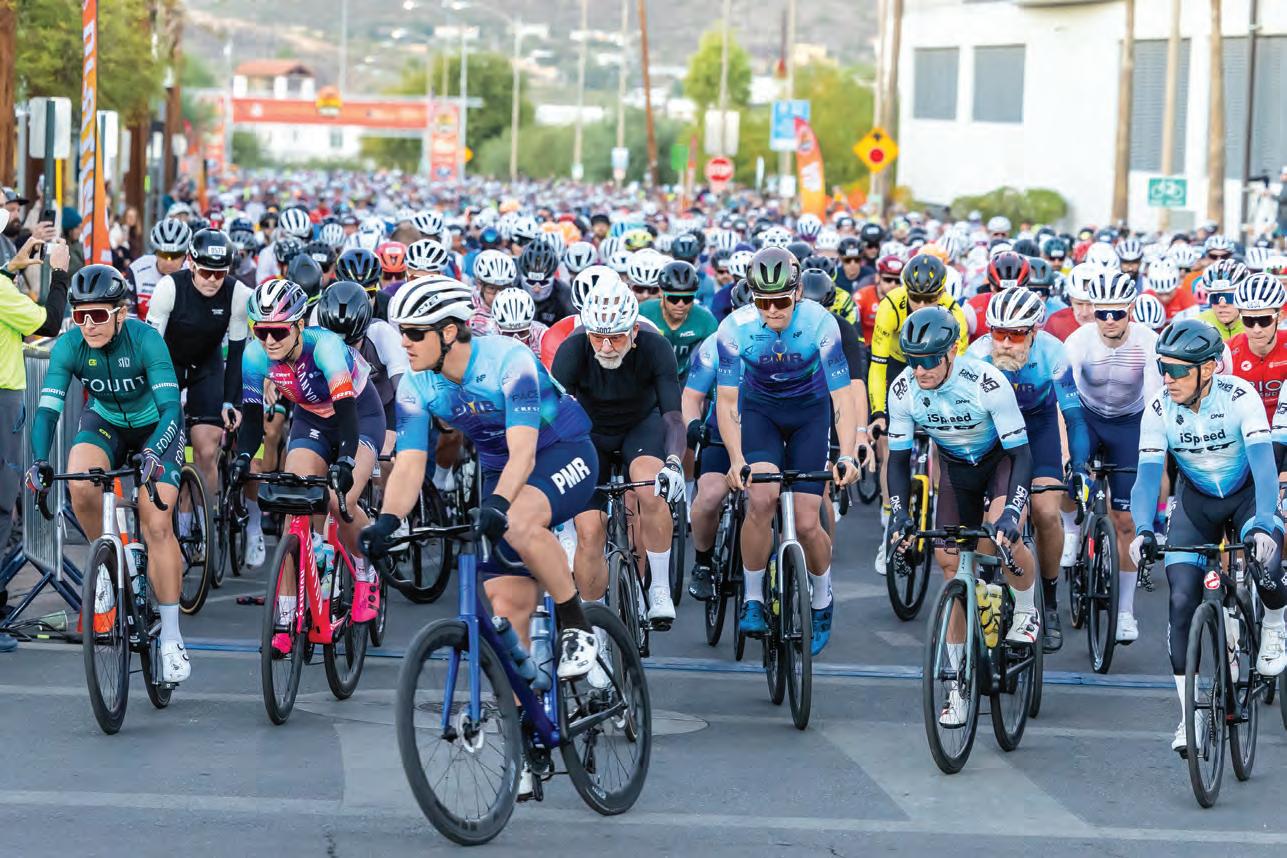
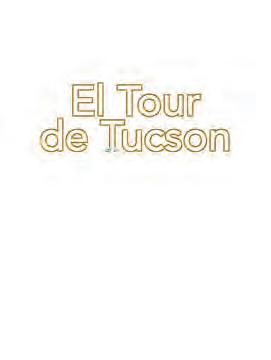



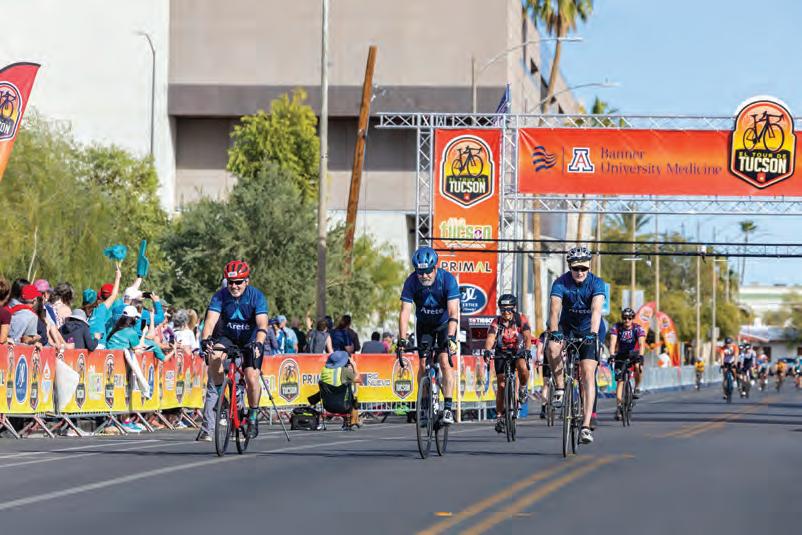

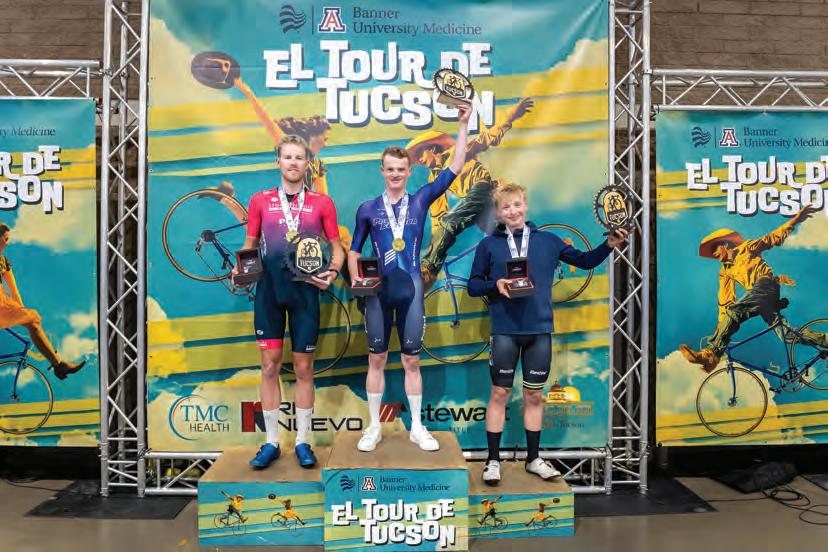


El Tour de Tucson is at once a spinning celebration of cycling, of Tucson’s appeal as a world-class place to pedal, and as an economic driver.
When it rolls through town Nov. 22, the 42nd El Tour may attract nearly 11,000 cyclists from every state and 23 countries. Cyclist counts were 7,500 in 2022, 8,744 in 2023, and 9,600 in 2024. In 2019 – the COVID year? An estimated 5,000.
“It’s a considerable increase, for a whole host of reasons,” said TJ Juskiewicz, executive director at El Tour since 2024.
Visit Tucson’s economic impact calculator, labeled a “very conservative” tool by Nick Pazzi, Visit Tucson’s director of sports, shows El Tour generated $1.5 million in direct business sales in 2024. Add another $1 million in indirect spending, and it’s clear El Tour puts wheels on roads, heads in beds, and foodies in restaurants.

“El Tour had gone through peaks and valleys,” said Juskiewicz, who knows that the event’s growth brings challenges. “The footprint has just been greatly xpanded.”
The Tucson Convention Center has worked well for El Tour starts and finishes. But, said Juskiewicz, “We were bursting at the seams.”
El Tour has pushed beyond those seams this year, creating a post-ride party in the TCC parking lot. “A great experience is super important,” Juskiewicz said.
his year’s 5-day Prologue, “the equivalent of a fantasy camp for cyclists,” features “the who’s who of cy-
By Dave Perry
cling,” to include Tour de France and champion cyclists.
“People get to break bread with them, go on a ride with them, talk to them,” Juskiewicz said. “A handful get to ride with these legends, then they all go and do El Tour.”
When they do El Tour, they’re supported by El Tour’s six year-round employees, an event-week core team of 100, close to 1,500 volunteers, and 500 police officers on the big day.
“You’re talking several thousand people behind the scenes making sure it’s a safe and enjoyable ride,” Juskiewicz said.
Ralph Phillips, longtime owner of Fair Wheel Bicycles, said he is honored and humbled to be El Tour’s 2025 Dedication recipient. He is a former top-3 El Tour finisher and proud founder of The Shootout, Saturday morning rides across Tucson that draw hundreds of cyclists.
At 75, Phillips said he is “slowing down” to four rides a week. “I really do believe the more active you are, the better off you are in your older age,” he said. “It makes it easier.”
“Tucson is a big cycling community,” Phillips said. “El Tour has helped it grow and become that.”
El Tour, and cycling in Tucson, have been featured and recognized in national publications, Pazzi said. Social media influencers and travel writers tell their stories about El Tour and Tucson.
“It’s the kind of marketing that’s almost priceless,” he said.
Felipe Garcia, president and CEO of Visit Tucson, said cycling is “an impor-
tant pillar” in promoting the destination.
“TJ has done a great job lifting the profile of El Tour de Tucson,” Garcia said. In turn, Juskiewicz said Garcia “gets the vision of what we’re trying to do, to promote Tucson not only for cycling,” but for all the rest it offers.
“When it comes to organizing a cycling event, the guy definitely knows what he’s doing,” Pazzi said of Juskiewicz.
More than 120 nonprofit teams are raising big money in the 2025 El Tour. The nonprofit Bikes for Change is this year’s primary beneficiary. Through El Tour, Rotary International − the “offthe-charts” example − has harvested more than $75 million for charitable giving over 30 years.
“Even a small nonprofit can raise $5,000,” said Juskiewicz. “It’s something I’m extremely proud of. A lot of them are riding for a good cause.”
El Tour cyclists might ride to honor a lost family member, to celebrate a cancer survivor, or to train for good health. “There are a lot of great stories out there,” Juskiewicz said. “El Tour serves a really great purpose.”
El Tour “makes cycling part of the community,” said Phillips. “Everybody in Tucson has done it or has a sister or brother or uncle who’s done it. It unites the whole community behind cycling.”
“We want the community to embrace the event, and make sure everyone feels welcome,” Pazzi said. “We want them to say, ‘Wow, what a great community.’”
“We hope it goes on for at least 42 more years,” Juskiewicz said. Biz
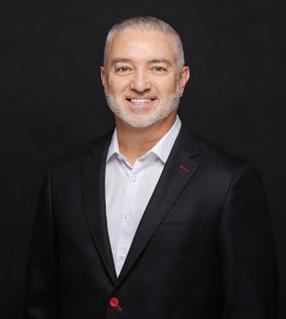
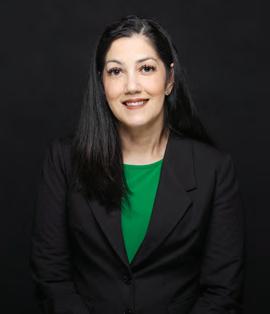
The Tucson Advertising Federation Educational Foundation announced the honorees for its 2025 Hall of Achievement annual awards.
The event, held Sept. 4 at La Paloma Country Club, brought together industry leaders, professionals, and supporters to celebrate the remarkable accomplishments of this year’s honorees.
Receiving the 2025 Silver Medal Award was Steve Earnhart, IHeartMedia Area president - Southwest. The American Advertising Federation’s Silver Medal is a nationally recognized award honoring individuals who have made outstanding contributions to advertising and have been active in furthering the industry’s standards, creative

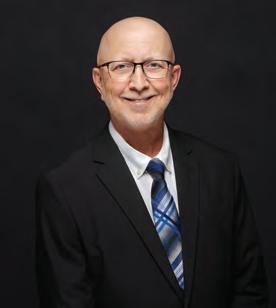
excellence and responsibility in areas of social concern.
Sonia Ruiz-Monson, senior account executive for iHeartMedia, is the 2025 Ad Professional of the Year, which recognizes marketing and advertising professionals who have led, mentored and inspired others to succeed.
Alan Michaels, director of development at Children’s Advocacy Center of Southern Arizona and longtime radio broadcaster, and Ray Frieders, retired production manager at Cox Media, will be inducted into the Advertising Hall of Fame, which recognizes the best among local industry professionals who have led, mentored and inspired others to succeed in this industry.

The Next Generation Award goes to Shayla Sandoval, senior VP of client services at Sandoval Creative. This award recognizes advertising professionals 40 and younger who are making a significant impact on the industry through leadership, career achievements and personal qualities that also inspire others to excel.
TAFEF is a non-profit organization dedicated to supporting and promoting excellence in advertising and marketing education in the Tucson area. TAFEF provides scholarships, educational programs, and resources to empower the next generation of advertising professionals.
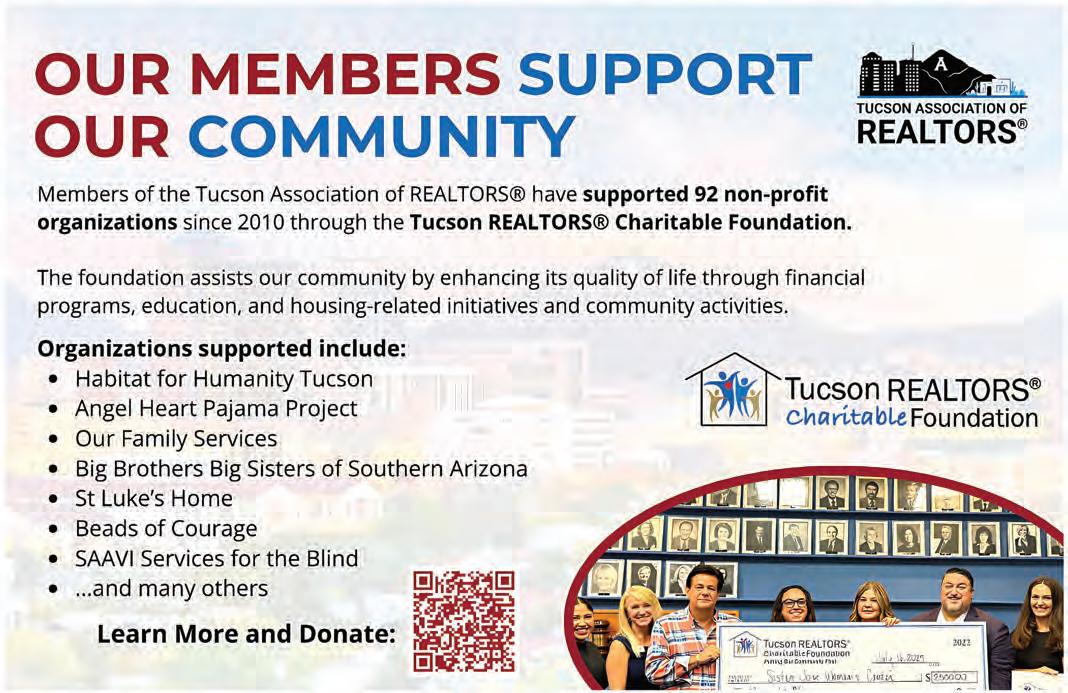

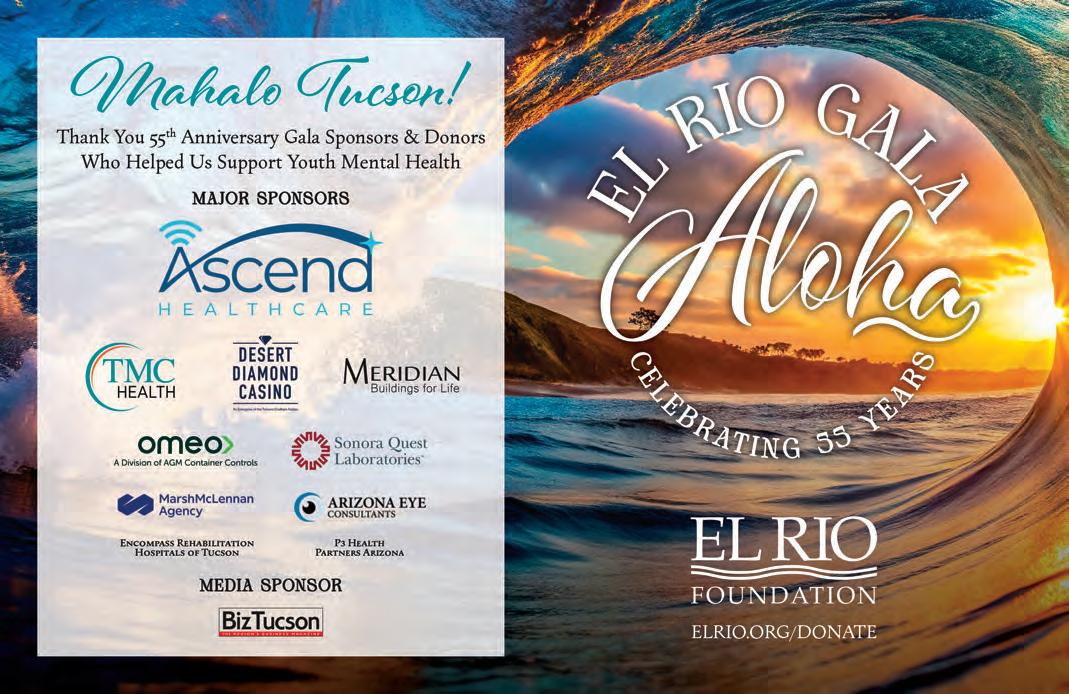
Submitted by Heather Kane, Health Plan CEO for Arizona & New Mexico, UnitedHealthcare Employer & Individual
Offering benefit plans that leverage technology to improve and simplify experiences may be key to increasing your employees’ satisfaction with their healthcare coverage. Recent data suggests that having access to a highly satisfactory health care digital experience made 58% of members more likely to have a positive opinion of their employer.
By making the most of technological advancements, employers may be able to improve their workforce’s health care experience and potentially lower their total costs of care. Here are three tips to consider:
Offer a health plan with a simple provider search experience.
A recent study found that nearly half of people research care providers before scheduling an appointment.
Some health insurers are now incorporating advances in data analytics and even artificial intelligence to help members access health care more eas ily and affordably. Some plans offer features that allow members to describe their symptoms in plain language when searching for care.
Smart Choice, the newest innova tion to the UnitedHealthcare provider search experience, uses advanced tech nology to help eligible members more easily access quality*, personalized care.
Make employee mental health a priority.
Mental health challenges continue to grow and can have a significant impact on employees. According to new data from America’s Health Rankings, nearly 15% of Arizona adults reported experiencing frequent mental distress in 2024.
To focus on just one condition, 40 million American adults suffer from anxiety disorders that can impact quality of life both inside and outside the office, and anxiety is now the No. 1 mental health issue among American workers.
To address these challenges, many employees now expect accessible and flexible mental health offerings — such as therapy apps and virtual counseling, which can provide convenient, confidential support.
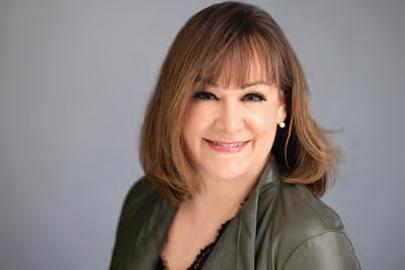
Available through the UnitedHealthcare® app or myuhc.com, Smart Choice aims to help empower eligible members to compare their care options and make more informed decisions, which may result in better access to care and lower costs.
Disclaimer
Heather Kane Health Plan CEO for Arizona & New Mexico, UnitedHealthcare Employer & Individual
By integrating mental health resources into health benefits packages, employers can help reduce mental health stigma, promote early intervention and improve employee productivity and retention.
Support employees with innovative wellness programs. By adopting a whole-person approach to employee health, employers may be able to contribute to more positive health outcomes and a healthier work environment.
One way to support whole-person health is to consider offering the workforce wellness programs that promote a healthier lifestyle, as well as programs that help with the management of chronic conditions.
About 80% of U.S. businesses with more than 50 employees offer wellness programs, according to a recent survey. Some wellness programs can help people stay focused on their health goals, in part by utilizing technology.
For example, UnitedHealthcare’s Level2® combines the technology of a continuous glucose monitor (CGM), easy-to-use member mobile app and a virtual care team of doctors, nurses, registered dietitians and a coach. Level2 aims to help people living with type 2 diabetes gain valuable insights to help improve their glucose levels.
By prioritizing employee health and leveraging the latest technology and innovations employers can help enhance their employee experience, incentivize a healthier and more productive workforce and lower total health care expenses.
* Standards utilized by UnitedHealth Premium®. UnitedHealth Premium® is proprietary to UnitedHealthcare. UnitedHealth Premium evaluates physicians based on safe, timely, effective and efficient quality care criteria to help members make more informed choices for their health care. It’s intended only as a guide and should not be the sole factor considered when selecting a physician. Designations have a risk of error and members should discuss designations with a physician before choosing one. If a member already has a physician, they should also consult with them for advice on selecting other physicians. The fact that a physician does not have a Premium Care Physician designation does not mean that the physician does not provide quality health care services. All physicians in the UnitedHealthcare network have met certain minimum credentialing requirements (separate from the UnitedHealth Premium criteria). Please visit the medical care directory specific to the member’s benefit plan for physician designations and detailed information about UnitedHealth Premium and the evaluation methodology.


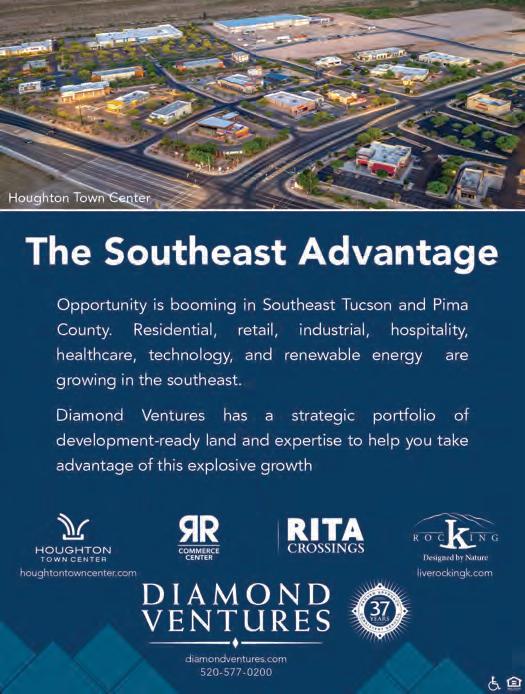
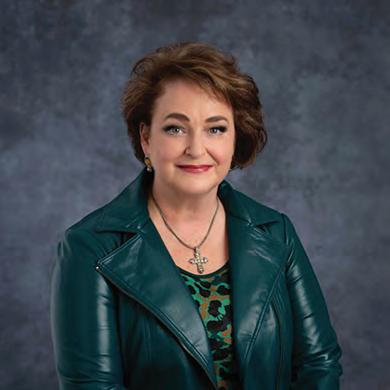
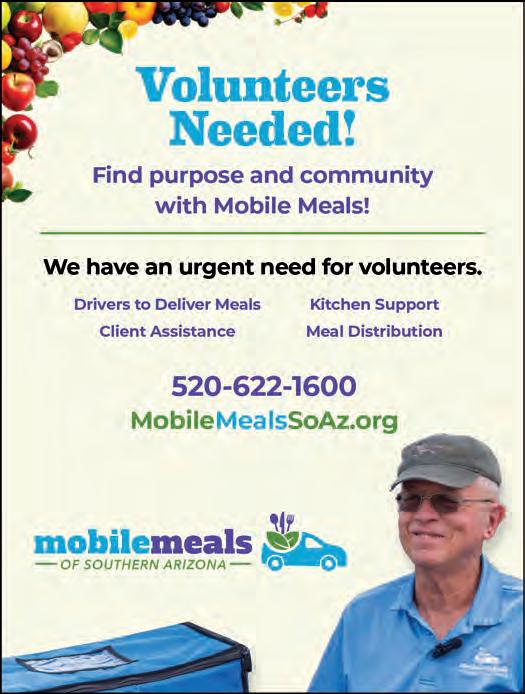
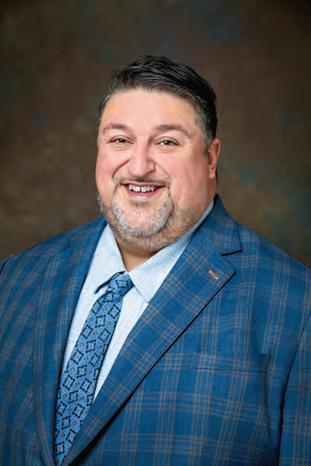
A 30-year veteran in the battle against food insecurity, Jayroe was most recently the president and CEO of the Second Harvest Food Bank of Greater New Orleans and Acadiana. Jayroe is committed to work with the public sector, forprofit supporters, individuals and foundations to build on the food bank’s legacy of changing people’s lives.
Romeo Arrieta has been named CEO of the Tucson Association of REALTORS®, the largest trade association in outhern Arizona. The organization represents over 5,700 real estate professionals. With almost two decades of experience, Arrieta recently served as CEO of the Marin Association of REALTORS,® where he oversaw the revitalization of general membership meetings, the launch of a popular Speaker Series, and new technology tools.
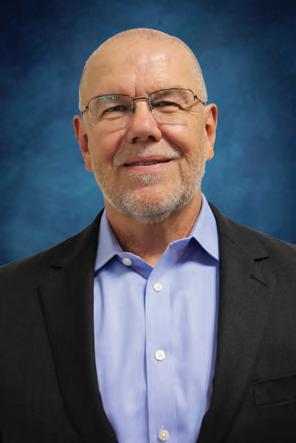
Michael J. Ortega has joined Pima Association of Governments, the greater Tucson region’s metropolitan planning ganization, as its new executive director. Ortega, who was Tucson city manager for nearly nine years, will also serve as executive director for the RTA, which manages a $2.1 billion regional transportation plan and half-cent sales tax approved by Pima County voters in 2006.
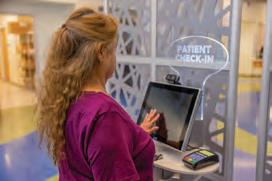


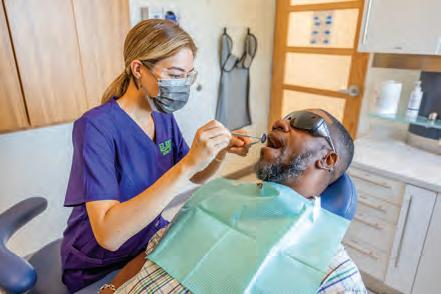
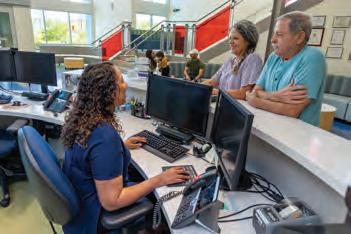

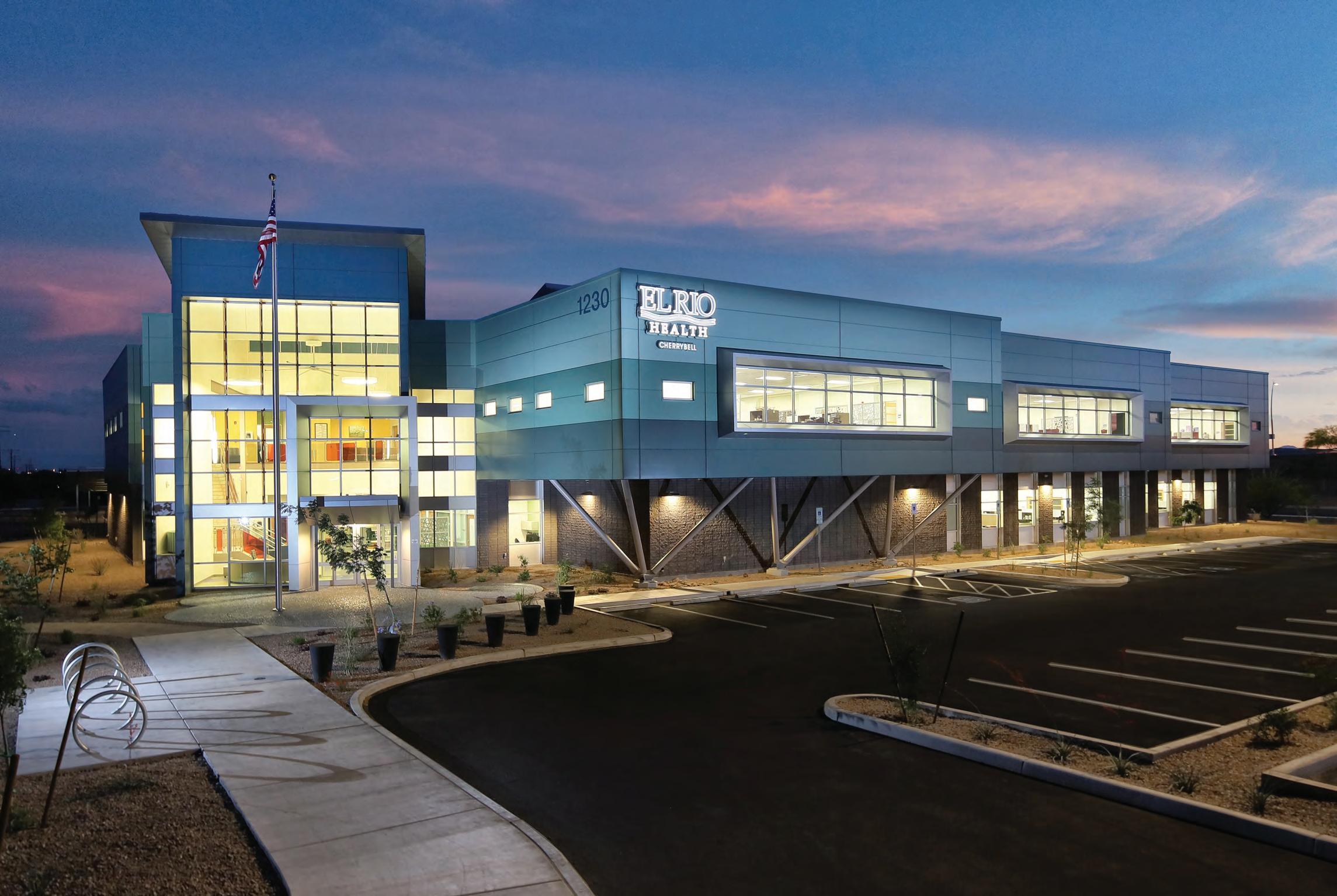


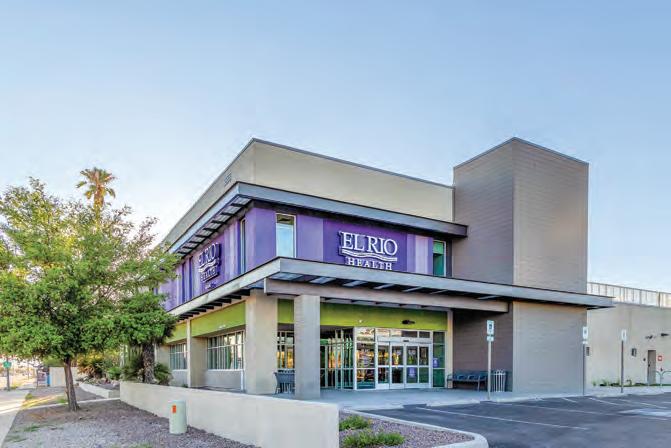
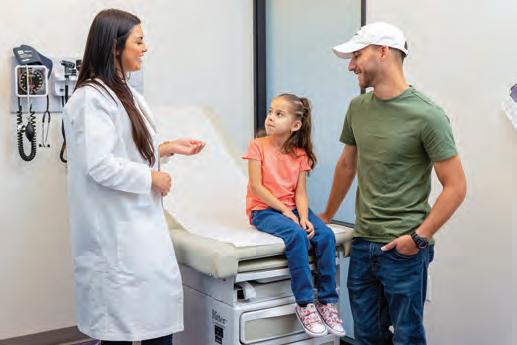
By Loni Nannini
For 55 years, El Rio Health has been blazing trails in Tucson’s well-being and building a “health home for life” where care meets community.
“Having your health home at El Rio Health is a patient-centered, teambased model of care that supports individuals through every stage of life,” said Clinton Kuntz, DBH, CEO of El Rio Health.
“It is not just about having a health center to visit − it’s about having a trusted care team that knows your history, understands your needs, and helps
With urging from Barrio residents, El Rio is founded with the help of Dr. Herbert Abrams of the UA College of Medicine.
you navigate the healthcare system with care and compassion.”
That distinctive philosophy has catapulted what began as a small clinic for underserved patients west of downtown Tucson into a thriving community health center serving 130,000 patients at 14 Pima County locations, with another slated to open in 2026.
With over 1,900 employees, El Rio’s state-of-the-art facilities offer onestop access to primary and preventive care in medical, dental and behavioral health. Services extend to women’s
Thanks to federal and county funds, El Rio opens the first site at the Mother Higgins Building. Although designed to serve 20,000 patients, demand exceeds capacity. Staff = 50. Budget = $500,000.
Demand increases, requiring the first permanent building to be constructed on Congress Street, just West of Downtown. This site becomes El Rio’s flagship location.
health − prenatal care, OB/GYNs and midwives − and imaging services as well as cancer screenings.
El Rio also integrates a range of wellness programs − yoga, Tai Chi and more − and an ever-expanding list of comprehensive care including chiropractic, physical therapy, pharmacy and lab services and much more.
“We offer a multitude of services for all ages all under one roof,” Kuntz said. “Our ‘whole-person’ care model makes us unique, and it is open to everyone. The entire model of community health centers is to get people into care.”
In an at tempt to make care more accessible to patients, El Rio starts its own health care plan, a financial risk that does not pay off.
Board decides to file for bankruptcy and reorganize. With newly hired executive director Robert Gomez, they turn the organization around.




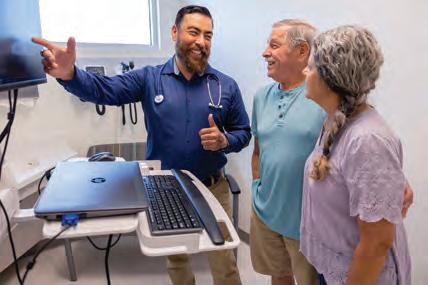
El Rio is committed to serving patients regardless of ability to pay, including those who are uninsured. It also welcomes a growing base of patients with private insurance.
The model is distinctive in the rapidly growing sector of non-profit community health centers that contributed more than $85 billion in U.S. economic output in 2021 (according to Matrix Global Advisors) and served a record 33.9 million patients nationwide in 2024.
El Rio receives funding from Angel Charity for Children to help with adding additional space at the Congress location for pediatrics and dental services.
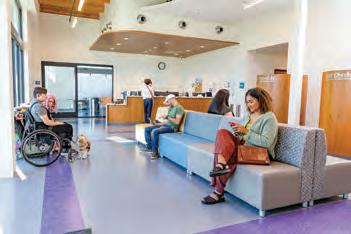
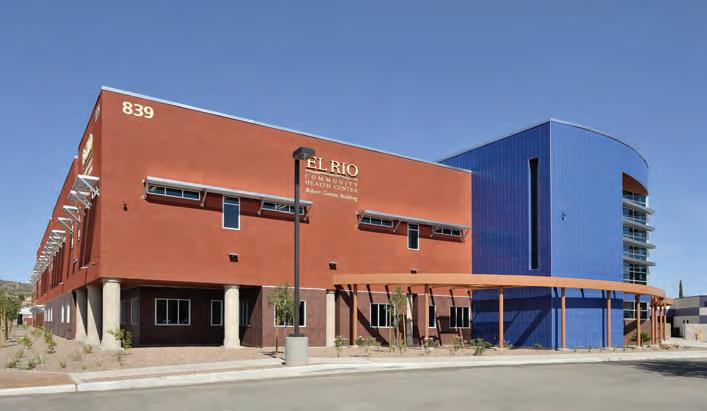
“El Rio Health is increasingly recognized as a national model for community health centers due to our innovative, patient-centered approach, our commitment to underserved populations, and our demonstrated excellence in care delivery and operational efficiency,” said Kuntz, citing accolades such as the American Medical Association Joy in Medicine Gold Award and the Health Information and Management Systems Society Davies Award. El Rio has also received certification from the National Committee for Quality Assur-
El Rio develops a strong partnership with the Pascua Yaqui Tribe that includes opening a site on the reservation.
El Rio Foundation hires its first executive director & assembles a Foundation Board charged with raising philanthropic support and public awareness.
ance Patient-Centered Medical Home and numerous accreditations from the Joint Commission.
“We are building a scalable, data-driven, quality-based model that we love to share with other health centers in order to expand access, improve outcomes, and lower total cost of care for all patients and communities,” said Kuntz.
The El Rio model is based on a transformational 2025 Strategic Plan that continued on page 102 >>>
El Rio acquires El Pueblo Health Center. Begins process of transitioning to electronic medical records across the organization.
In continuing the quest towards improving quality and patient safety, El Rio receives first National Center for Quality Assurance (NCQA) accreditation. In 2010, Joint Commission accreditation was added. Both accreditations are maintained to date.
continued on page 102 >>>
“I am proud of the growth because that means we are reaching more people in the various areas and bringing good healthcare to as many as possible.”
– Francisco Muñoz Board Chair El Rio Health

Administrative staff members, totaling over 300, move Administrative Headquarters to the Historic Manning House in downtown Tucson.
El Rio and TMC Health develop Joint Venture, HealthOn Tucson.
What began as a year to celebrate El Rio’s 50th anniversary turned into El Rio employees stepping up in big ways to support the Tucson community during the COVID-19 Pandemic.
El Rio receives first ever Gold level recognition from the American Medical Association (AMA) as a Joy in Medicine™ health organization. This prestigious distinction is granted to organizations that meet rigorous criteria and prioritize efforts to enhance well-being and professional fulfillment of physicians.
El Rio is the 20th largest Federally Qualified Health Center (FQHC) in the country, serving over 129,000 Tucsonans with an annual budget of over $300 million and over 1,900 employees.
that in real time,” he said.
Muñoz is grateful to the “visionaries” and healthcare providers who have supported El Rio’s growth, including its bold $40 million expansion with the largest facility yet at El Rio Stone Health Center opening in 2026.
“I am proud of the growth because that means we are reaching more people in the various areas and bringing good healthcare to as many as possible. We all deserve that much,” Muñoz said.
Medical and non-medical community collaborations are central components of the initiatives that are shaping national conversations around El Rio Health outcomes.
Partnerships with municipalities, social service agencies and nonprofits address socioeconomic, environmental and community-based barriers to health. Partners include the City of Tucson, the Community Food Bank of Southern Arizona, Old Pueblo Community Services, Interfaith Community Services, Emerge Center Against Domestic Abuse and countless other organizations.
“Our approach includes proactive screening for Social Determinants of Health and partnership with community organizations and services tailored to individual needs,” said Dr. Sonia Reidy, senior medical director at El Rio. “We have a robust team of community health advisors who help connect patients to our community partners for legal needs, housing needs, resources for
El Rio is now the 20th largest health center in the country by total number of patients served.
Patient Numbers:
Total Patients Served –129,045 served Children 0-17 37,024 29% Adults 18-64 73,465 57% Seniors 65+ 18,556 14% Annual Patient Visits – 558,579
Patient Characteristics: At or below 200% of poverty 93% At or below 100% of poverty 68% Patient by Insurance Status (2024)
our Nurse Practitioner Residency Program to train the workforce of tomorrow.”
Collaborations are further facilitated by the El Rio Foundation, which was started in 2001 to support El Rio through fundraising, outreach and education.
Powered by more than 65 volunteers, including a dynamic group of young professionals known as the Vecinos (“neighbors” in Spanish), the foundation has raised more than $46 million.
28% Annual Patient Visits: 558,579 Annual Patient Visits *BASED ON 2024 UDS
food and more.”
El Rio is also building collaborations that promote workforce development in response to the ongoing shortage of primary healthcare providers.
“We actively collaborate with federal agencies, public officials, universities and peer organizations,” Kuntz said. “We also collaborate with other community health centers and various entities through initiatives like the Southern Arizona branch of Arizona Health Education Center at El Rio (a partnership with the University of Arizona) and
“This is a true testament to the generosity of this community,” said Brenda Goldsmith, executive director of the foundation. “Almost all of the funds raised are private philanthropic dollars from individuals, foundations and corporations primarily here in Tucson, Arizona.
“I credit the foundation board, our team and the Vecinos for working hard to develop relationships, throw wonderful events, write grants and collectively engage people in considering El Rio as a potential charity of choice.”
Goldsmith said that opportunities for donor and patient engagement abound as El Rio moves forward in its mission to provide safe, quality and increasingly personalized medicine to all patients.
“At the heart of our vision for the future of El Rio is a continued transformation and continual movement toward patient-driven care,” said Kuntz. “This means empowering patients to actively participate in their health journey.”
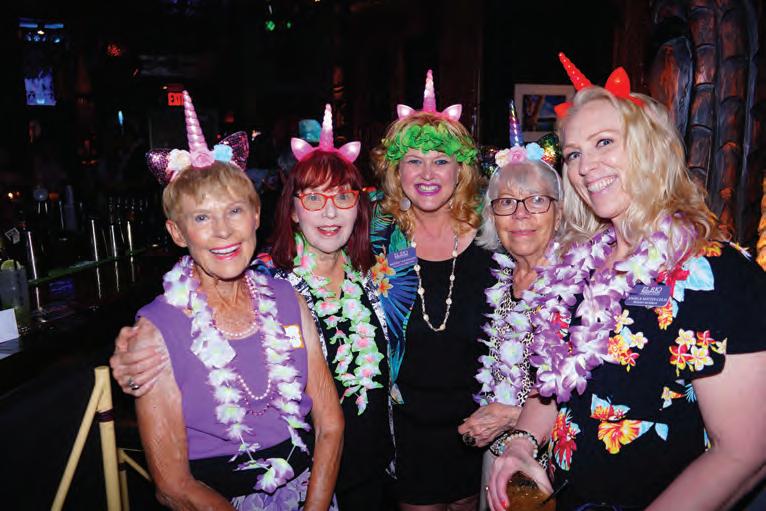
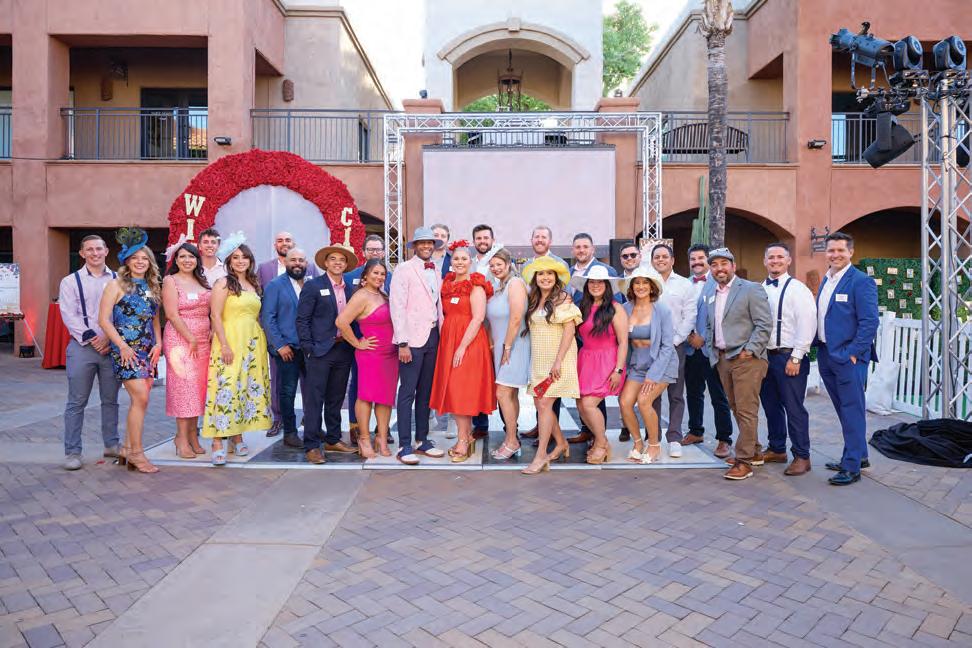
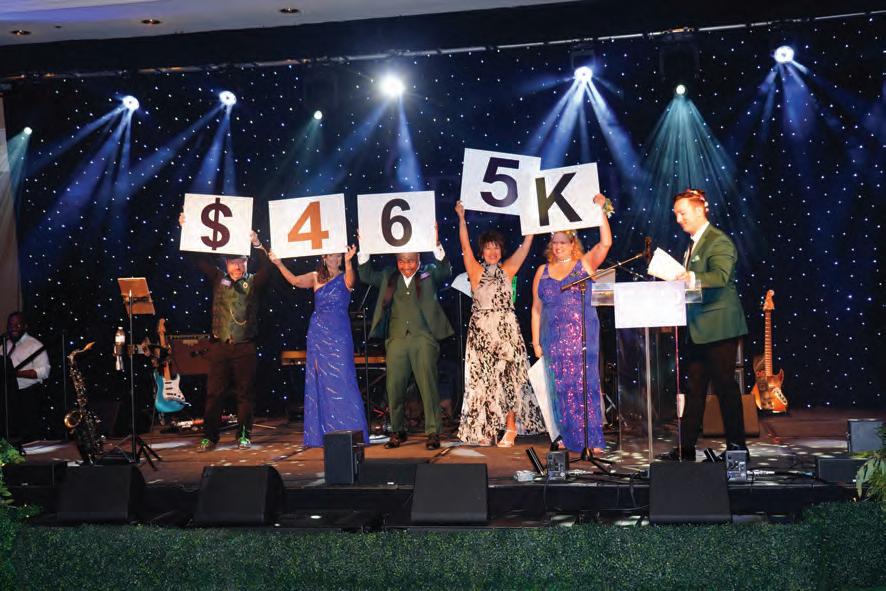
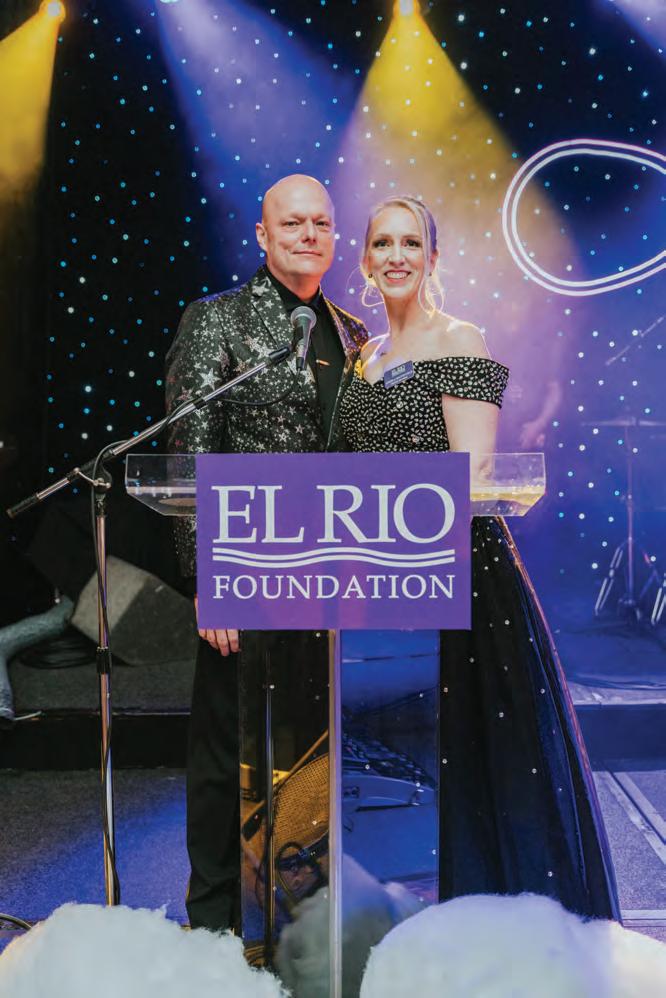
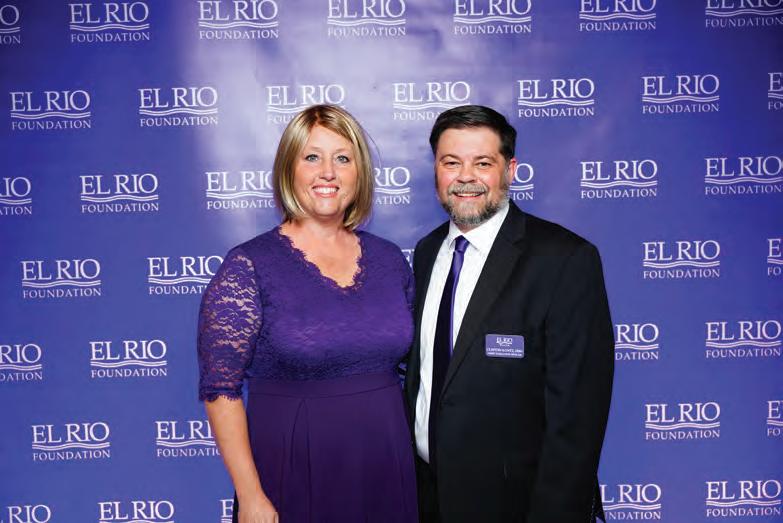
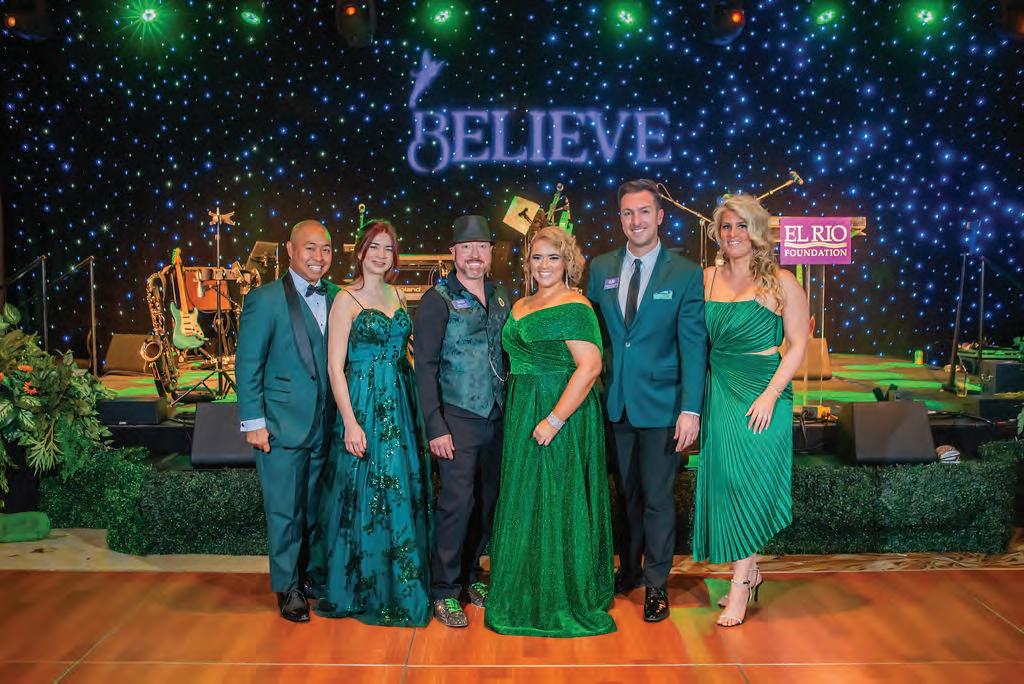



By Loni Nannini
There’s a unicorn on a mission in the Sonoran Desert, and its extraordinary power to heal is being brought to fruition by a group of generous donors, a dollar at a time.
“There is a lot of symbolism with unicorns being mythical and connected to healing,” said Brenda Goldsmith, executive director of the El Rio Foundation. “The unicorn represents many things, including a for-profit start-up company that grows to $1 billion in five years.
“I strongly believe that El Rio Health is a unicorn health center for the United States. We think outside of the box and are growing significantly and will continue to grow. We are focused on our mission of treating all people with dignity, respect and compassionate, quality healthcare.”
cided to activate the El Rio Foundation and the additional fundraising dollars raised from the community have helped us to grow and save lives. Because of our donor support, we can help people who don’t have insurance to access care.”
“Most community health centers in the U.S. don’t have foundations to support them with private fundraising.”
Goldsmith has been at the helm of the foundation for 21 years, championing El Rio’s evolution into the 20th largest community health center − by patient census − in the United States. Goldsmith credits the El Rio board of directors with visionary foresight in creation of a nonprofit foundation that has resonated with the entire community, garnering contributions of time, money and talent from volunteers, individual donors, foundations, businesses and partner organizations.
– Brenda Goldsmith Executive Director El Rio Foundation
“Most community health centers in the U.S. don’t have foundations to support them with private fundraising,” said Goldsmith. “In 2001, El Rio’s board de-
The foundation leadership recognized that El Rio’s role as a healthcare safety net was compelling to all Tucsonans, and in 2013 they recruited a group of young professionals to expand outreach and engage the next generation of volunteers.
El Rio Vecinos – vecinos is Spanish for neighbors − initially raised funds for children’s dental programs. The young professionals’ group has since extended support to cancer screenings, teen health and other programs, Goldsmith said. The annual “Vecinos Block Party” and other events have been vital to raising awareness and funds for El Rio programs.
The collective efforts have been a resounding success. The foundation has raised $46 million since inception and is in the midst of one of the most successful community health center capital campaigns in the U.S. In less than a year, the foundation has secured commitments of more than $16 million toward the $40 million state-of-the-art El Rio Stone Health Center slated to open in 2026 at River Road and Stone Avenue.
continued on page 107 >>>

“Release” Sculpture by

continued from page 105
When asked in 2024 to “fasttrack” the capital campaign with a stretch goal of $10 million, Goldsmith said leadership knew the effort had to be inclusive, much like El Rio.
“At El Rio we want to make fundraising fun, and we want to embrace all people at all levels of their abilities to give. We believe anyone can be a philanthropist with their support,” said Goldsmith.
The Blessing Project
In a stroke of philanthropic genius, the foundation team led by Campaign Chair Anthony Schaefer created “The Blessing Project” to reflect El Rio’s status as a healthcare unicorn.
“A herd of unicorns is called a blessing, and once we changed the name to The Blessing Project, we started receiving many more blessings with so many people joining us,” said Goldsmith.
Donors who contribute between $5,000 and $5 million over a fiveyear period become “unicorns” and receive recognition on the donor wall at the new facility. Prospective donors who tour El Rio are “sparkles” − the term for baby unicorns − and people who donate at other levels are “yum yums.”
Schaefer, an original Vecinos member who transitioned to the foundation board a few years ago, said leading the campaign is “the honor and the challenge of a lifetime in philanthropy.” He credits numerous El Rio donors, board members, patients and health center employees from all walks of life for gifting at unprecedented levels.
“It provides an opportunity for people to coalesce around a project that is greater than all of us, and everyone is all in,” said Schaefer. “People don’t just throw money at a project. They give to projects that have impact and positive ramifications for our community.
“This campaign has achieved so much success because people believe in its ability to open up access to many healthcare services and because they know how big the need
is. It is easy to get behind something that checks all those boxes.”
Schaefer believes the wide scope of El Rio’s programming is added incentive for involvement.
“There is so much happening to power community health through this community health center. I had no inkling that besides the main services, there are between 30 and 40 lesser-known programs that make a huge difference every day. El Rio is kind of a hidden gem that needs to be championed,” he said.
The breadth of programming is backed by El Rio’s ongoing commitment to personalized medicine in the increasingly technical world of healthcare.
“El Rio is focused on people-topeople service and communication and is using technology and AI in ways that enhance that, not replace it,” said Goldsmith. “In the primary care setting, human-to-human interaction and the trust built between providers, patients and other team members − whether that is a dentist, nurse practitioner or doctor − those relationships are everything.”
Those interactions and relationships have inspired Foundation Board President Angela MattixCelis, who experienced the impact firsthand through El Rio midwife services during the birth of her daughter. She continues to build connections with El Rio providers and fellow patients during her primary care visits.
“People’s lives are being changed because of El Rio,” said MattixCelis, who is humbled by the many Tucsonans who have stepped up “to create a legacy of healthcare that will last for generations.”
“After 55 years, my hope is that it will continue to grow,” she said. “Whether people choose El Rio as the provider for all of their healthcare needs or whether they are happy with where they are but want to help others, it is about the bigger picture. My hope is that El Rio continues to thrive and be a consistent standard for healthcare in Tucson and the nation.”
Receive an Arizona State Tax Credit When You Donate to El Rio Foundation
El Rio Foundation is an Arizona Qualified Charitable Organization (QCO). The Foundation accepts cash, credit cards, gifts, stock transfers, Donor Advised Funds and IRA distributions / RMDs, and estate gif ts. In 2025, up to $495/single; and $987/married filing jointly is eligible for credit. This dollarfor-dollar state tax credit is different than the Arizona schools and foster care tax credit. Scan the QR code above, donate online at Elrio.org/donate or mail your check to El Rio Foundation, 839 W. Congress, Tucson, AZ, 85745.
Your legacy can live on when you designate a charity like, El Rio Foundation in your estate plans. These generous donations help provide sustainability and support our health center’s care for 130,000+ people.
Contact us at foundation@elrio.org or 520-205-4947 to learn more or join us for a VIP clinic tour.
If you do not yet have a will in place, please visit https://www.freewill.com/elrio to create one for free to protect your loved ones and give to your charity.
For Clinton Kuntz, El Rio Health represents redemption for everyone who has struggled with access to healthcare in any way, shape or form.
It’s a concern that Kuntz, CEO of El Rio Health, understands all too well.
“Growing up in Appalachian Ohio, I experienced firsthand the challenges of limited medical care in rural areas,” said Kuntz. “This experience motivated me to help establish Muskingum Valley Health Centers in Morgan County, which provided essential services that were previously unavailable in the community.
“This health center later helped save my own daughter who was diagnosed with Type 1 diabetes,” he said. “I have lived what not having access to care is like and what is does to a community.”
That experience left an indelible mark on the husband and father of three and shaped the philosophy that he brought to El Rio in 2022 after nine years as CEO at Marana Health.
“I believe that everyone should have access to high-quality healthcare, regardless of any barriers. Our goal at El Rio is to remove all barriers to access, whether it is being able to pay for your healthcare, or just finding a doctor in your community even if you have the ability to pay for care,” said Kuntz, who has emerged as a leader in the growing community health center movement that encompasses 20,000 sites nationwide.
Pima County is home to four community health center networks, and El Rio is the largest. Now serving one in nine Tucsonans, El Rio is working to redefine perceptions about community health centers with a “whole-person care model,” according to Kuntz.
By Loni Nannini
“A ‘whole-person care model’ integrates primary care, dental, behavioral health and pharmacy services under one roof,” Kuntz said. “This approach not only improves access but also addresses physical, mental and social health needs in a coordinated way − improving health outcomes and removing barriers to care for the entire community.”
Kuntz said this integration of services is a huge driver in the rising popularity of community health centers, which are nonprofit entities that reinvest all revenue into patient services and community programs.
“We combine affordability, accessibility and comprehensive care in one place, making it easier for patients to get the care they need at one location,” he said. “El Rio also provides services regardless of a patient’s ability to pay, using sliding fee scales and helping people to navigate insurance options, which removes major financial barriers.”
The practicality and convenience of a “one-stop health shop” is enhanced by the sense of security that comes with the realization that patients can receive a continuum of care in spite of potential changes in insurance or loss of coverage. Kuntz said this peace of mind, in combination with the holistic, personcentered approach to care, makes for a healthier Tucson.
Patients also appreciate the 55 years of El Rio history that have forged strong personal and cultural bonds in many Tucson neighborhoods.
“Our community health centers are deeply rooted in the community, employing staff from the community and offering language support, which builds trust and comfort for patients,”
Kuntz said. “Located in medically underserved areas, they provide extended hours, same-day appointments, and telehealth options, reducing reliance on emergency departments.”
He emphasized that El Rio will continue its focus on prevention and chronic disease management with state-ofthe-art technology and new models of care as it moves forward with its largest facility to date − El Rio Stone Health Center. Located at the former Tucson Heart Hospital, the $40-million project will serve up to 24,000 patients annually, reducing wait times across the region.
True to El Rio’s model, the new facility will feature a full range of integrated services under one roof. In addition to primary care, pediatrics, women’s health, dental and behavioral health, it will offer a convenient drive-through pharmacy, on-site imaging, and lab services.
“The Blessing Project” capital campaign for the new center has been met with overwhelming support, which Kuntz views as continued validation of El Rio’s vital role in Tucson’s healthcare safety net and the community overall.
“Beyond healthcare, this project revitalizes a long-vacant hospital property, creates jobs, and strengthens our community. We look forward to bringing better access to care, more services and a healthier future for Tucson. El Rio has been here for 55 years, and we plan on being here for the next 55 and beyond,” Kuntz said.



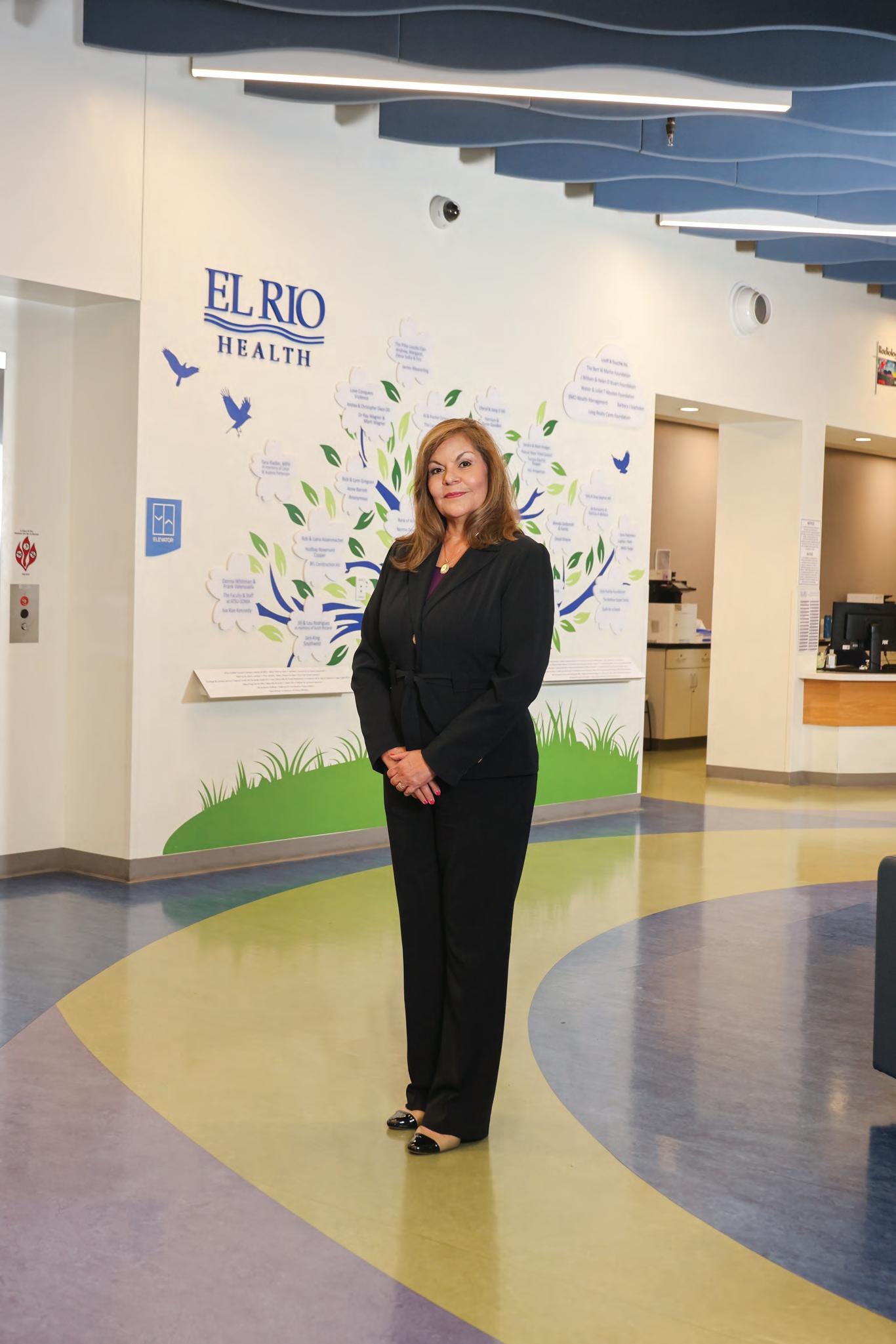
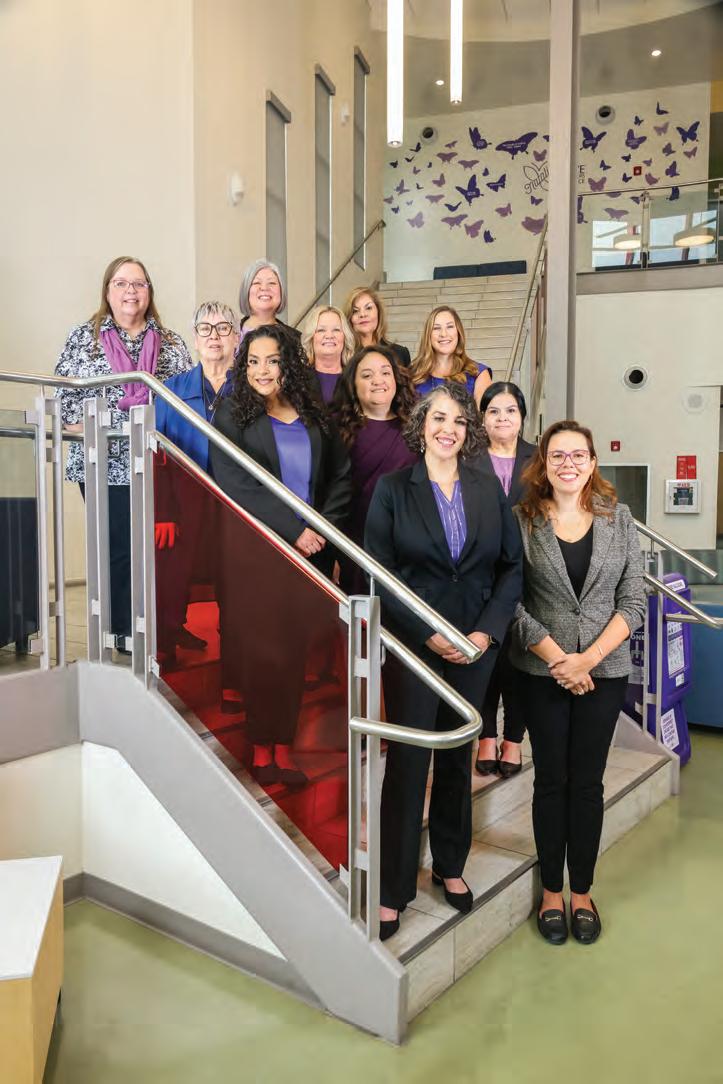
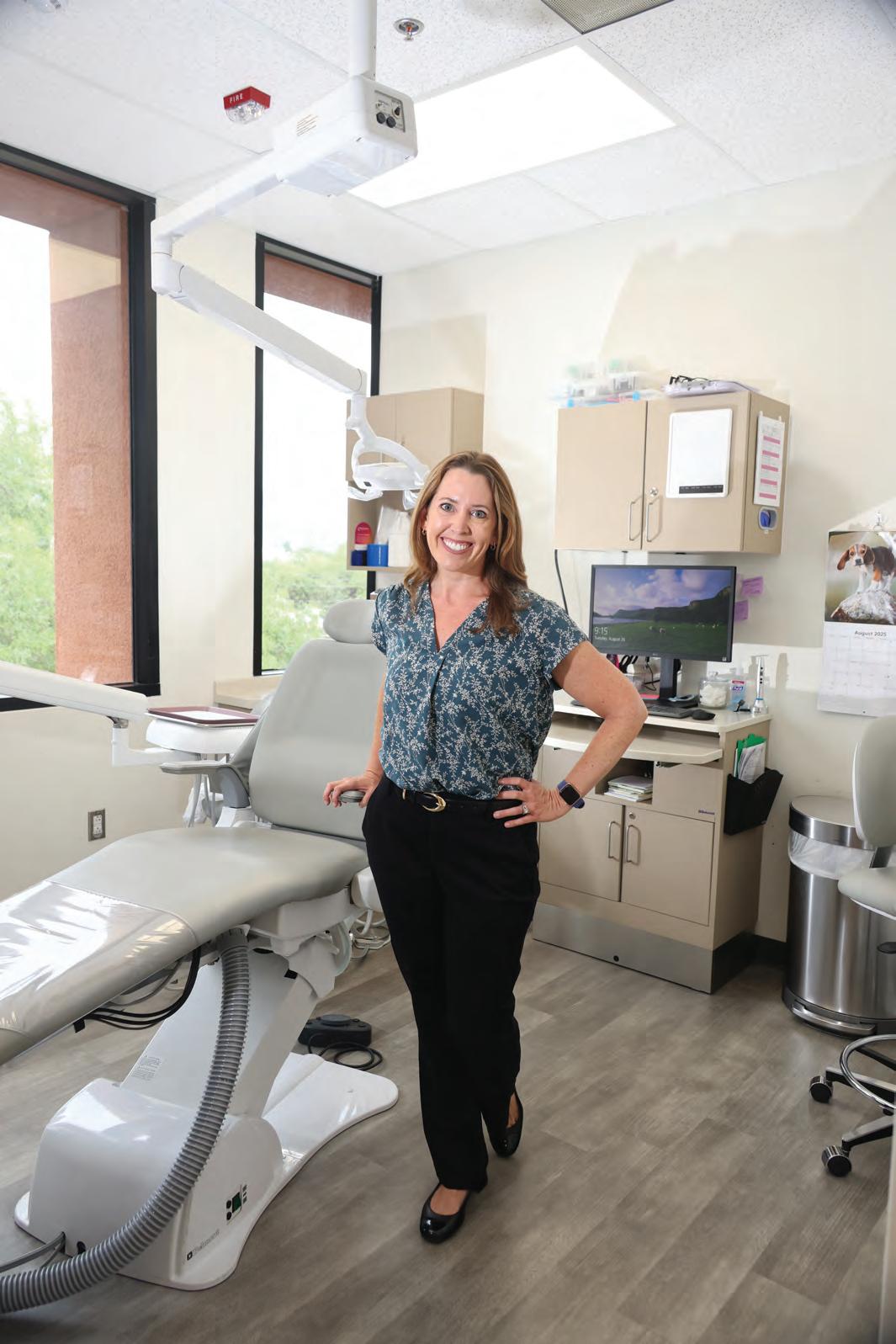


It’s said that health is wealth, and for more than a half century, El Rio Health has been on a mission to improve generational well-being in Tucson.
To accomplish this, the nationally recognized community health center integrates medical, dental and behavioral health with pharmacy, laboratory, radiology and other services under one roof for patients of all ages and all income categories.
“This means a child can receive their first pediatric checkup at El Rio, grow up seeing the same family medicine clinician, receive dental care throughout their life, and bring their children and grandchildren to us,” said Dr. Sonia Reidy, senior medical director at El Rio. “Being a ‘Health Home for Life’ means that El Rio Health is the constant in an often chaotic world.”
El Rio’s trifecta of service lines − medical, dental and behavioral health − is the gateway to a full spectrum of health and wellness services that prioritize clinical quality, patient safety and patient experience.
“We employ a team-based care model where clinical staff are empowered to proactively and independently address preventive care needs for patients though standardized workflows,” said Dr. Rajiv Modak, chief quality officer at El Rio.
“Utilizing technology, we also conduct robust outreach to actively engage patients in their own healthcare, even when they are not in our health centers. Quality outcome data is shared transparently with our providers and staff to drive continuous improvement. This has helped drive a culture of quality within our organization.”
On the medical front, primary care clinicians in family medicine, pediatrics and internal medicine provide preventive and ongoing care. Medical services
By Loni Nannini
extend to reproductive care − which is handled by OB/GYNs and midwives − and to preventive screenings including colonoscopies and mammograms.
Comprehensive offerings include sports medicine, addiction medicine, pain management through the Buena Vida Integrated Pain Clinic, physical therapy, nutrition and wellness offerings. Additionally, specialized care is available for chronic conditions such as asthma, diabetes, HIV and hepatitis.
Reidy said that El Rio’s patient-centric approach is designed to help people overcome barriers and achieve their health goals.
“As a patient’s medical home, El Rio Health offers on-site laboratories, radiology and pharmacy at most of our health centers,” Reidy said. “Our eligibility team can help with insurance enrollment, including the Arizona Health Care Cost Containment System (AHCCCS), Medicare, and the health insurance marketplace. We also offer a sliding-fee scale to ensure accessibility for those who do not qualify for health insurance.”
Since 1972, El Rio has been intent on supporting lifelong oral health, beginning with a child’s first tooth.
“Oral health is deeply connected to overall health and well-being,” said Amanda Pinder, DDS, chief of dental services at El Rio.
“Dental issues can affect nutrition, speech, self-esteem, and can even increase the risk for chronic diseases like diabetes and heart disease. By providing access to high-quality dental care, we’re not only treating teeth, we’re improving lives.”
Now the largest nonprofit dental program in Arizona, El Rio Dental offers comprehensive dental care to patients of all ages at seven sites citywide. General and pediatric dentists, endodon-
tists, oral surgeons, and a periodontist provide general hygiene, implants and acute care. In 2025, the team is projected to serve more than 50,000 unique patients through nearly 100,000 visits. New patients are welcome.
“We want every patient to feel empowered, respected, and cared for − regardless of age, income or background. We are here for Tucson, and we’re committed to building a healthier, happier community − one smile at a time,” said Pinder.
In response to community demand, El Rio’s behavioral health services line has grown 10-fold over the last five years, expanding inpatient and outpatient mental health and psychiatric services to 15,000 patients.
“At El Rio, we serve the whole person, and bodies and minds are connected. We want the community to know that we are here to provide quality, bestpractice mental health and behavioral health services to our patients,” said Vanessa Seaney, MSW, LCSW, CPHQ, chief of behavioral health integrated services at El Rio.
A dedicated staff of 160 psychiatrists, psychiatric residents, nurse practitioners, nurses, licensed clinical therapists, certified peer support specialists, and case managers provide outpatient programming for ages six and over. Providers treat patients dealing with anxiety, depression, grief and a full range of mental health disorders, substance use disorders, neurodevelopmental disorders such as autism and neurocognitive disorders like dementia.
Inpatient care is provided through a unique partnership with Carondelet Health Network; other innovative programming includes the Behavioral Health Street Medicine team, which engages directly with homeless patients on the streets and in shelters.
El Rio Health is powered by people, including a growing force of healthcare providers, health-adjacent staff and other employees that number more than 1,900.
As it celebrates 55 years, the nonprofit is implementing a dynamic plan for workforce development to support the increasing needs of its clientele. Leveraging collaboration with education, El Rio is generating a pipeline of healthcare professionals at a time when one in four Arizona adults lack a personal doctor and 28% haven’t seen a doctor for a routine check-up in the last year according to a 2024 study by University of Arizona College of Medicine − Phoenix.
“Recognizing the critical shortage of primary care providers nationwide, El Rio Health is investing in the future by training the next generation of healthcare professionals,” said Dr. Sonia Reidy, senior medical director at El Rio.
“We proudly welcomed our inaugural class of El Rio Family Medicine and Psychiatry residents in July 2025. After more than half a century of service, we remain dedicated to ensuring every Tucsonan has a healthcare home that is accessible and welcoming.”
Launched under the leadership of Dr. Felipe R. Perez, designated institutional official at El Rio, the Teaching Health Center model embeds graduate medical training within community health settings. In addition to family medicine and psychiatry, the model offers residencies in clinical pharmacy, and general and pediatric dentistry, as well as advanced practice training for nurse practitioners and certified nurse
By Loni Nannini
midwives. El Rio also hosts workforce experience pathways through the Southern Arizona Area Health Education Center.
“It’s a privilege to create educational pathways that respond to our region’s workforce needs,” Perez said. “My mission is to anticipate those needs, recruit learners who share our values, and cultivate a compassionate, skilled pipeline of providers for Southern Arizona.”
“Residents learn to manage chronic conditions, address social factors, and collaborate across disciplines − all while serving the unique needs of our community.”
– Dr. Felipe R. Perez, MD, FAAFP Designated Institutional Official El Rio Health
Perez said that El Rio clinical sites provide an ideal training ground in comprehensive, real-world care for residents and students. They also rotate through local hospitals and community providers to gain exposure to diverse care environments and strengthen regional partnerships. Partner organizations include the University of Arizona,
Pima Community College Health Professions, Pima Medical Institute, UA College of Nursing, Arizona Department of Economic Services, Job Path, Carrington College, JTED, NYU Langone and Pima County One Stop.
“Residents learn to manage chronic conditions, address social factors, and collaborate across disciplines − all while serving the unique needs of our community. This environment fosters resilience, advocacy, and clinical excellence,” Perez said.
The new Family Medicine residency program was supported in part by an $800,000 grant from the Diane & Bruce Halle Foundation that Perez said “reflects broad community belief in the power of place-based medical education.” The effectiveness of the training model has been demonstrated across the past decade through El Rio’s partnership with the Wright Center for Graduate Medical Education programs, which has produced more than 40 family medicine physicians, many of whom now work in Arizona.
“We have realized that growing our own workforce − rooted in accessible, comprehensive and affordable care − is the most sustainable solution. It’s about creating opportunities and building a robust and sustainable legacy of healing,” he said.
Building a legacy means not just training providers, but recruiting and retaining them.
“We truly take care of our employees, providing a comprehensive medical, dental and vision package that includes a VIP-line for their healthcare needs and an Employee Assistance Program
extended to not only employees, but also to their family members,” said Iris Matheny, manager of human resources and talent acquisition at El Rio.
Other benefits include paid time off; a 403(b) retirement plan with employer match; a 457(b) plan; a health savings account; a flexible spending account; life and disability insurance; and wellness programs including free exercise classes at El Rio Health centers. Additionally, El Rio offers career and leadership development and some tuition reimbursement. Employees may also qualify for state and federal loan tuition forgiveness.
Chief Human Resources Officer George Toy said that generous benefits, in combination with a caring culture and competitive salaries, contribute to El Rio’s outstanding retention rate, which stands far above the national average at 82%.
In addition to healthcare-related jobs, El Rio offers opportunities in information technology, human resources, finance and accounting, operations, quality and compliance, transportation, facilities and much more. Employment opportunities are updated weekly and can be found online at www.elrio.org/ careers.
Ultimately, Matheny said, El Rio Health is vested in the health, meaningful career growth and well-being of all employees.
“Whether you are directly or indirectly providing care for our patients, careers at El Rio Health connect you to serving our community with much greater impact.”
Designated Institutional Official at El Rio
Human Resources ManagerTalent Acquisition at El Rio
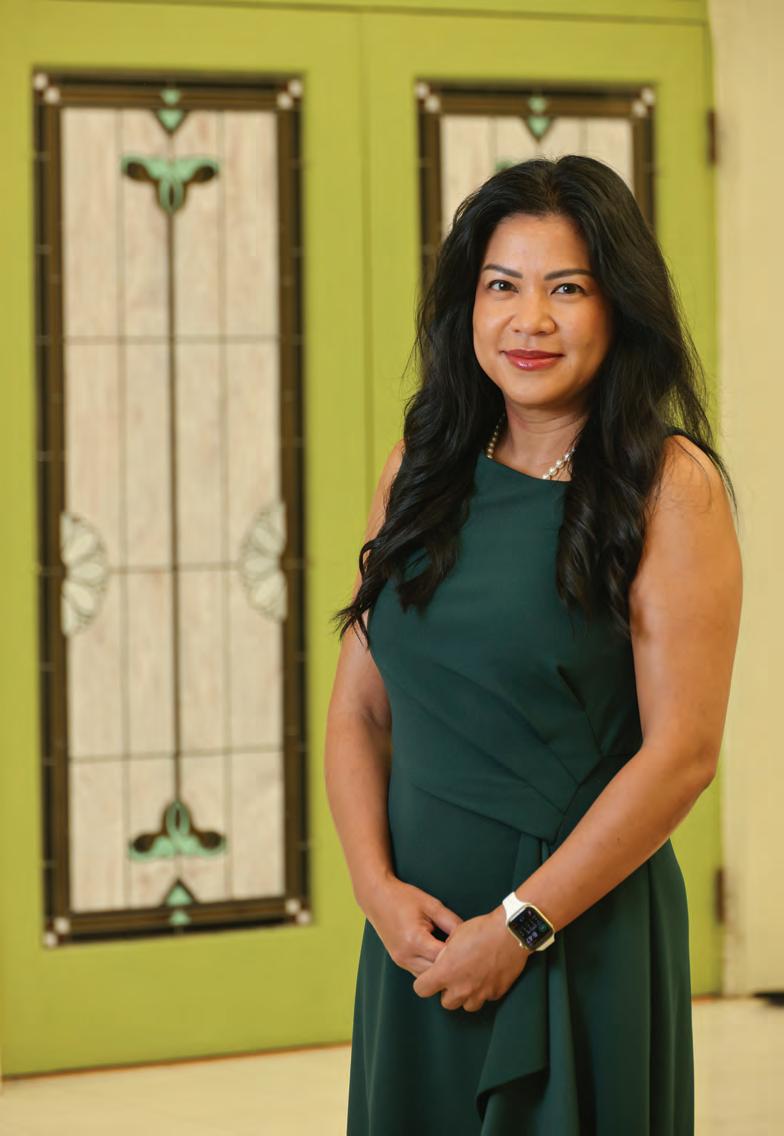
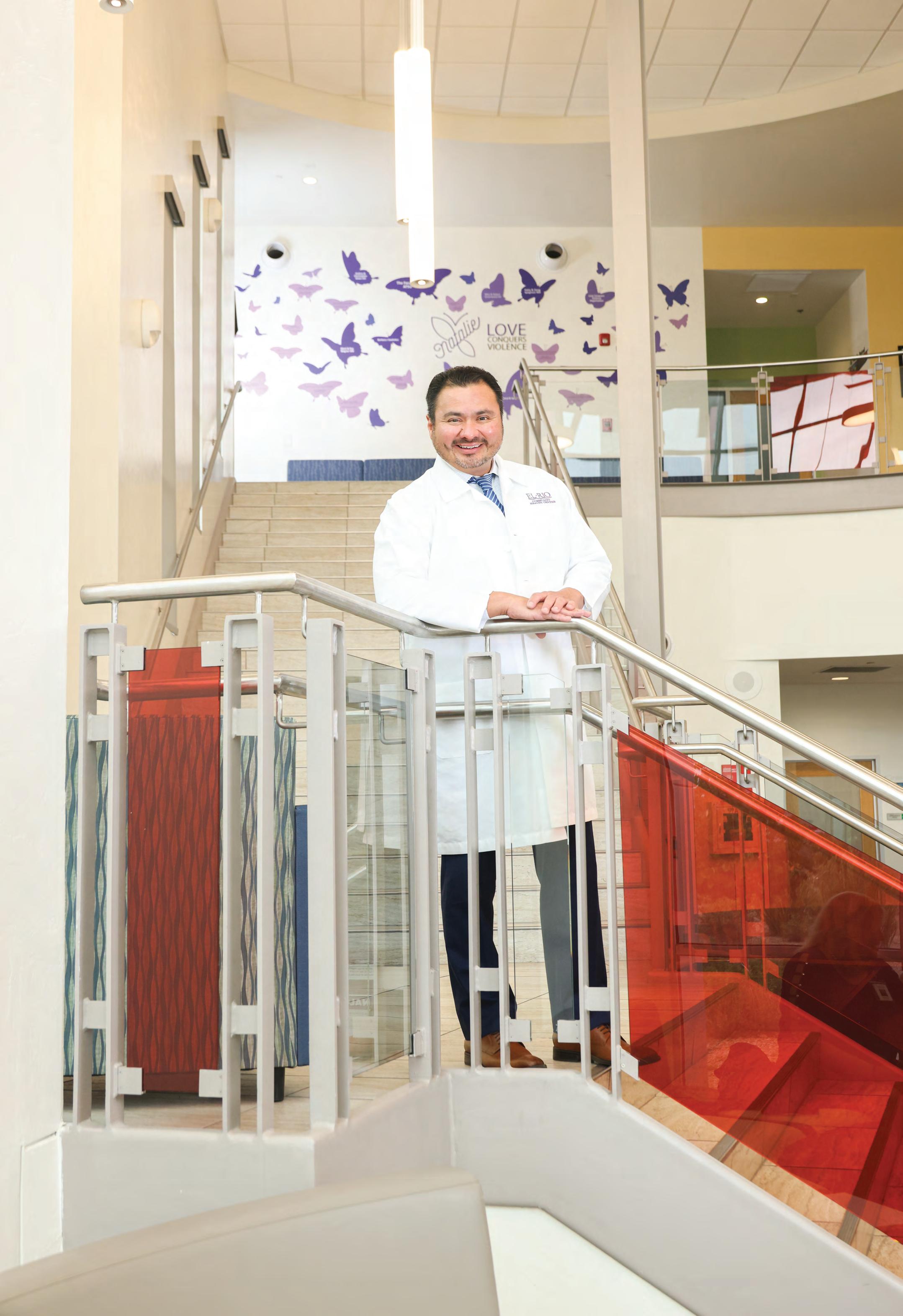
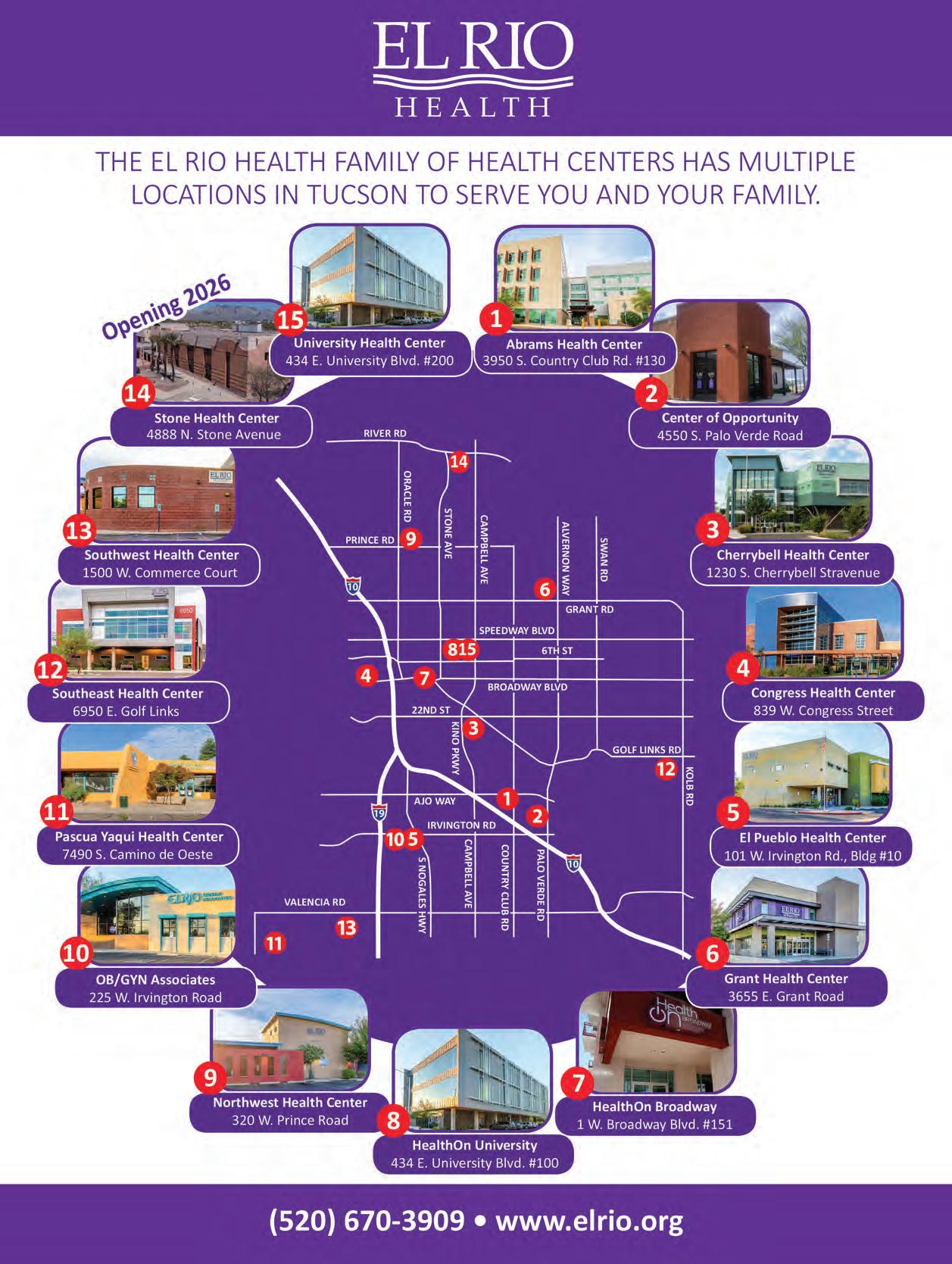
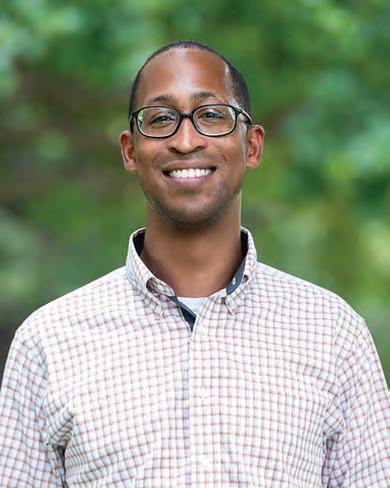
James Foreman was named Head of School for The Gregory School, a private, nonprofit, independent school serving udents in grades 5 to 12. Foreman has more than 17 years of experience in academic leadership and school administration spanning program development, enrollment management, and internal and external relations. He was most ecently at the Galloway School in Atlanta.
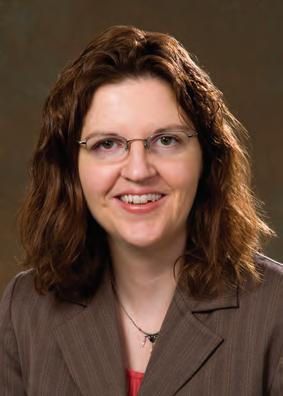
Anita Bell, director of University of Arizona Center for Innovation, has been appointed vice chair of the board of directors for the Bioindustry Organization of Southern Arizona. Bell has been integral to Southern Arizona’s startup ecosystem for more than two decades, directly supporting over 300 early-stage science and technology startups through mentorship and providing them with the tools and resources
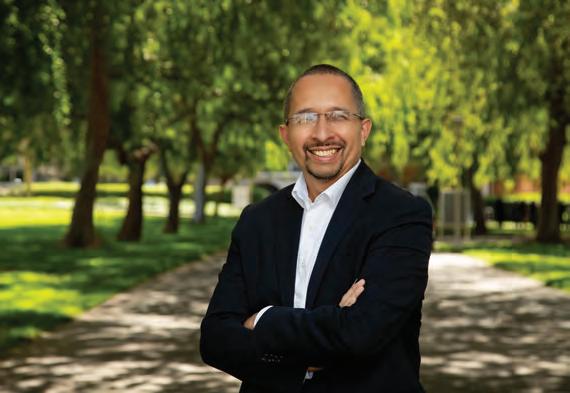
Johnny Cruz has been appointed chief communications and marketing officer for the University of Arizona. Cruz returns to UA, where he previously served in central communications for nearly eight years, including as assistant VP for communications. He recently served as chief communications and marketing officer at the University of California, Riverside, a role he held since 2018.
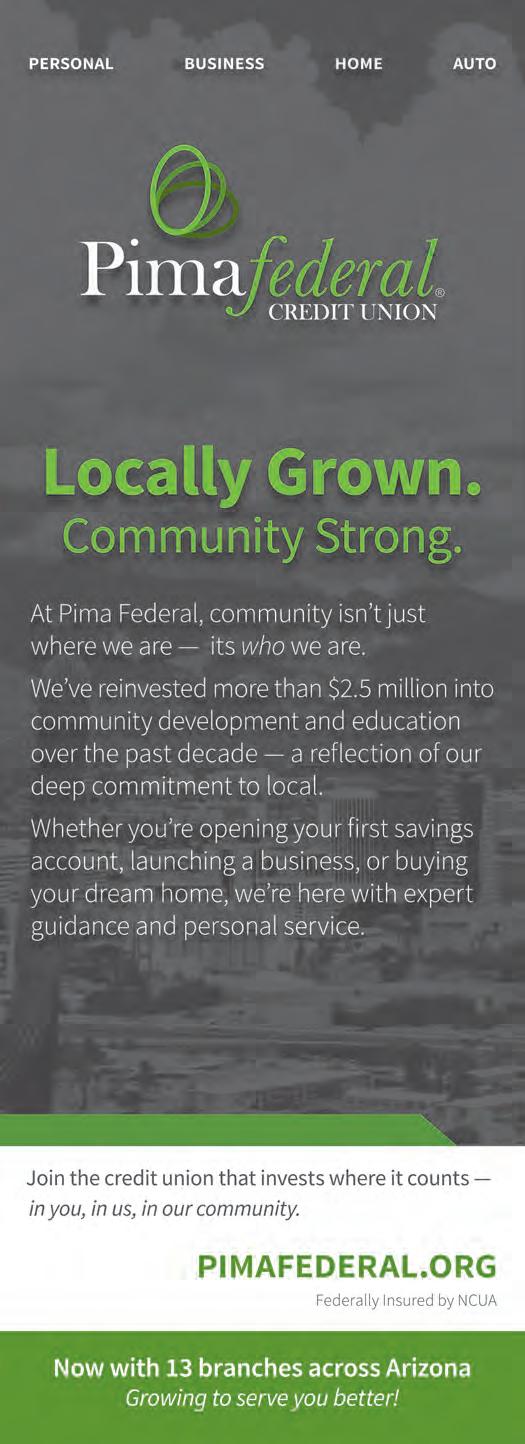
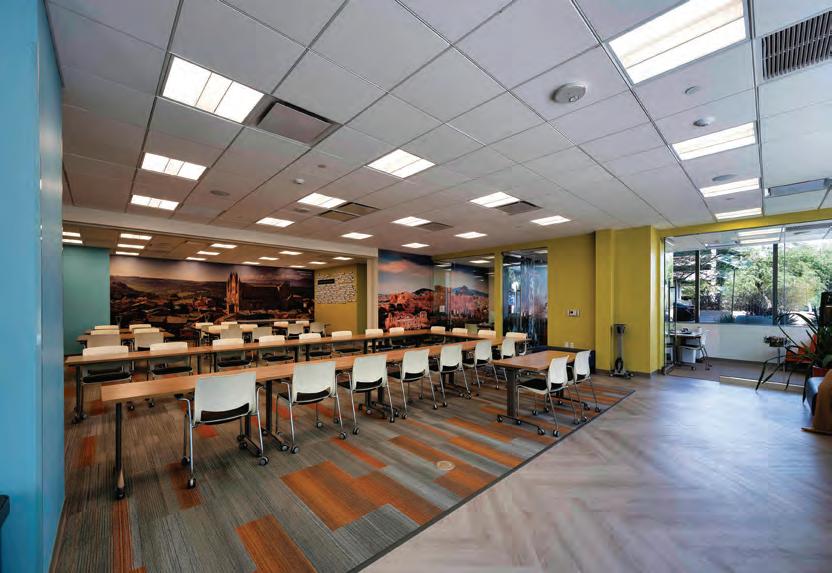

Project: Dorrance Office
Location: 950 N. Tyndall Ave., Suite 150
Owner: Dorrance Foundation for Education
Contractor: MW Morrissey Construction
Architect: Intertech Architectural Interiors
Completion Date: July 2025
Construction Cost: $19.5 million
Project Description: This tenant improvement included classroom space, restrooms, breakroom and business offices for a scholarship office.
Project: Velodrome
Location: 11800 S. Harrison Road
Owner: Arizona Kart Club, DBA Musselman Honda Circuit
Contractor: Lloyd Construction Company
Architect: M3 Architecture Engineering
Construction Management
Completion Date: Fall 2025
Construction Cost: $5 million
Project Description: Situated near Pima County Fairgrounds, this is the world’s first aluminum 250-meter Olympic-style velodrome with 40-degree banked turns. It will accommodate bicycle racing and other sports such as inline skating.


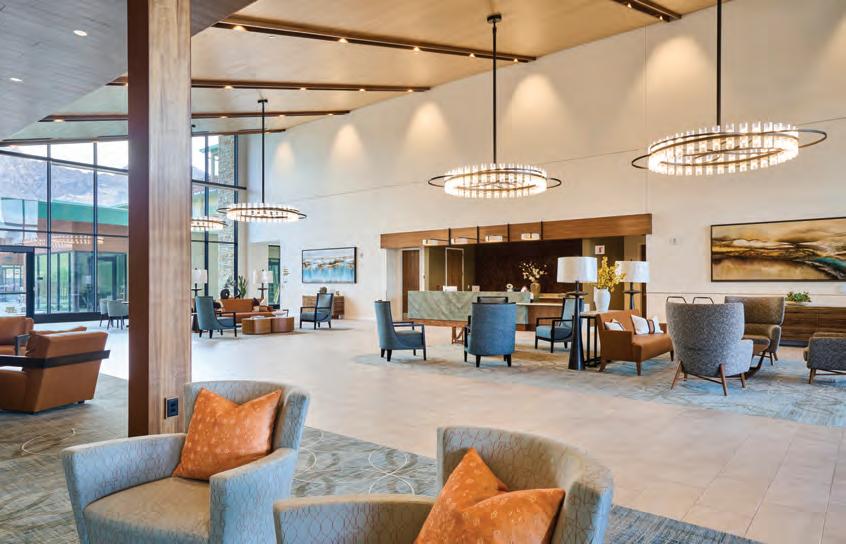
Project: La Posada at Pusch Ridge
Location: Oro Valley
Owner: La Posada
Contractor: Sundt Construction
Architect: Gensler
Completion Date: August 2025
Construction Cost: NA
Project Description: The five-story, 166-unit senior living facility includes a two-level parking structure, resort-like dining, pool, spa, gym and more.
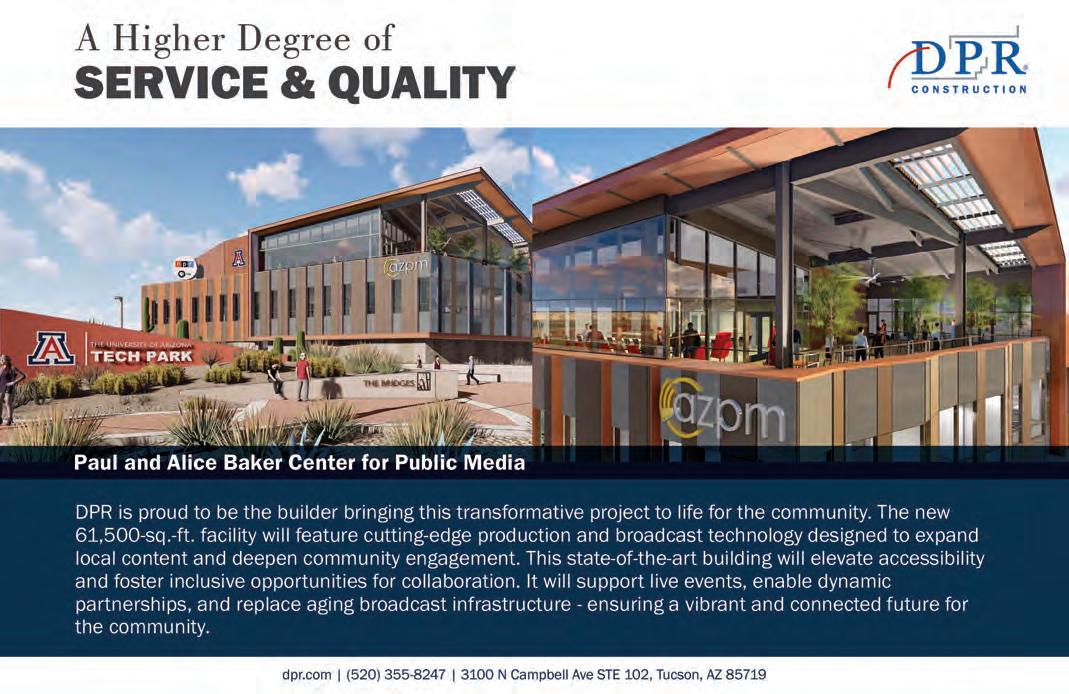


2025
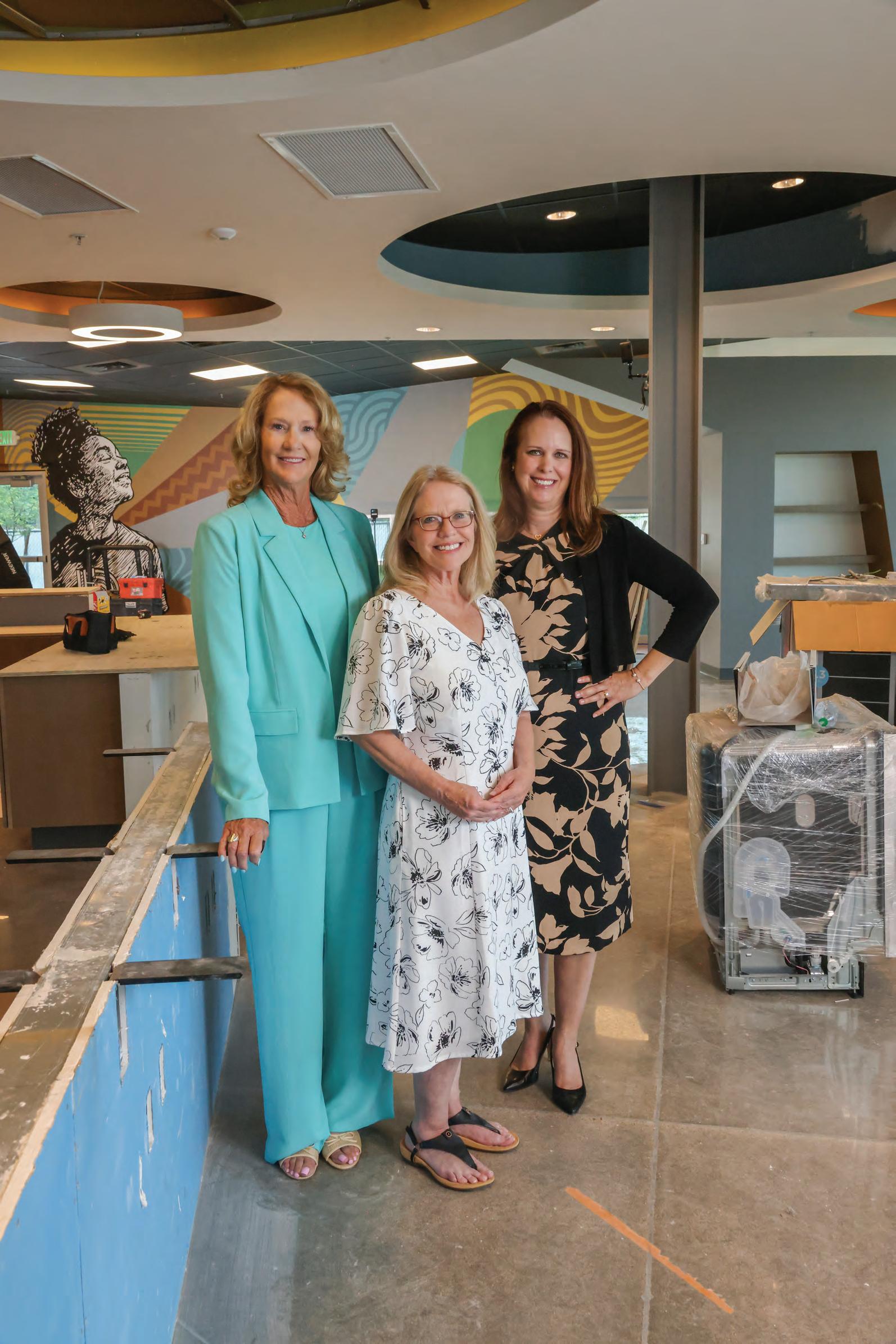
CEO
Vicky
2025 General Chair
BY

By April Bourie
Improving the lives of children in Pima County is always a worthy pursuit.
Many organizations in Pima County work toward achieving this goal, but funding can be difficult to find. That’s where the venerable Angel Charity for Children comes in. This year, it is raising more than $1.75 million to support eight children’s organizations.
“It’s a beautiful thing to see nonprofits doing so much great work in Pima County, and Angel Charity helps get them to the next level,” said Vicky Curtis, 2025 general chair of Angel Charity. “The organization is a game-changer in Pima County.”
Often referred to as the region’s “Halo for Hire,” Angel Charity has awarded more than $33 million in grants to children’s causes since 1983. The larger Impact Grants typically support brick-and-mortar projects and facilities, while Opportunity Grants fund programs and initiatives. Impact Grant beneficiaries for 2025 are Big Brothers Big Sisters of Southern Arizona and San Miguel High School, which received $856,697 and $568,000 respectively.
Big Brothers Big Sisters is beyond grateful for the grant that will fund the renovation of a newly purchased Mentoring Activity Center, said Marie Logan, CEO of Big Brothers Big Sisters. “The stars aligned,
and everything came together perfectly,” she said.
The new center will provide a space for “Bigs” (adult mentors in the program) and “Littles” (mentees) to participate in STEM workshops, cooking classes, arts, crafts and tutoring sessions. It will allow an additional 200+ children to interact with volunteers as they await matches with mentors.
“There are many people that would love to volunteer but can’t do the longer commitment for a year that we require from ‘Bigs.’ But they are more than happy to come in and work with several children in a group mentoring session for a couple of months,” said Logan.
This center provides a convenient hub for connections and mentoring, which has multiple benefits. Big Brothers Big Sisters research has shown that “Littles” are 20% more likely to attend college and have significantly improved earnings and economic mobility over their lifetimes.
“This grant means so much to us. We’re going to be able to have this activity center without any mortgage or construction costs, the majority of which was funded by Angel Charity,” Logan said.
Six organizations will also receive 2025 Opportunity Grants. Those are Angel Heart Pajama Project, continued on page 122 >>>
continued from page 121
Arizona Friends of Foster Children Foundation, Arizona-Sonora Desert Museum, Literacy Connects, Spreading Threads Clothing Bank and HopeKids.
The grants, which total $327,841, are incredibly powerful, said Andrea Lewis, executive director of HopeKids. The nonprofit provides events, activities and a unique support community statewide for children with cancer or other life-threatening medical conditions and their families.
Fulfillment of a $15,000 Opportunity Grant will fund additional HopeKids events in Tucson, resulting in 18 outings to Reid Park Zoo, Funtasticks Family Fun Park, Elevate Trampoline Park, movies and more.
“We are so grateful to Angel Charity for believing in our mission and making these additional events possible in Tucson,” said Lewis. “Now we have more opportunities for families to connect and make special memories during this difficult time in their lives.”
Angel Charity’s grants are made
possible by fundraising throughout the year, culminating in the magnificent Angel Ball, which begins at 5:30 p.m. on
“It’s a beautiful thing to see nonprofits doing so much great work in Pima County, and Angel Charity helps get them to the next level.”
– Vicky Curtis 2025 General Chair Angel Charity for Children
Dec. 13 at The Westin La Paloma Resort & Spa. The black-tie gala features a cocktail party with casino games, gift shopping, a silent auction and raffle drawings of prizes worth more than $10,000, followed by a candlelit dinner and dancing.
Other fundraisers include the Chance Ticket Raffle, which features a first prize of $10,000 plus a seven-night stay for eight at a Tuscan villa. Second prize is $10,000 cash; and third prize is a $10,000 shopping spree at La Encantada.
Curtis credits generous individuals, donors and sponsors for making it all possible. “Angel Charity has been granting miracles to Pima County for 43 years now,” said Curtis.
“I feel fortunate personally and am grateful that we have this organization in Pima County improving the lives of our residents. We are so grateful for our donors year after year who make this happen. Tucson is a very generous community.”
Biz
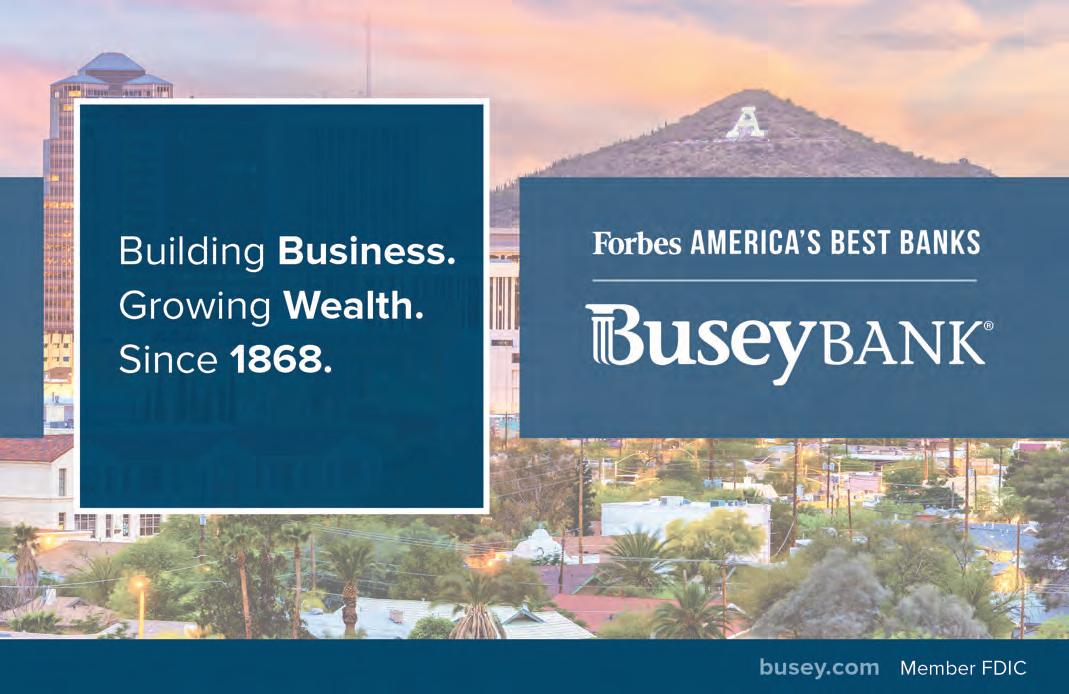


Angel Charity for Children is bringing its wings into the classroom with a $568,000 Impact Grant to San Miguel High School.
The private Catholic school supports students from underserved families through a Corporate Work Study Program that offsets 40% to 50% of tuition by placing each student in an internship program with a local business. Students work at internships one day each week and attend college-prep courses other days.
“The majority of our students will be the first in their family to attend college,” said Dave Mason, San Miguel High School president and CEO.
“The magic of the program is that it instills confidence in the students that they can succeed in these businesses while taking a college prep load four days per week. They can see themselves in the future working in C-suites and belonging in these offices. It often happens that after they get their college degrees, they will return to work in the companies where they’ve interned.”
Corporate partners can hire a team of four part-time students for a fee of $30,000, or hire one to three students for a pro-rated fee.
“Our cor porate partners really see the value in the program; 98% believe their students provide exceptional quality in the workplace,” said Mason. “It’s a long-term investment by our companies in workforce development to keep our homegrown talent here in Tucson and Southern Arizona.”
The school provides transportation to internships for all 286 students using buses, some of which are 20 years old. The Angel Charity Impact Grant will fund four 12-passenger vans and two 18-passenger minibuses to transport students.
“Without this incredible grant, we would have had to replace approximately two per year, which would have been really challenging for the school budget. The long-term impact on our multi-year budgeting will allow us to put money into resources for the students, salaries for the teachers, and muchneeded repairs to the campus,” said Mason.



By Loni Nannini
Larry Starks ended his three-minute pitch for the Tucson Juneteenth Festival with a modified quote from renowned abolitionist and journalist Frederick Douglass: “‘It is easier to raise strong children than to fix a broken man,’ but with your support we can do both.”
Starks’ message, at Social Venture Partners Tucson Fast Pitch Program, resonated with the audience at the historic Fox Tucson Theatre, garnering $145,000 of the record $360,000+ awarded to eight local nonprofits at this year’s event in April.
Tucson Juneteenth was honored with the coveted $10,000 Tucson Electric Power “Power to the People” award and a $100,000 endowment from Arizona Complete Health, which is the first of its kind in the 10-year history of Fast Pitch.
The funds are game changers for the all-volunteer nonprofit, according to Starks, president of Tucson Juneteenth Festival.
“I feel so blessed by these donations and sponsorships and the endowment. The endowment solidifies us as an entity, an agency and a community organization that is here to stay,” said Starks. “An endowment is in perpetuity. It is forever, so it shows that people believe in the mission of Tucson Juneteenth and everything we are doing for the community, not just for that day in June, but throughout the year.”
That mission began 55 years ago in the A Mountain neighborhood as a day of music, food and celebration orga-
nized by Bobby Dixon, Terry Wayne Dixon, Morris Doty and Robert Foley. They were inspired by the Juneteenth Festival started in Galveston, Tex., to commemorate June 19, 1865 – the date that enslaved people in Texas were informed of their freedom.
Juneteenth is the oldest known celebration of the end of slavery in the United States.
Starks emphasized that the Tucson Juneteenth Festival remains a community-oriented event that welcomes everyone while promoting education and advocacy about Juneteenth and African American culture.
“This is not a Black holiday. We want people to understand that it is a holiday brought about on American soil with Americans who happen to be Black,” said Starks. “When we come together, this celebration is about bringing community.”
The 2025 celebration at Kino Sports Complex welcomed more than 5,000 attendees. In addition to music, entertainment and food, the event featured speakers, art and cultural exhibits, a kid zone, vendors and community resources.
“We are better together. When people come to the Juneteenth Festival, they see what Tucson, Pima County and Southern Arizona have to offer at its best,” said Starks.
“People are there to enjoy the vendors, the music, and to talk to each other. It is about who we are as people, not judging by color, religion or politics.
We come together to celebrate as people who are free.”
Starks is dedicated to engaging individuals, businesses and other nonprofits and creating collaborations with local and state governments and charitable foundations.
“Tucson Juneteenth Festival is cultivating a community of unity while celebrating African American culture and history,” said Brittany Battle, director of Fast Pitch Tucson. “They often say that Tucson Juneteenth is a ‘movement and not a moment,’ and they have been bringing the community along for this movement.”
The movement has expanded to include year-round initiatives such as the Black Men’s Healing Space, monthly meetings that prioritize mental health and connect Black men in healthy ways; and the Legacy Program, which focuses on teaching self-responsibility and selfdetermination to young Black men who have been involved with the justice system. The program includes a trip to the Legacy Museum in Montgomery, Ala., to examine the roots of slavery.
“Our Legacy Program was created out of our call to action to reach young men of color at an early age,” said Starks. “We know we have to be there for them, and it is better to do that when they are young and willing to listen.”
For more information or to support the Tucson Juneteenth Festival, visit https://tucsonjune19.org/.
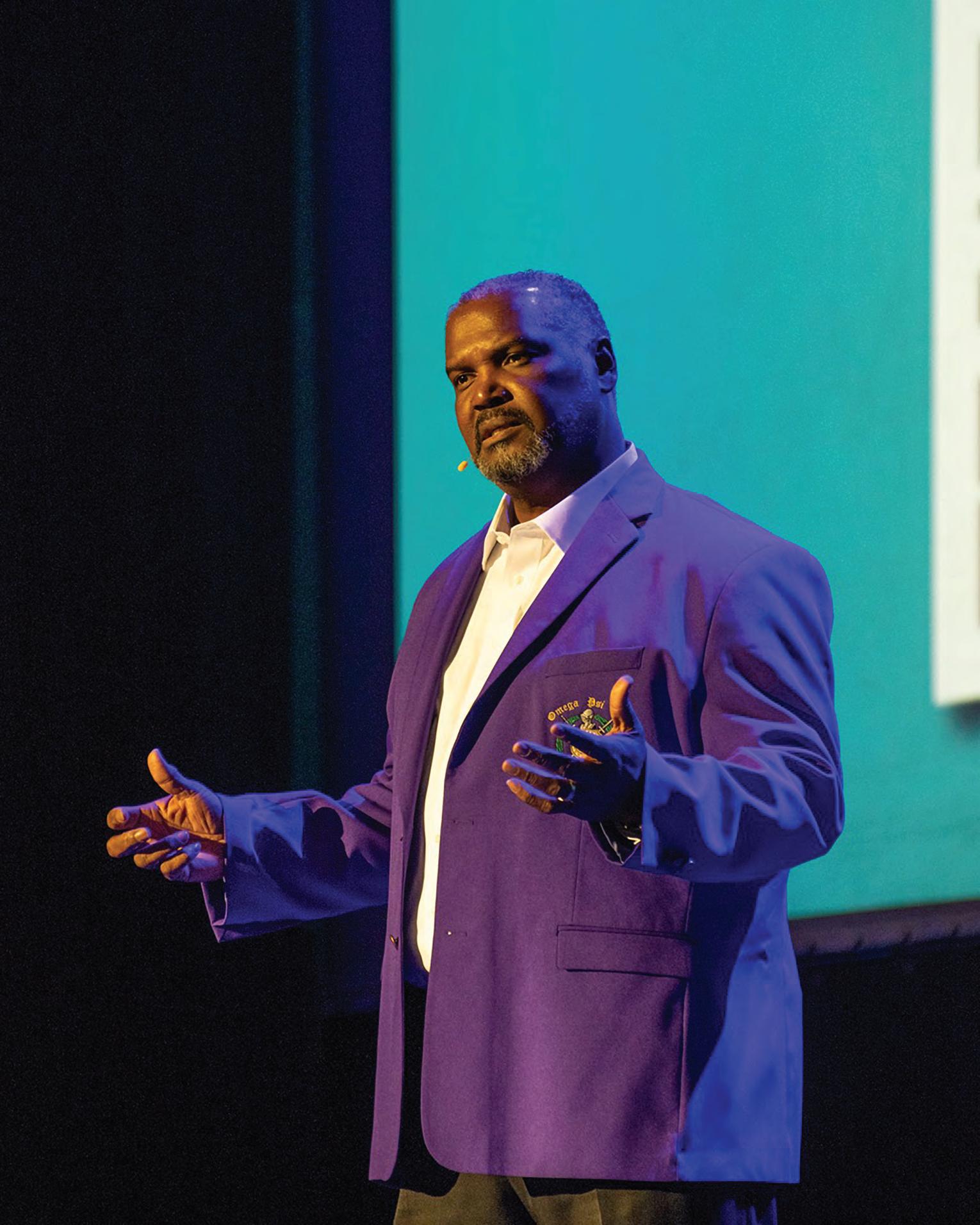

Kristen Garcia-Hernandez CEO Girl Scouts of Southern Arizona
BY



By Christy Krueger
While selling cookies and earning badges have long been recognizable traditions of Girl Scouts, today’s troop members see a more worldly view of their scouting experience.
They’re being prepared for leadership positions, high-tech jobs, maletraditional roles, and skills they can use throughout their lives. This year is especially noteworthy as Girl Scouts of Southern Arizona celebrates its 90th anniversary.
“It is truly a gift to have served generations of girls across Southern Arizona in all its uniqueness,” said Kristen Garcia-Hernandez, CEO of Girl Scouts of Southern Arizona. “From our border communities to the mountain towns, from desert valleys to urban neighborhoods, hundreds of thousands of girls have had a brave, empowering space to belong, to grow, and to lead.”
Girl Scouts of Southern Arizona, which started in 1935, has indeed served hundreds of thousands of girls throughout its history. The organiza-

tion allows for variance in structuring its troops. Some are formed through schools, sometimes a group of moms will start a troop, and some have been formed at Boys & Girls Clubs. The girls of each troop devise their own badges.
Although there may be significant differences between the troops, they are all built upon what is known as the four program pillars – STEM (science, technology, engineering, and math), the outdoors, entrepreneurship and life skills.
“Southern Arizona has its own strong history of leadership and innovation and our council ensures that girls here are seen, supported and celebrated,” said Garcia-Hernandez. “That’s why our presence matters.”

This year’s 90th anniversary events are well underway. During the summer, nominations were collected from members of the Girl Scouts of Southern Arizona communities for “Honoring 90 Women” as part of the milestone celebration.
Members of the council’s communities were invited to fill out nomination forms on the Girl Scouts’ website. Questions included the nominee’s field of success, leadership and how she demonstrates the values of Girl Scouts – honesty, compassion, leadership and service.
Garcia-Hernandez said mentorship is a big part of Girl Scouts, and “to honor the mentorship component is to honor women who are working examples and paving the way for the next generation.”
Former U.S. Rep. Gabrielle Giffords is included on the list of nominees. “She’s an alumna and has given back to the organization,” Garcia-Hernandez said. “Gabby spoke to the girls while in Congress and she’s maintained contact with the Girl Scouts.”
A second celebratory event, “90 Acts of Service,” will encourage groups and individuals to complete service projects that give back to Southern Arizona. One example is a troop that used part continued on page 130 >>>
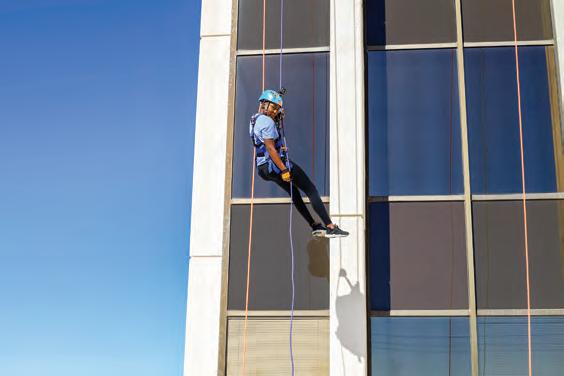

continued from page 129
of its cookie proceeds to help teachers at the girls’ school.
The 90th anniversary celebrations will culminate with the ScoutChella festival on Dec. 6 at Kino Stadium, 11 a.m. to 4 p.m.
“We want to throw a party and celebrate by connecting alumnae and bring people together to celebrate female leadership with activities and live, local female musical acts,” Garcia-Hernandez said. “We’ll honor all we’ve done over the years. We welcome everyone, and there are opportunities for past Girl Scouts, no matter where you grew up.”
At ScoutChella, the 90 honorees will have the opportunity to meet in a speed-mentoring event. “Each girl will get a package on the women,” GarciaHernandez explained. “If a girl is interested in robotics, for example, she’ll be connected with someone she can reach out to. The goal is to have the resources of 90 women.”
Such resources have long been a distinction of Girl Scouts of Southern Arizona.
“It is truly a gift to have served generations of girls across Southern Arizona in all its uniqueness.”
–
Kristen Garcia-Hernandez CEO Girl Scouts of Southern Arizona
For example, Visit Tucson’s Pamela Traficanti was a Girl Scout and returned 15 years ago to offer her time and support by serving on the council’s board of directors. “Girl Scouts is near
and dear to my heart,” said the national sales manager for Tucson’s official tourism marketing organization.
The board sets the strategic direction, oversees operations and raises funds for the council which includes seven counties and 4,000 scouts.
Through the year, fundraising events include Cookies and Cocktails; Glamping at Whispering Pines, the Girl Scout camp on Mount Lemmon; and Over the Edge, an annual November event in which scouts and members of the community rappel 17 stories down the highrise office building at 5151 E. Broadway.
“It’s a good way to raise awareness and it helps to overcome fear,” Traficanti said, having participated herself.
One of Traficanti’s favorite programs is Camp Fury. “It was started by two female firefighters and it highlights being first responders – from Border Patrol to police and firefighters. Even troops from Canada have come down to check it out. What inspires me is girls have saved lives by learning CPR, and they face their fears.”
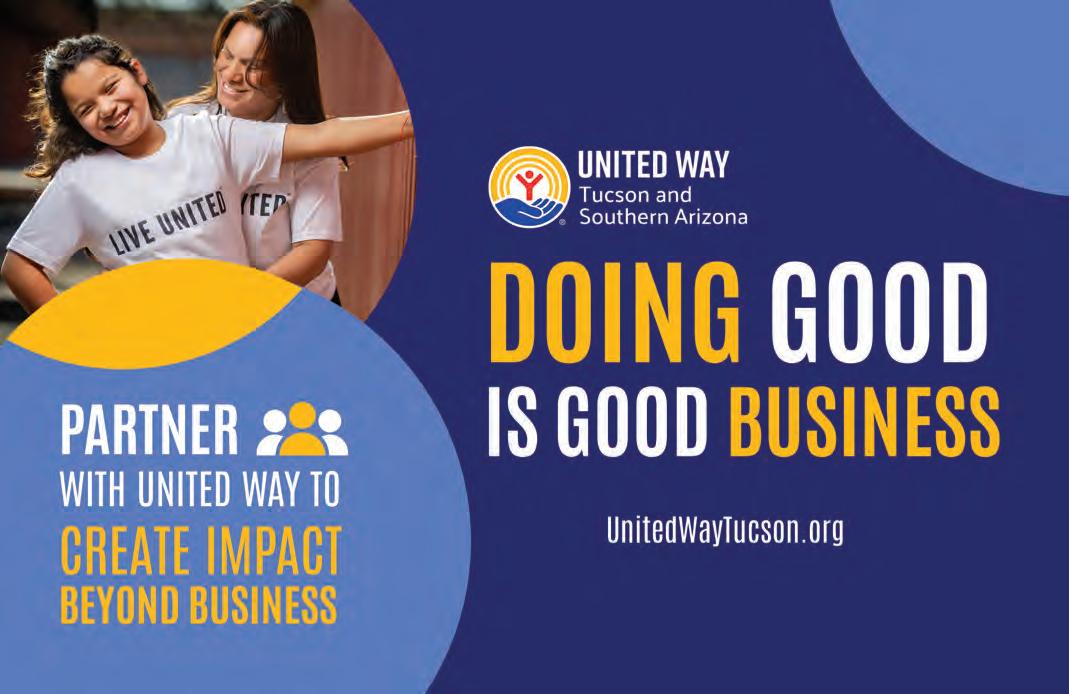


Vivace Restaurant owner Daniel Scordato grew up in a restaurateur family and has owned and managed several eateries of his own.
However, his new venture, The Treasury 1929, is his first foray into running an event venue, and he’s jumping in with both feet.
One of the first challenges he faced was how to fund it. “I was going to try to raise money at first, but I don’t like doing that. Instead, I sold my house to finance it,” said Scordato. “I know it was a major thing to do, but I decided I’d rather create this new venture than have a house that was close to being paid for.”
The building housing The Treasury 1929 was completed in 1929 for Consolidated National Bank. In 1935, the bank was sold to Valley National Bank, which later merged with JPMorgan Chase. Chase Bank was the last to reside in the space before vacating in December 2023. The Treasury 1929 now occupies the basement, first and second floors of the building.
Scordato fell in love with the space the first time he saw it. “When I saw the steps coming up from the basement and coming down from the second floor, I just thought it would be the perfect place for weddings,” he said.
Its Italian Renaissance Revival design is lit by two original chandeliers that each cost $1,000 in 1929. The first floor features Tavernelle Rose marble countertops, pink Tennessee marble floors with a Tennessee marble border, and 14
By April Bourie
scagliola columns supporting a secondfloor mezzanine.
The basement is designed as a speakeasy and features booths used for photos and for guests to use vintage-looking phones to leave messages for the bride and groom. The safety deposit box room has been transformed into an area where guests can relax and enjoy a drink until the festivities begin.
The groom’s changing room is also located in a vault in the basement. On the second-floor mezzanine, the bride and her bridal party can change in another vault, and an adjacent room has been transformed into a mini salon with several chairs set in front of individual mirrors. Original artwork is displayed throughout The Treasury 1929. Murals painted by the renowned Dutch-born artist Anthony B. Heinsbergen depict Tucson’s history and business evolution.
A professional kitchen was added to the space on the first floor. The food is often prepped at Vivace and then cooked onsite at The Treasury 1929.
“Unlike many event venues that have warming kitchens and hold their food in warmers for hours and hours, our food is cooked here and held for 10 minutes at the most in the warmers, so everyone appreciates that they are served real food,” said Scordato.
Although weddings of up to 200 people are the main events held here, others have also been hosted successfully, including nonprofit and professional events, in addition to private holiday parties.
Scordato’s main goal at the location, no matter what type of event, is to match the building’s distinctive ambiance with a unique experience. “Our biggest thing we perform very well is a whole different experience for a wedding or event,” said Scordato. “What I do bring to this is a fresh look. I don’t have the mindset of how it’s always been done.”
The Treasury 1929 began hosting its own “Dinner Concerts,” featuring a pianist and other musicians as well as Arizona Opera singers. These are open to the public and offer an intimate experience where attendees of up to four people have their own table. Cocktails are served, followed by a half hour of entertainment. Then a full dinner is served, followed by another half hour of entertainment.
“I don’t know anyone else who is doing this. It’s like the old days where there were elegant dinners and everyone dressed up in a coat and tie…but we won’t make them get that dressed up,” said Scordato. “I want to keep working on new ways to entertain customers here along with food and drink where it’s unique because of this special building.”
In the future, Scordato envisions throwing Roaring Twenties parties, Halloween parties, ballroom dancing and many other events. “I want to do something that not everyone is doing and add a little twist to it because the building is so unique and beautiful.”
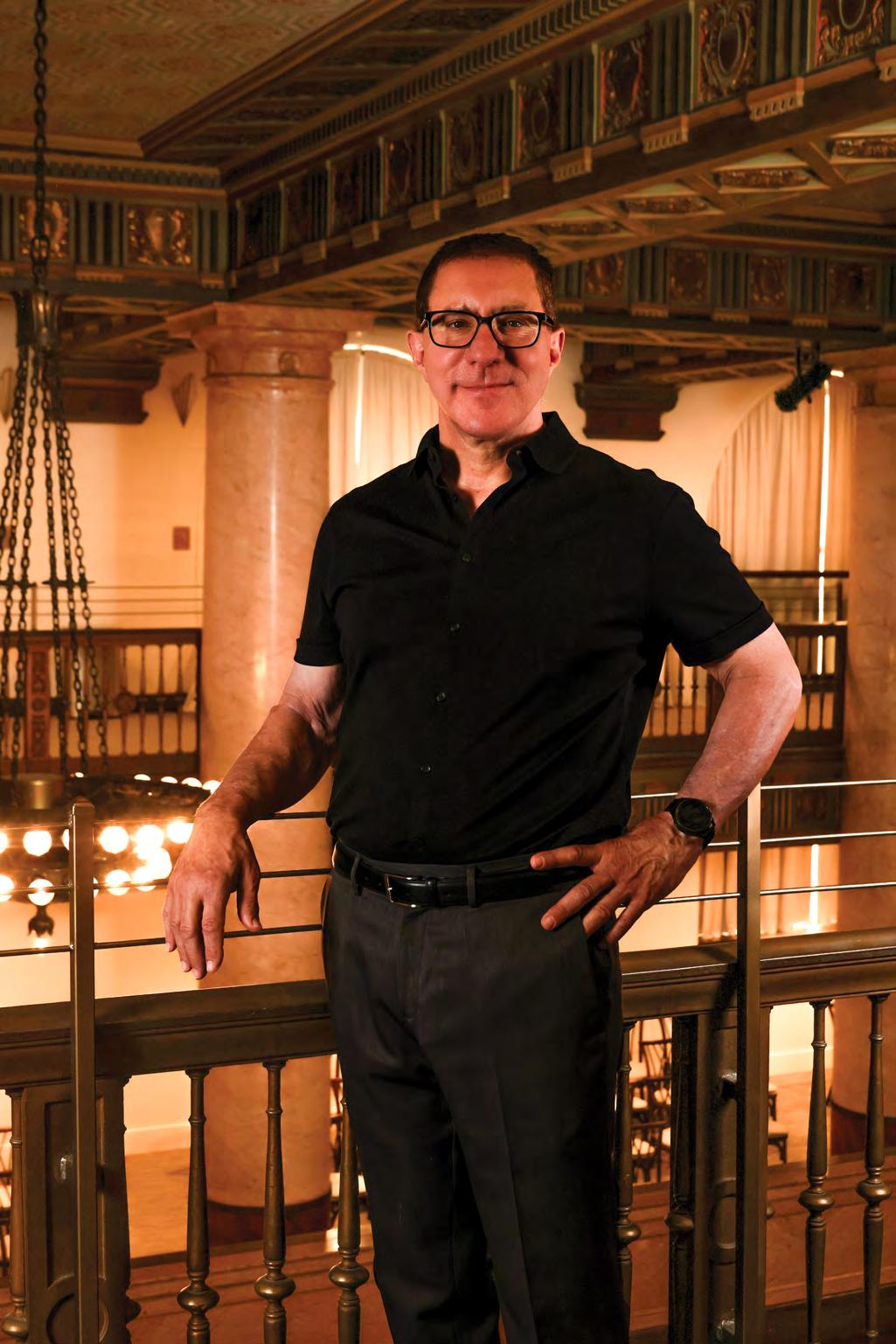







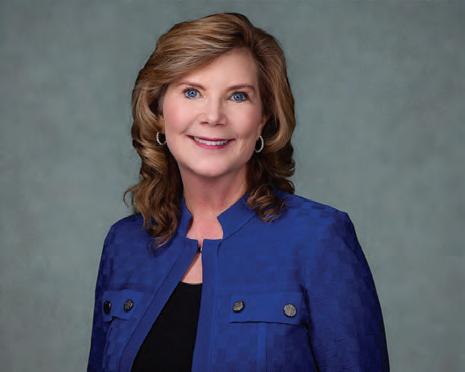
The Bioindustry Organization of Southern Arizona appointed Nannon Roosa, PMP, CPA, FACMPE, managing partner of Crescent Edge, as chair of its board of directors. Roosa is a strategic leader and investor with a strong record of guiding bioscience companies from concept to commercialization. She is a member of Arizona Tech Investors and the Flinn Foundation’s Bioscience Roadmap Steering Committee.

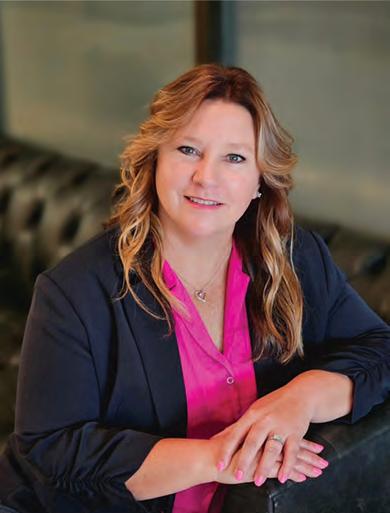
accounting, Vos brings a wealth of expertise in audit services and a commitment to delivering exceptional financial insights and compliance support to clients. Vos will oversee operations in the Tucson office while continuing to provide specialized audit services.
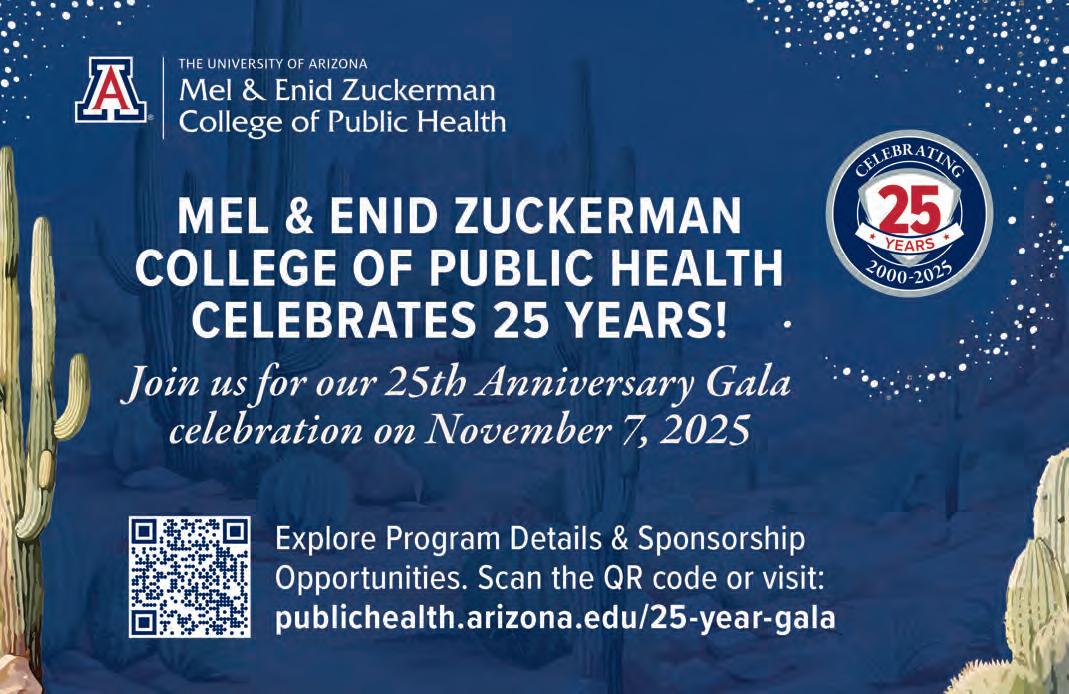
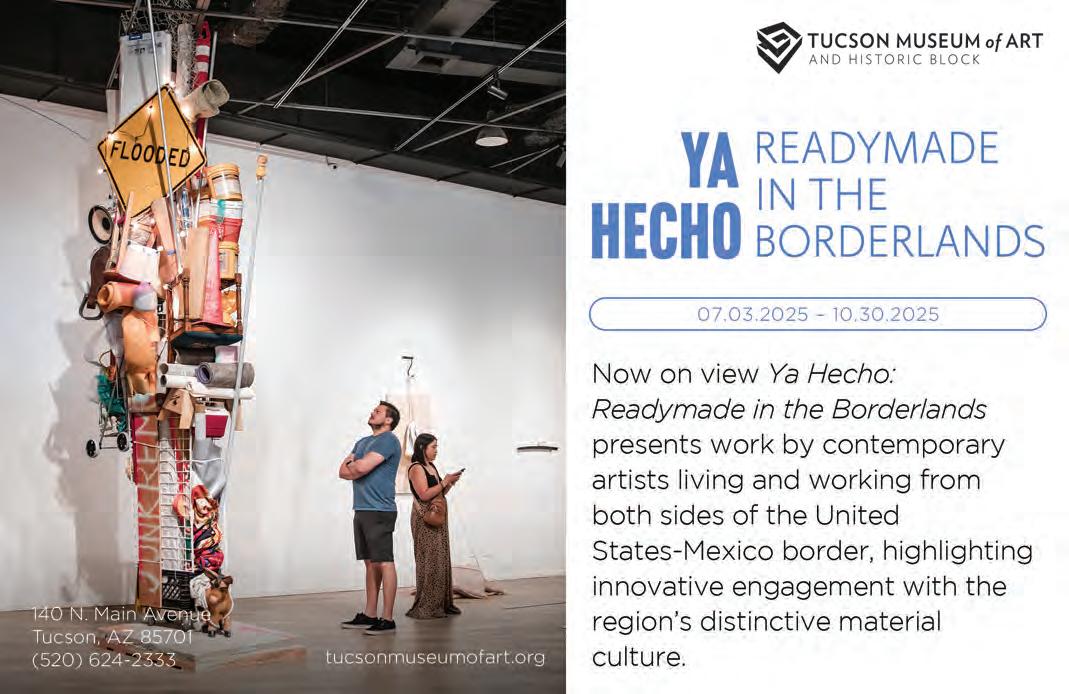


Hosted by The Rotary Club of Tucson, the 2025 Tucson Classics Car Show will be held from 10 a.m. to 4 p.m. on Saturday, Oct. 18 at The Gregory School. The event is sponsored by WeBuyHouses.com
The annual car show has raised over $2.8 million for local nonprofits since the first one in 2007. The 2025 top nonprofit beneficiaries are Pima Community College Foundation Center of Opportunity, which is receiving a third-year donation commitment from the Rotary Club of Tucson Foundation as a result of proceeds from the show.
With this year’s contribution, it’s an-
19TH ANNUAL TUCSON CLASSICS CAR SHOW
Saturday, Oct. 18, 2025
10-4 p.m.
The Gregory School 3231 N. Craycroft Rd. Entry Fee: $10
Children 17 and younger get in FREE with a paying adult
ticipated that over $225,000 will have been donated to PCC’s state-of-the-art learning center on the grounds of the Center of Opportunity campus.
The two other beneficiaries are the Amphi Foundation Educational Community Home Outreach program and JobPath. Additional nonprofits will benefit from selling raffle tickets by receiving 40- 50% of each ticket price for every ticket sold prior to the event.
This year’s field is already fully committed with over 420 classic vehicles on the field at The Gregory School. The featured vehicles are two treasured classics: a 1933 Auburn and a 1937 Cord.



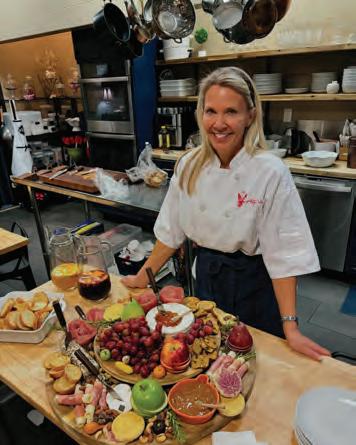
Heidi Yribar

By Tara Kirkpatrick
During the COVID-19 pandemic, Heidi Yribar found solace in completing daily projects devised by her Aunt Nancy, her favorite artistic relative.
On any given day, Yribar, a former corporate executive and author, would create a bountiful charcuterie board, sew a pillow covering, bake a delicious loaf of sourdough bread, create a centerpiece and more. The satisfaction of completing each project, and having a finished product, helped her navigate an incredibly isolating period for society.
Yribar has since turned this concept into a lucrative small business – Antsy Nancy: How to Skills for Home, Life and Happiness.
“Antsy Nancy provides a unique experience for businesses looking for opportunities to engage with their employees,” said Yribar, the company’s founder and CEO. “We offer cooking and baking classes, wine tasting and mixology, murder mystery parties, holiday activities, and so much more.”
In its four years in business, Antsy Nancy has hosted hundreds of groups for unique, creative classes as documented on its prolific Instagram page. From learning how to prepare a mouthwatering Beef Wellington to serving up Spanish tapas and creating a memorable holiday centerpiece to mixing a signature scent, Antsy Nancy offers an incredibly diverse calendar of events all year long.
Her most repeat clients? Companies
who love her classes for corporate team building.
“Stepping away from work and into the Antsy Nancy kitchen, our visiting team members bond over the freshest ingredients, sizzling pans and shared laughter,” said Melinda Rosetti, senior staff assistant for Hexagon. “It’s always a refreshing change of pace after daylong meetings, giving colleagues from around the world an opportunity to connect and build camaraderie in a relaxed environment.”
“Our Hexagon teams always leave Ansty Nancy filled with great food and great memories,” she said.
“It’s an absolute honor to have companies like Hexagon, Presidio Group Wealth Management, Nova Home Loans, HSL Properties...and Roche Tissue Diagnostics select Antsy Nancy again and again for their team building experiences,” Yribar said. “Each of these companies has worked with Antsy Nancy three to 10 times.”
Demand has grown so much for Antsy Nancy classes that she recently expanded her teaching kitchen at her primary location, 5655 E. River Rd. Antsy Nancy has also partnered with the nonprofit Southern Arizona Arts & Cultural Alliance to offer classes at its expansive CATALYST space in Tucson Mall.
Additionally, Yribar works with golf and tennis clubs across the region that bring her innovative classes to their members in-house. Her annual summer
camps for kids have become a huge hit for families and brides-to-be and youngsters love to celebrate their parties at Antsy Nancy. She also helps with programming for homeschool groups.
“There are so many things about Antsy Nancy that make me proud,” said Yribar. “The business has been profitable since year one, which isn’t the norm for a lot of small businesses, and I’ve created an environment that allows me to work with my children and one that they also see as a future for themselves.”
Indeed, her grown children, Griffin and Kennedy, are part of her vibrant young team that helps her manage and instruct the classes.
Looking ahead, Yribar wants to franchise her Antsy Nancy concept, within and beyond Tucson.
“I have a unique business model and one I believe will appeal to a lot of entrepreneurs that love to cook, entertain, craft, and decorate like I do,” she said. “A lot of new businesses come to market with a splash – presenting an awesome trend that does well initially and can fizzle over time. The flexibility in our business of offering ‘skills classes,’ both in-person and virtually, allow us to pivot and continually bring new and exciting classes to market.”
“What makes me most proud is the honor of serving customers as they celebrate their own lives and special events,” she said. Biz


